Quick filters:
Bamiyan road Stock Photos and Images
 Entrance Gate To Band-e Amir National Park With Snow Covered Road And Landscape In Winter, Bamyan Province, Afghanistan Stock Photohttps://www.alamy.com/image-license-details/?v=1https://www.alamy.com/entrance-gate-to-band-e-amir-national-park-with-snow-covered-road-and-landscape-in-winter-bamyan-province-afghanistan-image224673592.html
Entrance Gate To Band-e Amir National Park With Snow Covered Road And Landscape In Winter, Bamyan Province, Afghanistan Stock Photohttps://www.alamy.com/image-license-details/?v=1https://www.alamy.com/entrance-gate-to-band-e-amir-national-park-with-snow-covered-road-and-landscape-in-winter-bamyan-province-afghanistan-image224673592.htmlRMR1ENCT–Entrance Gate To Band-e Amir National Park With Snow Covered Road And Landscape In Winter, Bamyan Province, Afghanistan
 Winding road from Yakawlang to Bamiyan Center. Stock Photohttps://www.alamy.com/image-license-details/?v=1https://www.alamy.com/stock-photo-winding-road-from-yakawlang-to-bamiyan-center-85905610.html
Winding road from Yakawlang to Bamiyan Center. Stock Photohttps://www.alamy.com/image-license-details/?v=1https://www.alamy.com/stock-photo-winding-road-from-yakawlang-to-bamiyan-center-85905610.htmlRMEYN9DE–Winding road from Yakawlang to Bamiyan Center.
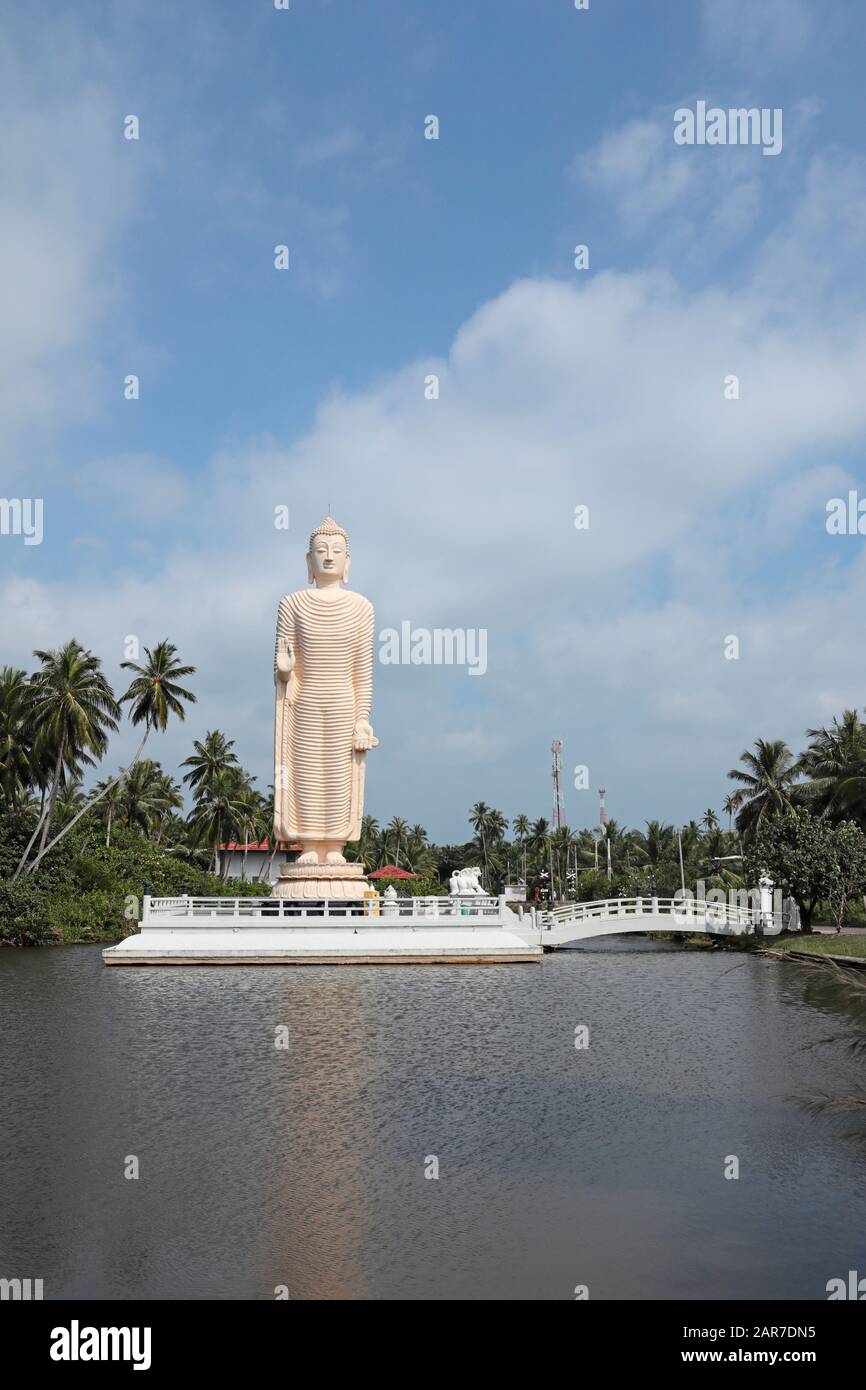 Tsunami Honganji Vihara, Memorial, Hikkadawu, Sri Lanka Stock Photohttps://www.alamy.com/image-license-details/?v=1https://www.alamy.com/tsunami-honganji-vihara-memorial-hikkadawu-sri-lanka-image341298529.html
Tsunami Honganji Vihara, Memorial, Hikkadawu, Sri Lanka Stock Photohttps://www.alamy.com/image-license-details/?v=1https://www.alamy.com/tsunami-honganji-vihara-memorial-hikkadawu-sri-lanka-image341298529.htmlRM2AR7DN5–Tsunami Honganji Vihara, Memorial, Hikkadawu, Sri Lanka
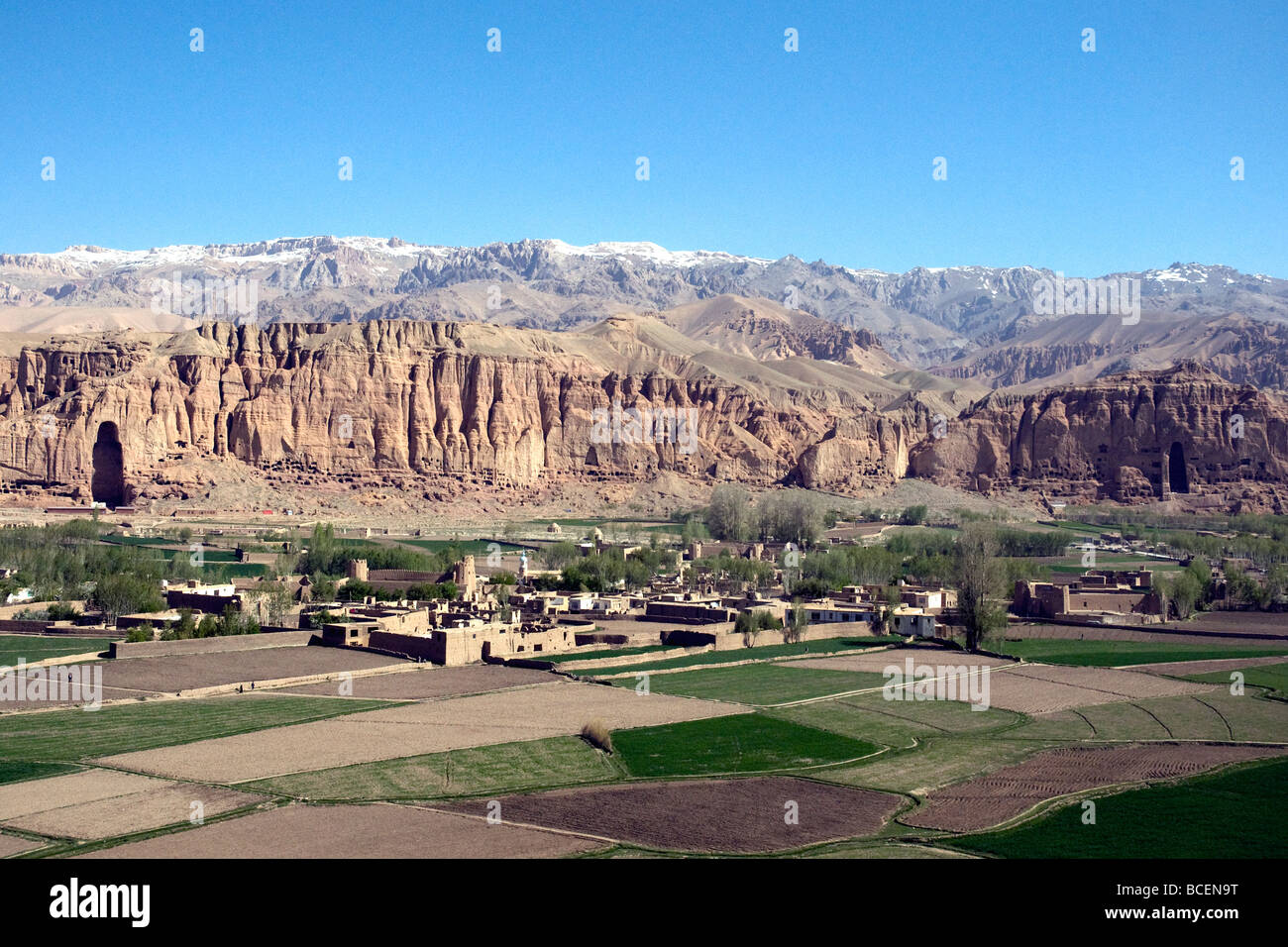 Two vast empty niches, left and right, in Bamiyan cliffs, held 6th-century giant Buddhas destroyed by the Taliban in 2001 Stock Photohttps://www.alamy.com/image-license-details/?v=1https://www.alamy.com/stock-photo-two-vast-empty-niches-left-and-right-in-bamiyan-cliffs-held-6th-century-24910308.html
Two vast empty niches, left and right, in Bamiyan cliffs, held 6th-century giant Buddhas destroyed by the Taliban in 2001 Stock Photohttps://www.alamy.com/image-license-details/?v=1https://www.alamy.com/stock-photo-two-vast-empty-niches-left-and-right-in-bamiyan-cliffs-held-6th-century-24910308.htmlRMBCEN9T–Two vast empty niches, left and right, in Bamiyan cliffs, held 6th-century giant Buddhas destroyed by the Taliban in 2001
 Mountain scenery between Kabul and Bamyan (Bamiyan) in Afghanistan. Donkeys graze in a grass field. Stock Photohttps://www.alamy.com/image-license-details/?v=1https://www.alamy.com/mountain-scenery-between-kabul-and-bamyan-bamiyan-in-afghanistan-donkeys-graze-in-a-grass-field-image498929691.html
Mountain scenery between Kabul and Bamyan (Bamiyan) in Afghanistan. Donkeys graze in a grass field. Stock Photohttps://www.alamy.com/image-license-details/?v=1https://www.alamy.com/mountain-scenery-between-kabul-and-bamyan-bamiyan-in-afghanistan-donkeys-graze-in-a-grass-field-image498929691.htmlRF2KYM5WF–Mountain scenery between Kabul and Bamyan (Bamiyan) in Afghanistan. Donkeys graze in a grass field.
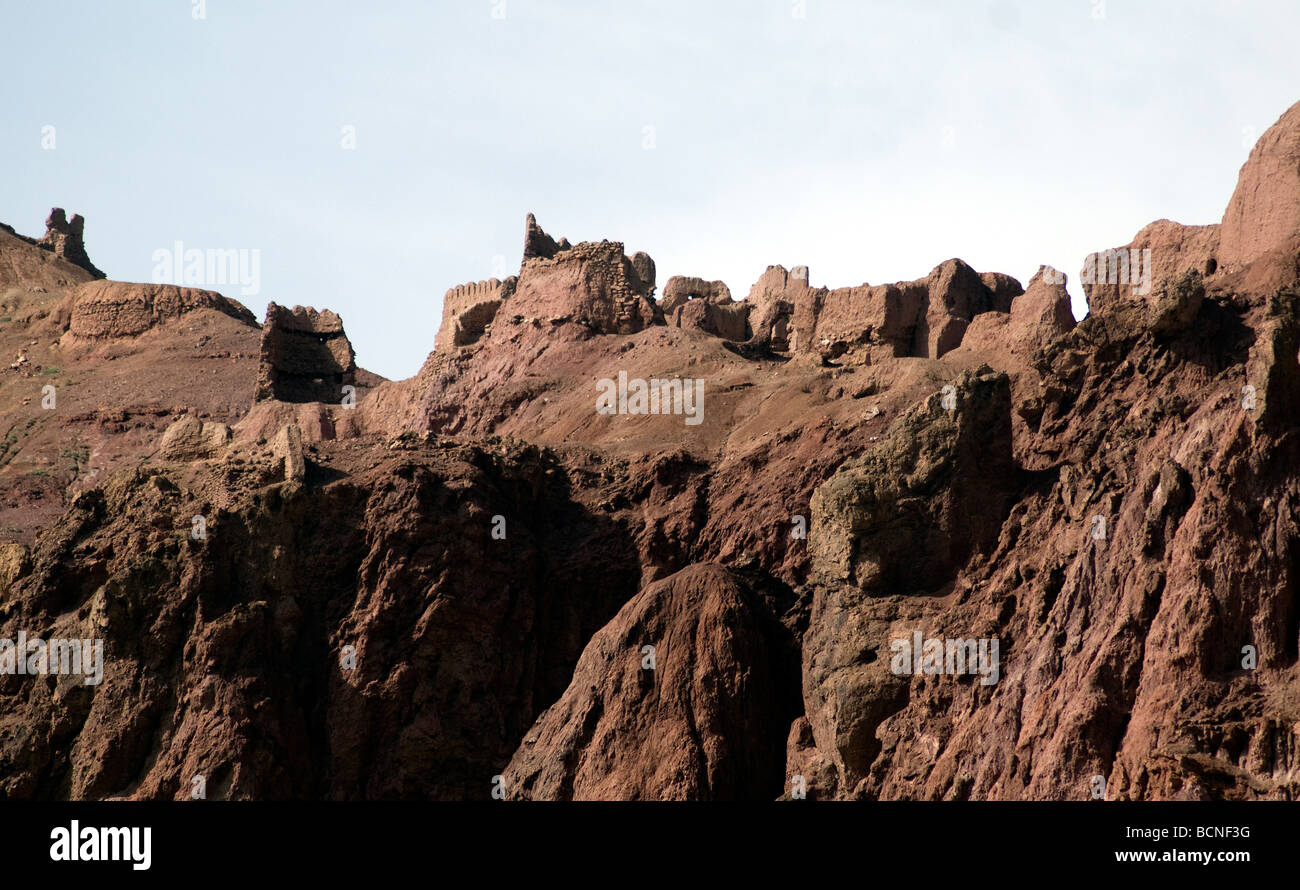 Shahr-e Zohak, citadel ruins on a Bamiyan province mountaintop where the grandson of Gengis Khan was killed Stock Photohttps://www.alamy.com/image-license-details/?v=1https://www.alamy.com/stock-photo-shahr-e-zohak-citadel-ruins-on-a-bamiyan-province-mountaintop-where-25059092.html
Shahr-e Zohak, citadel ruins on a Bamiyan province mountaintop where the grandson of Gengis Khan was killed Stock Photohttps://www.alamy.com/image-license-details/?v=1https://www.alamy.com/stock-photo-shahr-e-zohak-citadel-ruins-on-a-bamiyan-province-mountaintop-where-25059092.htmlRMBCNF3G–Shahr-e Zohak, citadel ruins on a Bamiyan province mountaintop where the grandson of Gengis Khan was killed
 View from a hotel room in Bamyan, Afghanistan Stock Photohttps://www.alamy.com/image-license-details/?v=1https://www.alamy.com/view-from-a-hotel-room-in-bamyan-afghanistan-image225751427.html
View from a hotel room in Bamyan, Afghanistan Stock Photohttps://www.alamy.com/image-license-details/?v=1https://www.alamy.com/view-from-a-hotel-room-in-bamyan-afghanistan-image225751427.htmlRMR37T6Y–View from a hotel room in Bamyan, Afghanistan
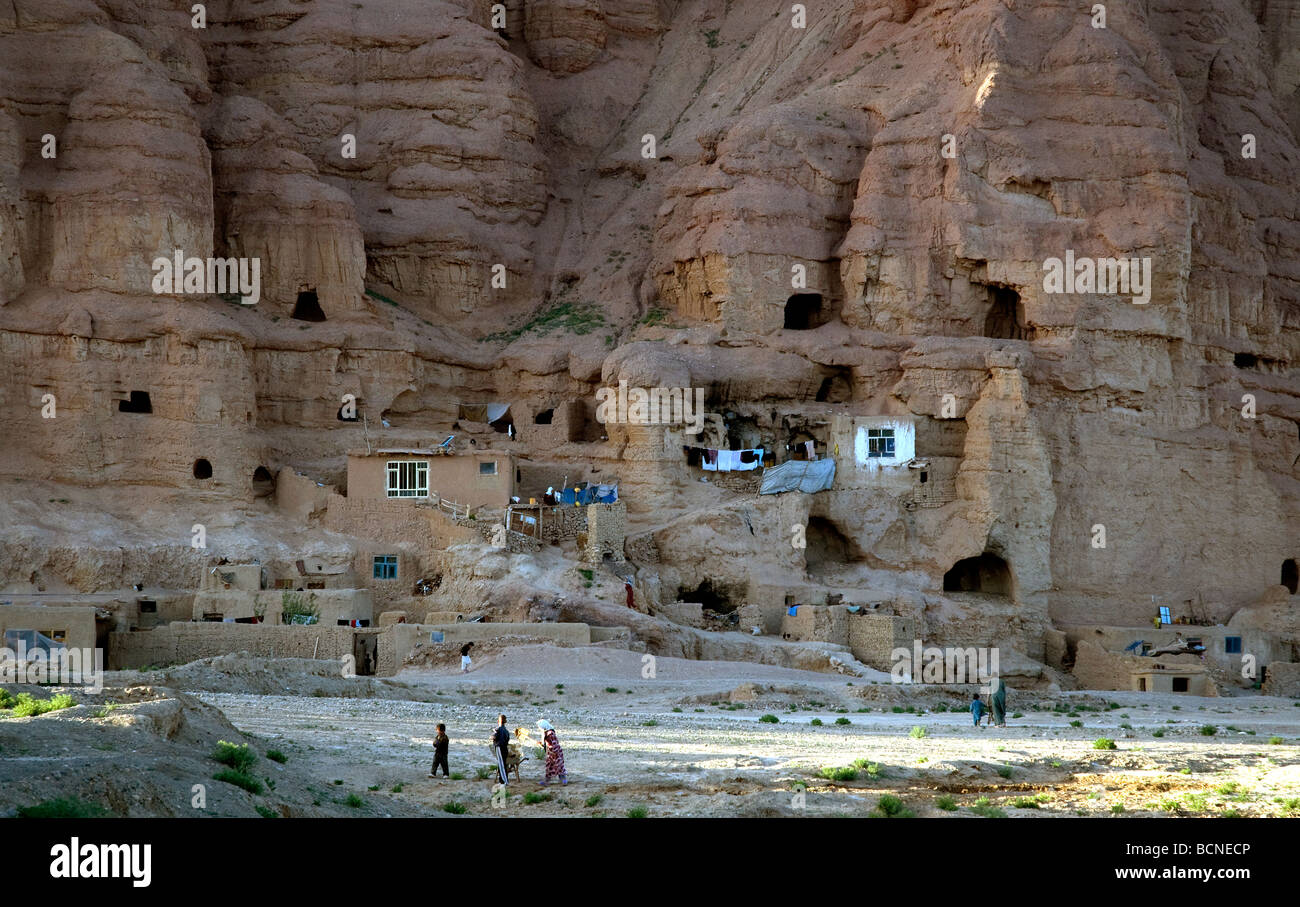 West of the great Buddha niches in Afghanistan's Bamiyan, caves in the sandstone cliffs are home to poor families and refugees Stock Photohttps://www.alamy.com/image-license-details/?v=1https://www.alamy.com/stock-photo-west-of-the-great-buddha-niches-in-afghanistans-bamiyan-caves-in-the-25058566.html
West of the great Buddha niches in Afghanistan's Bamiyan, caves in the sandstone cliffs are home to poor families and refugees Stock Photohttps://www.alamy.com/image-license-details/?v=1https://www.alamy.com/stock-photo-west-of-the-great-buddha-niches-in-afghanistans-bamiyan-caves-in-the-25058566.htmlRMBCNECP–West of the great Buddha niches in Afghanistan's Bamiyan, caves in the sandstone cliffs are home to poor families and refugees
 Scenery between Kabul and Bamyan (Bamiyan) in Afghanistan. Dusty road through mountain scenery on the southern route between the two cities. Stock Photohttps://www.alamy.com/image-license-details/?v=1https://www.alamy.com/scenery-between-kabul-and-bamyan-bamiyan-in-afghanistan-dusty-road-through-mountain-scenery-on-the-southern-route-between-the-two-cities-image498929634.html
Scenery between Kabul and Bamyan (Bamiyan) in Afghanistan. Dusty road through mountain scenery on the southern route between the two cities. Stock Photohttps://www.alamy.com/image-license-details/?v=1https://www.alamy.com/scenery-between-kabul-and-bamyan-bamiyan-in-afghanistan-dusty-road-through-mountain-scenery-on-the-southern-route-between-the-two-cities-image498929634.htmlRF2KYM5RE–Scenery between Kabul and Bamyan (Bamiyan) in Afghanistan. Dusty road through mountain scenery on the southern route between the two cities.
 A Hazara man in the road to Bamiyan. Stock Photohttps://www.alamy.com/image-license-details/?v=1https://www.alamy.com/stock-photo-a-hazara-man-in-the-road-to-bamiyan-15292386.html
A Hazara man in the road to Bamiyan. Stock Photohttps://www.alamy.com/image-license-details/?v=1https://www.alamy.com/stock-photo-a-hazara-man-in-the-road-to-bamiyan-15292386.htmlRMAMM3MK–A Hazara man in the road to Bamiyan.
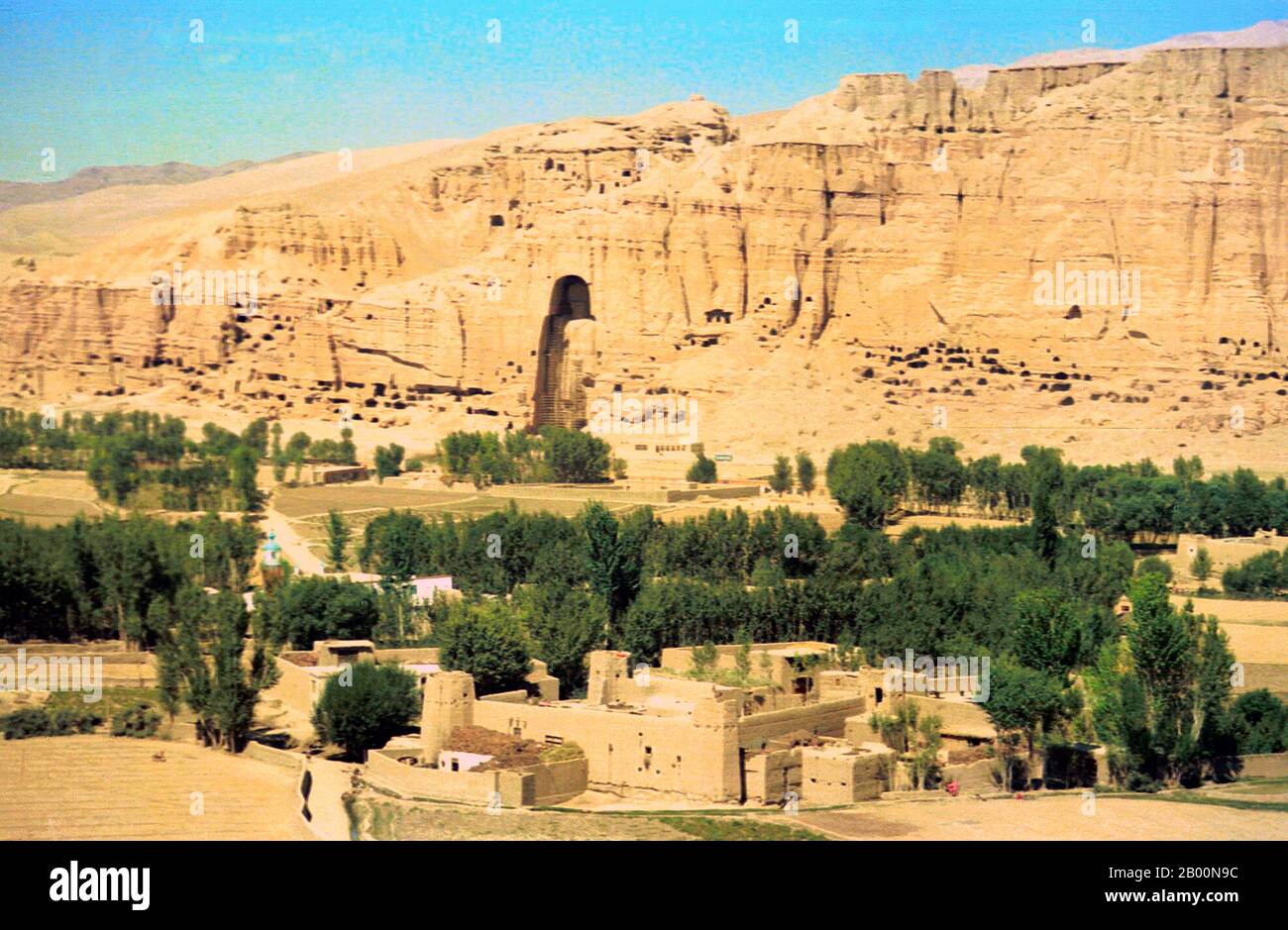 Afghanistan: Vale of Bamiyan in 1979, with the larger of the two Bamiyan Buddhas left centre. Photo by Andrew Forbes. The Buddhas of Bamiyan were two 6th century monumental statues of standing buddhas carved into the side of a cliff in the Bamiyan valley in the Hazarajat region of central Afghanistan, situated 230 km (143 miles) northwest of Kabul at an altitude of 2,500 meters (8,202 ft). Built in 507 CE, the larger in 554 CE, the statues represented the classic blended style of Gandhara art. The main bodies were hewn directly from the sandstone cliffs. Stock Photohttps://www.alamy.com/image-license-details/?v=1https://www.alamy.com/afghanistan-vale-of-bamiyan-in-1979-with-the-larger-of-the-two-bamiyan-buddhas-left-centre-photo-by-andrew-forbes-the-buddhas-of-bamiyan-were-two-6th-century-monumental-statues-of-standing-buddhas-carved-into-the-side-of-a-cliff-in-the-bamiyan-valley-in-the-hazarajat-region-of-central-afghanistan-situated-230-km-143-miles-northwest-of-kabul-at-an-altitude-of-2500-meters-8202-ft-built-in-507-ce-the-larger-in-554-ce-the-statues-represented-the-classic-blended-style-of-gandhara-art-the-main-bodies-were-hewn-directly-from-the-sandstone-cliffs-image344224088.html
Afghanistan: Vale of Bamiyan in 1979, with the larger of the two Bamiyan Buddhas left centre. Photo by Andrew Forbes. The Buddhas of Bamiyan were two 6th century monumental statues of standing buddhas carved into the side of a cliff in the Bamiyan valley in the Hazarajat region of central Afghanistan, situated 230 km (143 miles) northwest of Kabul at an altitude of 2,500 meters (8,202 ft). Built in 507 CE, the larger in 554 CE, the statues represented the classic blended style of Gandhara art. The main bodies were hewn directly from the sandstone cliffs. Stock Photohttps://www.alamy.com/image-license-details/?v=1https://www.alamy.com/afghanistan-vale-of-bamiyan-in-1979-with-the-larger-of-the-two-bamiyan-buddhas-left-centre-photo-by-andrew-forbes-the-buddhas-of-bamiyan-were-two-6th-century-monumental-statues-of-standing-buddhas-carved-into-the-side-of-a-cliff-in-the-bamiyan-valley-in-the-hazarajat-region-of-central-afghanistan-situated-230-km-143-miles-northwest-of-kabul-at-an-altitude-of-2500-meters-8202-ft-built-in-507-ce-the-larger-in-554-ce-the-statues-represented-the-classic-blended-style-of-gandhara-art-the-main-bodies-were-hewn-directly-from-the-sandstone-cliffs-image344224088.htmlRM2B00N9C–Afghanistan: Vale of Bamiyan in 1979, with the larger of the two Bamiyan Buddhas left centre. Photo by Andrew Forbes. The Buddhas of Bamiyan were two 6th century monumental statues of standing buddhas carved into the side of a cliff in the Bamiyan valley in the Hazarajat region of central Afghanistan, situated 230 km (143 miles) northwest of Kabul at an altitude of 2,500 meters (8,202 ft). Built in 507 CE, the larger in 554 CE, the statues represented the classic blended style of Gandhara art. The main bodies were hewn directly from the sandstone cliffs.
 View of Bamiyan valley from the head of the large Buddha Afghanistan Stock Photohttps://www.alamy.com/image-license-details/?v=1https://www.alamy.com/view-of-bamiyan-valley-from-the-head-of-the-large-buddha-afghanistan-image293886.html
View of Bamiyan valley from the head of the large Buddha Afghanistan Stock Photohttps://www.alamy.com/image-license-details/?v=1https://www.alamy.com/view-of-bamiyan-valley-from-the-head-of-the-large-buddha-afghanistan-image293886.htmlRMA47BFE–View of Bamiyan valley from the head of the large Buddha Afghanistan
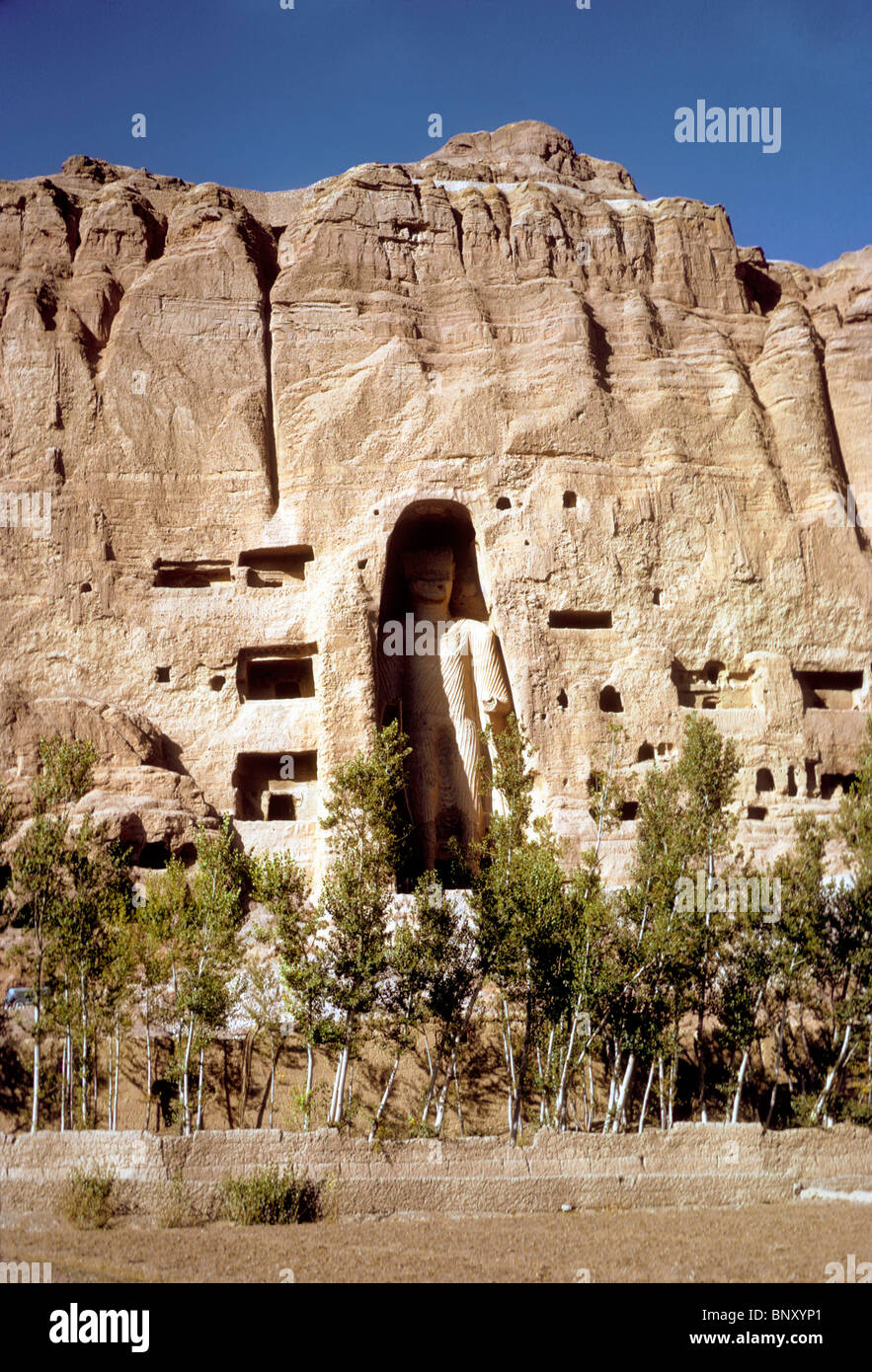 A 1974 image of the ancient standing Buddha now destroyed by the Taliban, Bamiyan, Afghanistan Stock Photohttps://www.alamy.com/image-license-details/?v=1https://www.alamy.com/stock-photo-a-1974-image-of-the-ancient-standing-buddha-now-destroyed-by-the-taliban-30710681.html
A 1974 image of the ancient standing Buddha now destroyed by the Taliban, Bamiyan, Afghanistan Stock Photohttps://www.alamy.com/image-license-details/?v=1https://www.alamy.com/stock-photo-a-1974-image-of-the-ancient-standing-buddha-now-destroyed-by-the-taliban-30710681.htmlRMBNXYP1–A 1974 image of the ancient standing Buddha now destroyed by the Taliban, Bamiyan, Afghanistan
 A view of Bamiyan with a ruined Buddha in the background. Stock Photohttps://www.alamy.com/image-license-details/?v=1https://www.alamy.com/stock-photo-a-view-of-bamiyan-with-a-ruined-buddha-in-the-background-24068925.html
A view of Bamiyan with a ruined Buddha in the background. Stock Photohttps://www.alamy.com/image-license-details/?v=1https://www.alamy.com/stock-photo-a-view-of-bamiyan-with-a-ruined-buddha-in-the-background-24068925.htmlRFBB4C4D–A view of Bamiyan with a ruined Buddha in the background.
 Afghanistan Bamiyan the Big Buddha, destroyed by the Taliban in 2001 Stock Photohttps://www.alamy.com/image-license-details/?v=1https://www.alamy.com/stock-photo-afghanistan-bamiyan-the-big-buddha-destroyed-by-the-taliban-in-2001-32125252.html
Afghanistan Bamiyan the Big Buddha, destroyed by the Taliban in 2001 Stock Photohttps://www.alamy.com/image-license-details/?v=1https://www.alamy.com/stock-photo-afghanistan-bamiyan-the-big-buddha-destroyed-by-the-taliban-in-2001-32125252.htmlRMBT7C2C–Afghanistan Bamiyan the Big Buddha, destroyed by the Taliban in 2001
 BAMIYAN AFGHANISTAN 1998 Two men walking along snow-covered road in front of mountains and cliff with Giant Buddha Stock Photohttps://www.alamy.com/image-license-details/?v=1https://www.alamy.com/bamiyan-afghanistan-1998-two-men-walking-along-snow-covered-road-in-image3374452.html
BAMIYAN AFGHANISTAN 1998 Two men walking along snow-covered road in front of mountains and cliff with Giant Buddha Stock Photohttps://www.alamy.com/image-license-details/?v=1https://www.alamy.com/bamiyan-afghanistan-1998-two-men-walking-along-snow-covered-road-in-image3374452.htmlRMA1WH75–BAMIYAN AFGHANISTAN 1998 Two men walking along snow-covered road in front of mountains and cliff with Giant Buddha
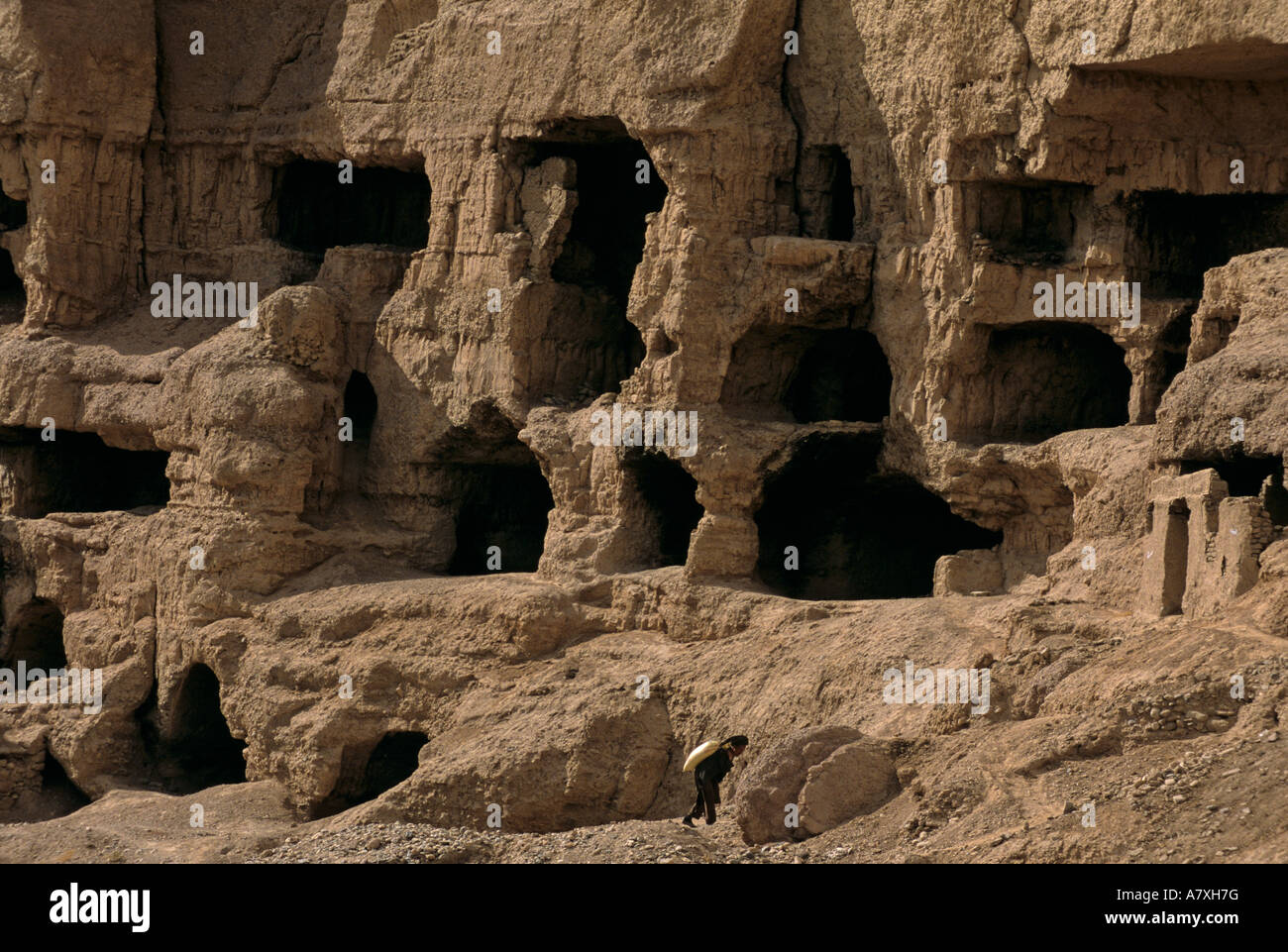 Afghanistan, Monastic Cave blackened by smoke damage due to centuries of inhabitants, UNESCO World Heritage site of Bamiyan Stock Photohttps://www.alamy.com/image-license-details/?v=1https://www.alamy.com/stock-photo-afghanistan-monastic-cave-blackened-by-smoke-damage-due-to-centuries-11928867.html
Afghanistan, Monastic Cave blackened by smoke damage due to centuries of inhabitants, UNESCO World Heritage site of Bamiyan Stock Photohttps://www.alamy.com/image-license-details/?v=1https://www.alamy.com/stock-photo-afghanistan-monastic-cave-blackened-by-smoke-damage-due-to-centuries-11928867.htmlRMA7XH7G–Afghanistan, Monastic Cave blackened by smoke damage due to centuries of inhabitants, UNESCO World Heritage site of Bamiyan
 Afghanistan, Bamiyan. Shahidan Pass Stock Photohttps://www.alamy.com/image-license-details/?v=1https://www.alamy.com/stock-photo-afghanistan-bamiyan-shahidan-pass-30816104.html
Afghanistan, Bamiyan. Shahidan Pass Stock Photohttps://www.alamy.com/image-license-details/?v=1https://www.alamy.com/stock-photo-afghanistan-bamiyan-shahidan-pass-30816104.htmlRMBP3P74–Afghanistan, Bamiyan. Shahidan Pass
 Bamiyan. 17th Mar, 2022. Photo taken on March 17, 2022 shows the Shahr-e-Zuhak, also known as The Red City, in Bamiyan province, Afghanistan. The site, along with other historical sites in Bamiyan, bears witness to the history of the ancient Silk Road. Credit: Saifurahman Safi/Xinhua/Alamy Live News Stock Photohttps://www.alamy.com/image-license-details/?v=1https://www.alamy.com/bamiyan-17th-mar-2022-photo-taken-on-march-17-2022-shows-the-shahr-e-zuhak-also-known-as-the-red-city-in-bamiyan-province-afghanistan-the-site-along-with-other-historical-sites-in-bamiyan-bears-witness-to-the-history-of-the-ancient-silk-road-credit-saifurahman-safixinhuaalamy-live-news-image464915583.html
Bamiyan. 17th Mar, 2022. Photo taken on March 17, 2022 shows the Shahr-e-Zuhak, also known as The Red City, in Bamiyan province, Afghanistan. The site, along with other historical sites in Bamiyan, bears witness to the history of the ancient Silk Road. Credit: Saifurahman Safi/Xinhua/Alamy Live News Stock Photohttps://www.alamy.com/image-license-details/?v=1https://www.alamy.com/bamiyan-17th-mar-2022-photo-taken-on-march-17-2022-shows-the-shahr-e-zuhak-also-known-as-the-red-city-in-bamiyan-province-afghanistan-the-site-along-with-other-historical-sites-in-bamiyan-bears-witness-to-the-history-of-the-ancient-silk-road-credit-saifurahman-safixinhuaalamy-live-news-image464915583.htmlRM2J0AMFY–Bamiyan. 17th Mar, 2022. Photo taken on March 17, 2022 shows the Shahr-e-Zuhak, also known as The Red City, in Bamiyan province, Afghanistan. The site, along with other historical sites in Bamiyan, bears witness to the history of the ancient Silk Road. Credit: Saifurahman Safi/Xinhua/Alamy Live News
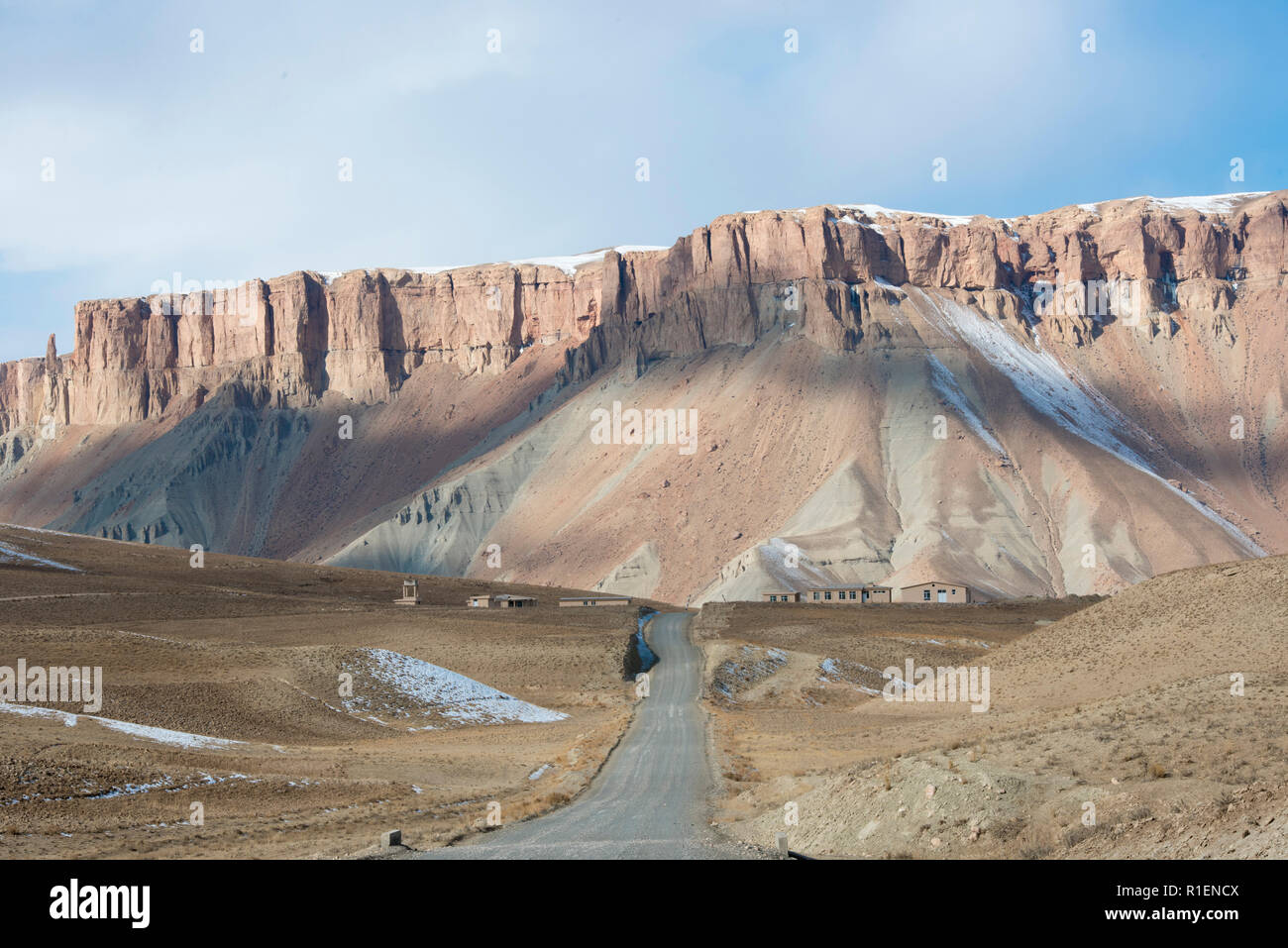 Road Towards Band-e Amir Lake With Snow-Capped Mountains In The Background, Band-e Amir National Park, Bamyan Province, Afghanistan Stock Photohttps://www.alamy.com/image-license-details/?v=1https://www.alamy.com/road-towards-band-e-amir-lake-with-snow-capped-mountains-in-the-background-band-e-amir-national-park-bamyan-province-afghanistan-image224673594.html
Road Towards Band-e Amir Lake With Snow-Capped Mountains In The Background, Band-e Amir National Park, Bamyan Province, Afghanistan Stock Photohttps://www.alamy.com/image-license-details/?v=1https://www.alamy.com/road-towards-band-e-amir-lake-with-snow-capped-mountains-in-the-background-band-e-amir-national-park-bamyan-province-afghanistan-image224673594.htmlRMR1ENCX–Road Towards Band-e Amir Lake With Snow-Capped Mountains In The Background, Band-e Amir National Park, Bamyan Province, Afghanistan
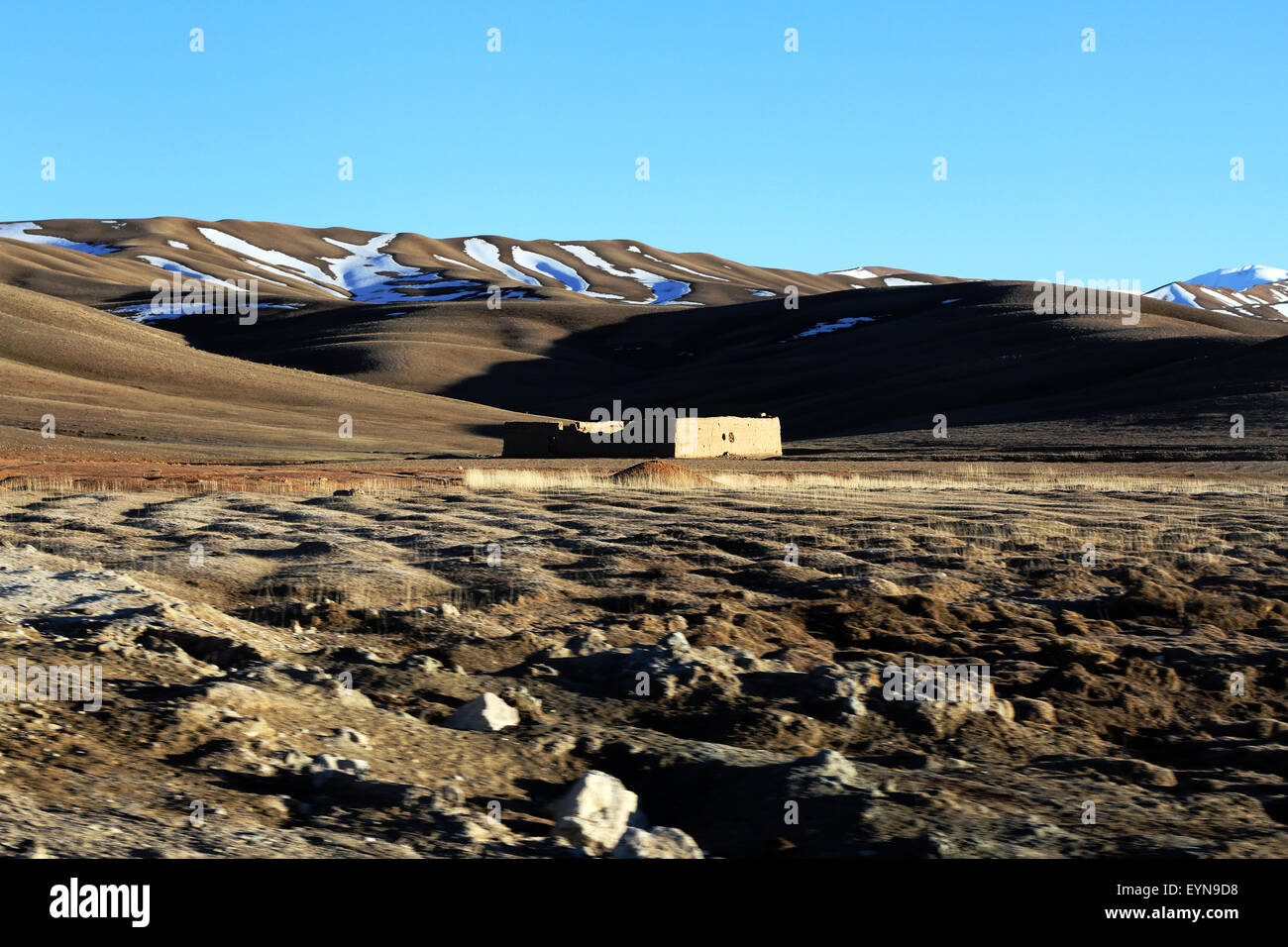 Lone Home on the Bamiyan Highway Stock Photohttps://www.alamy.com/image-license-details/?v=1https://www.alamy.com/stock-photo-lone-home-on-the-bamiyan-highway-85905604.html
Lone Home on the Bamiyan Highway Stock Photohttps://www.alamy.com/image-license-details/?v=1https://www.alamy.com/stock-photo-lone-home-on-the-bamiyan-highway-85905604.htmlRMEYN9D8–Lone Home on the Bamiyan Highway
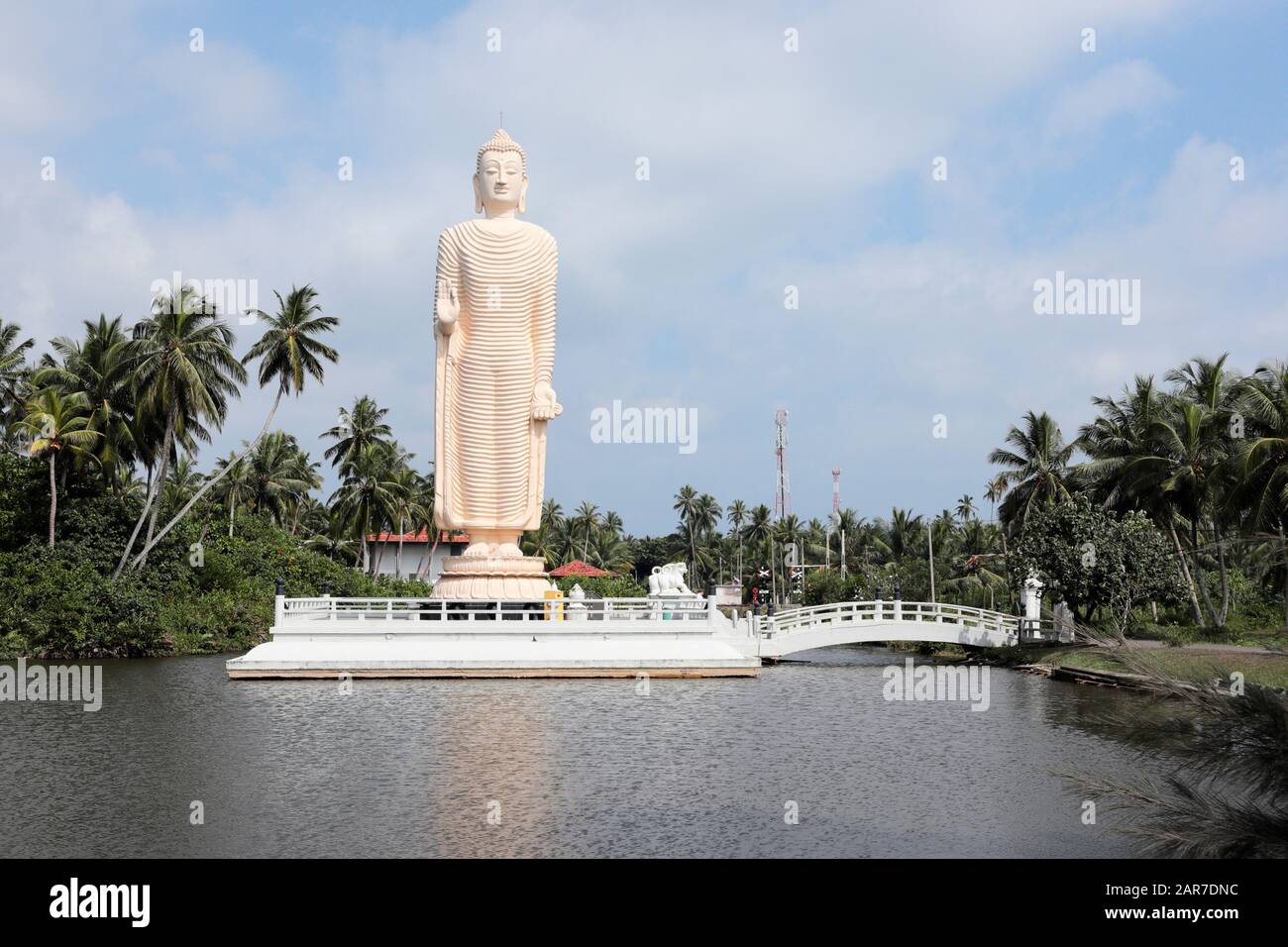 Tsunami Honganji Vihara, Memorial, Hikkadawu, Sri Lanka Stock Photohttps://www.alamy.com/image-license-details/?v=1https://www.alamy.com/tsunami-honganji-vihara-memorial-hikkadawu-sri-lanka-image341298536.html
Tsunami Honganji Vihara, Memorial, Hikkadawu, Sri Lanka Stock Photohttps://www.alamy.com/image-license-details/?v=1https://www.alamy.com/tsunami-honganji-vihara-memorial-hikkadawu-sri-lanka-image341298536.htmlRM2AR7DNC–Tsunami Honganji Vihara, Memorial, Hikkadawu, Sri Lanka
 Bamiyan. 28th Mar, 2018. Photo taken on March 28, 2018 shows the Shahr-e-Zuhak, also known as The Red City, in Bamiyan province, Afghanistan. The site, along with other historical sites in Bamiyan, bears witness to the history of the ancient Silk Road. Credit: Dai He/Xinhua/Alamy Live News Stock Photohttps://www.alamy.com/image-license-details/?v=1https://www.alamy.com/bamiyan-28th-mar-2018-photo-taken-on-march-28-2018-shows-the-shahr-e-zuhak-also-known-as-the-red-city-in-bamiyan-province-afghanistan-the-site-along-with-other-historical-sites-in-bamiyan-bears-witness-to-the-history-of-the-ancient-silk-road-credit-dai-hexinhuaalamy-live-news-image178464311.html
Bamiyan. 28th Mar, 2018. Photo taken on March 28, 2018 shows the Shahr-e-Zuhak, also known as The Red City, in Bamiyan province, Afghanistan. The site, along with other historical sites in Bamiyan, bears witness to the history of the ancient Silk Road. Credit: Dai He/Xinhua/Alamy Live News Stock Photohttps://www.alamy.com/image-license-details/?v=1https://www.alamy.com/bamiyan-28th-mar-2018-photo-taken-on-march-28-2018-shows-the-shahr-e-zuhak-also-known-as-the-red-city-in-bamiyan-province-afghanistan-the-site-along-with-other-historical-sites-in-bamiyan-bears-witness-to-the-history-of-the-ancient-silk-road-credit-dai-hexinhuaalamy-live-news-image178464311.htmlRMMA9N1B–Bamiyan. 28th Mar, 2018. Photo taken on March 28, 2018 shows the Shahr-e-Zuhak, also known as The Red City, in Bamiyan province, Afghanistan. The site, along with other historical sites in Bamiyan, bears witness to the history of the ancient Silk Road. Credit: Dai He/Xinhua/Alamy Live News
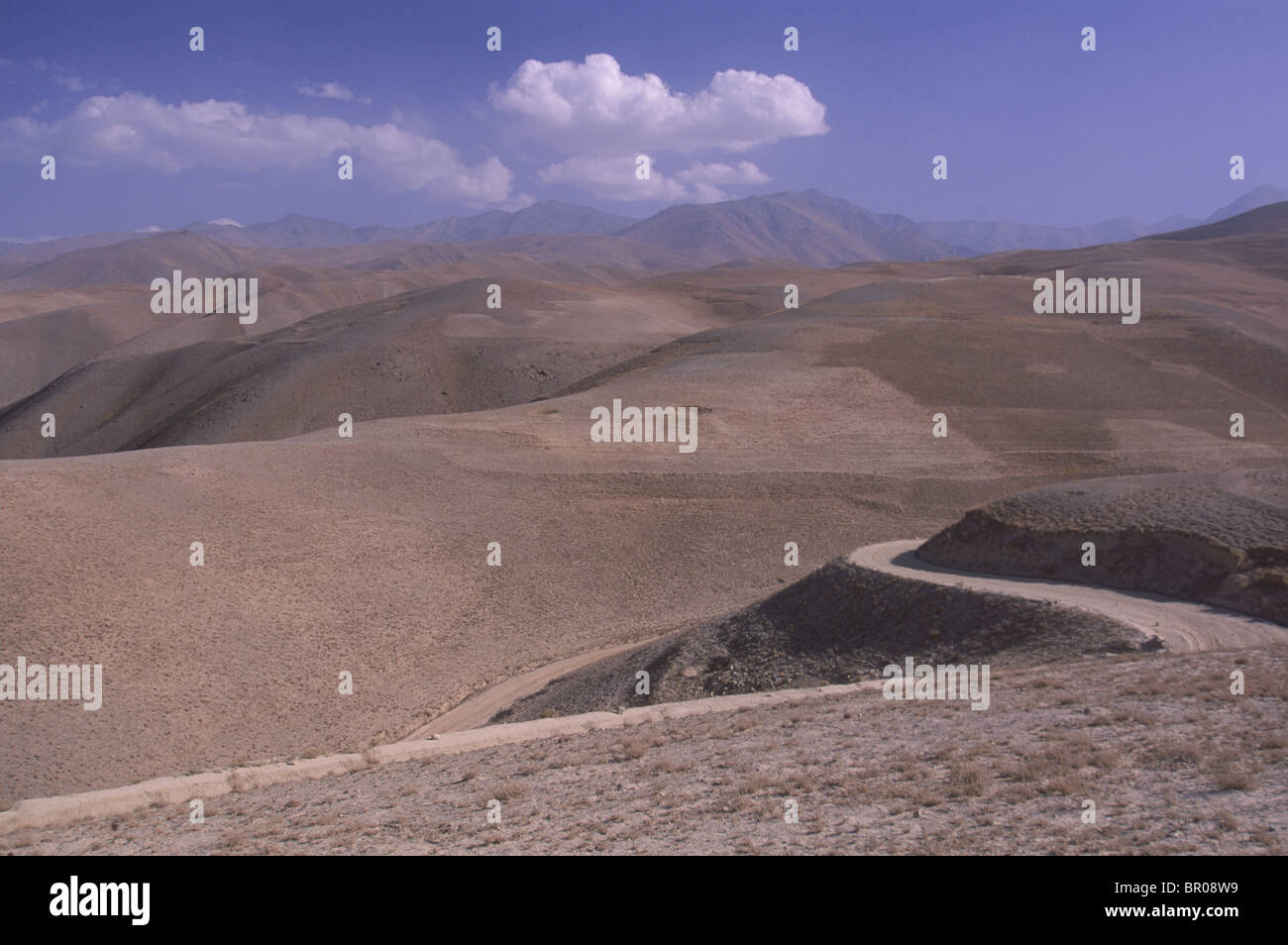 Dry field show the lack of rain near Shebar Pass, Bamiyan Province Stock Photohttps://www.alamy.com/image-license-details/?v=1https://www.alamy.com/stock-photo-dry-field-show-the-lack-of-rain-near-shebar-pass-bamiyan-province-31354437.html
Dry field show the lack of rain near Shebar Pass, Bamiyan Province Stock Photohttps://www.alamy.com/image-license-details/?v=1https://www.alamy.com/stock-photo-dry-field-show-the-lack-of-rain-near-shebar-pass-bamiyan-province-31354437.htmlRFBR08W9–Dry field show the lack of rain near Shebar Pass, Bamiyan Province
 220318 -- BAMIYAN, March 18, 2022 -- Photo taken on March 17, 2022 shows the Shahr-e-Zuhak, also known as The Red City, in Bamiyan province, Afghanistan. The site, along with other historical sites in Bamiyan, bears witness to the history of the ancient Silk Road. Photo by /Xinhua AFGHANISTAN-BAMIYAN-SHAHR-E-ZUHAK SaifurahmanxSafi PUBLICATIONxNOTxINxCHN Stock Photohttps://www.alamy.com/image-license-details/?v=1https://www.alamy.com/220318-bamiyan-march-18-2022-photo-taken-on-march-17-2022-shows-the-shahr-e-zuhak-also-known-as-the-red-city-in-bamiyan-province-afghanistan-the-site-along-with-other-historical-sites-in-bamiyan-bears-witness-to-the-history-of-the-ancient-silk-road-photo-by-xinhua-afghanistan-bamiyan-shahr-e-zuhak-saifurahmanxsafi-publicationxnotxinxchn-image565196740.html
220318 -- BAMIYAN, March 18, 2022 -- Photo taken on March 17, 2022 shows the Shahr-e-Zuhak, also known as The Red City, in Bamiyan province, Afghanistan. The site, along with other historical sites in Bamiyan, bears witness to the history of the ancient Silk Road. Photo by /Xinhua AFGHANISTAN-BAMIYAN-SHAHR-E-ZUHAK SaifurahmanxSafi PUBLICATIONxNOTxINxCHN Stock Photohttps://www.alamy.com/image-license-details/?v=1https://www.alamy.com/220318-bamiyan-march-18-2022-photo-taken-on-march-17-2022-shows-the-shahr-e-zuhak-also-known-as-the-red-city-in-bamiyan-province-afghanistan-the-site-along-with-other-historical-sites-in-bamiyan-bears-witness-to-the-history-of-the-ancient-silk-road-photo-by-xinhua-afghanistan-bamiyan-shahr-e-zuhak-saifurahmanxsafi-publicationxnotxinxchn-image565196740.htmlRM2RREX5T–220318 -- BAMIYAN, March 18, 2022 -- Photo taken on March 17, 2022 shows the Shahr-e-Zuhak, also known as The Red City, in Bamiyan province, Afghanistan. The site, along with other historical sites in Bamiyan, bears witness to the history of the ancient Silk Road. Photo by /Xinhua AFGHANISTAN-BAMIYAN-SHAHR-E-ZUHAK SaifurahmanxSafi PUBLICATIONxNOTxINxCHN
 BAMYAN PROVINCE, Afghanistan - Two boys ride their bicycles up a dirt road in the Bamyan valley, with the huge cavity where one of the ancient Buddha's of Bamyan used to stand visible in the distance, June 17, 2012. The monumental statues were built in 507 and 554 AD, and were the largest statues of a standing Buddha on Earth until the Taliban dynamited them in 2001. (U.S. Army photo by Sgt. Ken Scar, 7th Mobile Public Affairs Detachment) Boys with bicycles in Bamyan-2012 Stock Photohttps://www.alamy.com/image-license-details/?v=1https://www.alamy.com/stock-photo-bamyan-province-afghanistan-two-boys-ride-their-bicycles-up-a-dirt-129503521.html
BAMYAN PROVINCE, Afghanistan - Two boys ride their bicycles up a dirt road in the Bamyan valley, with the huge cavity where one of the ancient Buddha's of Bamyan used to stand visible in the distance, June 17, 2012. The monumental statues were built in 507 and 554 AD, and were the largest statues of a standing Buddha on Earth until the Taliban dynamited them in 2001. (U.S. Army photo by Sgt. Ken Scar, 7th Mobile Public Affairs Detachment) Boys with bicycles in Bamyan-2012 Stock Photohttps://www.alamy.com/image-license-details/?v=1https://www.alamy.com/stock-photo-bamyan-province-afghanistan-two-boys-ride-their-bicycles-up-a-dirt-129503521.htmlRMHEKB1N–BAMYAN PROVINCE, Afghanistan - Two boys ride their bicycles up a dirt road in the Bamyan valley, with the huge cavity where one of the ancient Buddha's of Bamyan used to stand visible in the distance, June 17, 2012. The monumental statues were built in 507 and 554 AD, and were the largest statues of a standing Buddha on Earth until the Taliban dynamited them in 2001. (U.S. Army photo by Sgt. Ken Scar, 7th Mobile Public Affairs Detachment) Boys with bicycles in Bamyan-2012
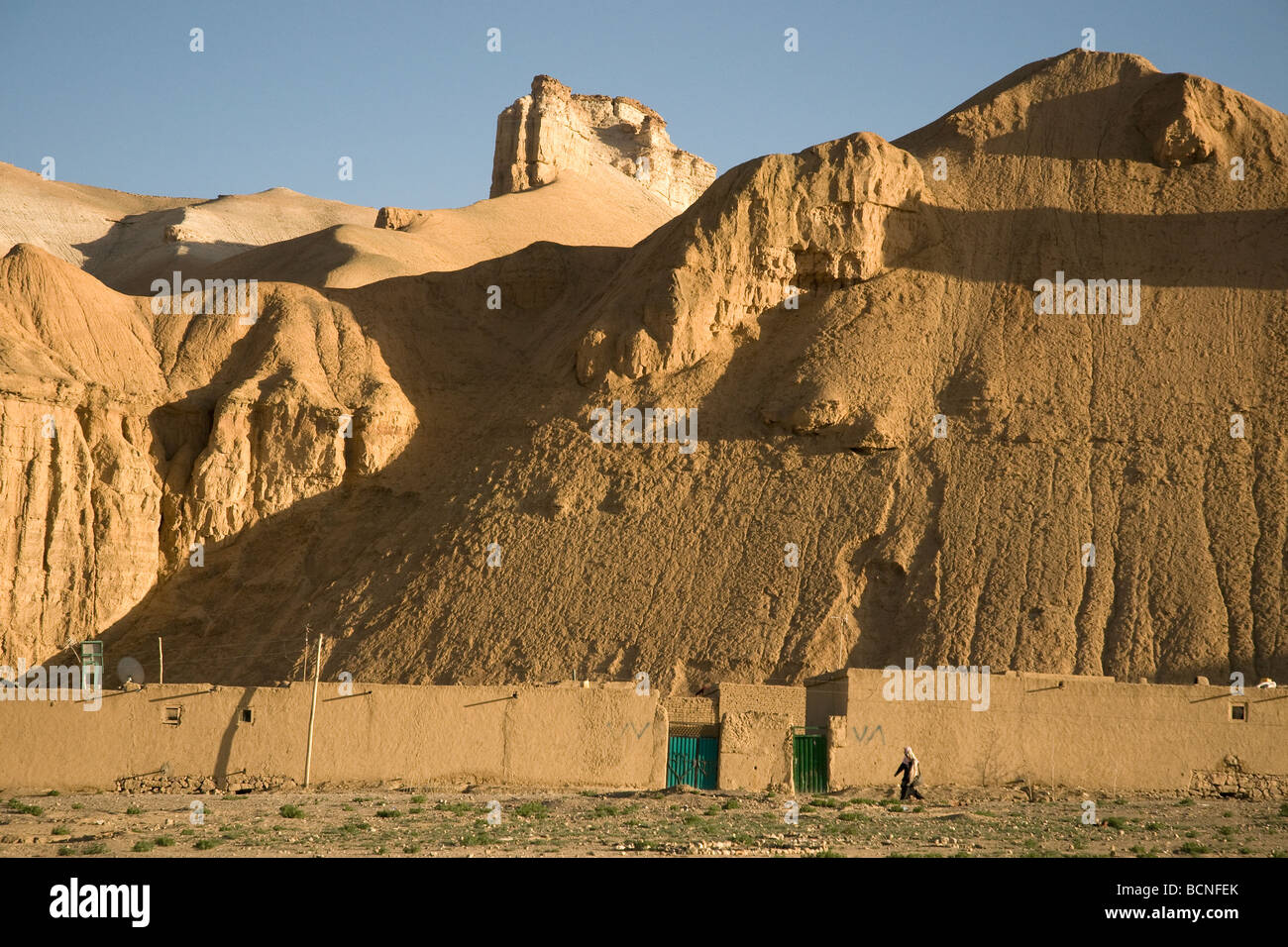 Every red sandstone clifftop, this one near Bamiyan, seems to tell a story even the 'castle' is an act of nature Stock Photohttps://www.alamy.com/image-license-details/?v=1https://www.alamy.com/stock-photo-every-red-sandstone-clifftop-this-one-near-bamiyan-seems-to-tell-a-25059403.html
Every red sandstone clifftop, this one near Bamiyan, seems to tell a story even the 'castle' is an act of nature Stock Photohttps://www.alamy.com/image-license-details/?v=1https://www.alamy.com/stock-photo-every-red-sandstone-clifftop-this-one-near-bamiyan-seems-to-tell-a-25059403.htmlRMBCNFEK–Every red sandstone clifftop, this one near Bamiyan, seems to tell a story even the 'castle' is an act of nature
 Scenery between Kabul and Bamyan (Bamiyan) in Afghanistan. Dusty road through mountain scenery on the southern route between the two cities. Stock Photohttps://www.alamy.com/image-license-details/?v=1https://www.alamy.com/scenery-between-kabul-and-bamyan-bamiyan-in-afghanistan-dusty-road-through-mountain-scenery-on-the-southern-route-between-the-two-cities-image498929643.html
Scenery between Kabul and Bamyan (Bamiyan) in Afghanistan. Dusty road through mountain scenery on the southern route between the two cities. Stock Photohttps://www.alamy.com/image-license-details/?v=1https://www.alamy.com/scenery-between-kabul-and-bamyan-bamiyan-in-afghanistan-dusty-road-through-mountain-scenery-on-the-southern-route-between-the-two-cities-image498929643.htmlRF2KYM5RR–Scenery between Kabul and Bamyan (Bamiyan) in Afghanistan. Dusty road through mountain scenery on the southern route between the two cities.
 (180330) -- BAMYAN, March 30, 2018 -- Photo taken on March 28, 2018 shows the Shahr-i-Gholghola or the City of Screams, site of the Sasanian Empire (AD 224-651), in Bamyan province, Afghanistan. The site, along with other historical sites in Bamiyan, bears witness to the history of the ancient Silk Road. ) (swt) AFGHANISTAN-BAMYAN-SITES-SHAHR-I-GHOLGHOLA DaixHe PUBLICATIONxNOTxINxCHN Stock Photohttps://www.alamy.com/image-license-details/?v=1https://www.alamy.com/180330-bamyan-march-30-2018-photo-taken-on-march-28-2018-shows-the-shahr-i-gholghola-or-the-city-of-screams-site-of-the-sasanian-empire-ad-224-651-in-bamyan-province-afghanistan-the-site-along-with-other-historical-sites-in-bamiyan-bears-witness-to-the-history-of-the-ancient-silk-road-swt-afghanistan-bamyan-sites-shahr-i-gholghola-daixhe-publicationxnotxinxchn-image564250223.html
(180330) -- BAMYAN, March 30, 2018 -- Photo taken on March 28, 2018 shows the Shahr-i-Gholghola or the City of Screams, site of the Sasanian Empire (AD 224-651), in Bamyan province, Afghanistan. The site, along with other historical sites in Bamiyan, bears witness to the history of the ancient Silk Road. ) (swt) AFGHANISTAN-BAMYAN-SITES-SHAHR-I-GHOLGHOLA DaixHe PUBLICATIONxNOTxINxCHN Stock Photohttps://www.alamy.com/image-license-details/?v=1https://www.alamy.com/180330-bamyan-march-30-2018-photo-taken-on-march-28-2018-shows-the-shahr-i-gholghola-or-the-city-of-screams-site-of-the-sasanian-empire-ad-224-651-in-bamyan-province-afghanistan-the-site-along-with-other-historical-sites-in-bamiyan-bears-witness-to-the-history-of-the-ancient-silk-road-swt-afghanistan-bamyan-sites-shahr-i-gholghola-daixhe-publicationxnotxinxchn-image564250223.htmlRM2RNYPWK–(180330) -- BAMYAN, March 30, 2018 -- Photo taken on March 28, 2018 shows the Shahr-i-Gholghola or the City of Screams, site of the Sasanian Empire (AD 224-651), in Bamyan province, Afghanistan. The site, along with other historical sites in Bamiyan, bears witness to the history of the ancient Silk Road. ) (swt) AFGHANISTAN-BAMYAN-SITES-SHAHR-I-GHOLGHOLA DaixHe PUBLICATIONxNOTxINxCHN
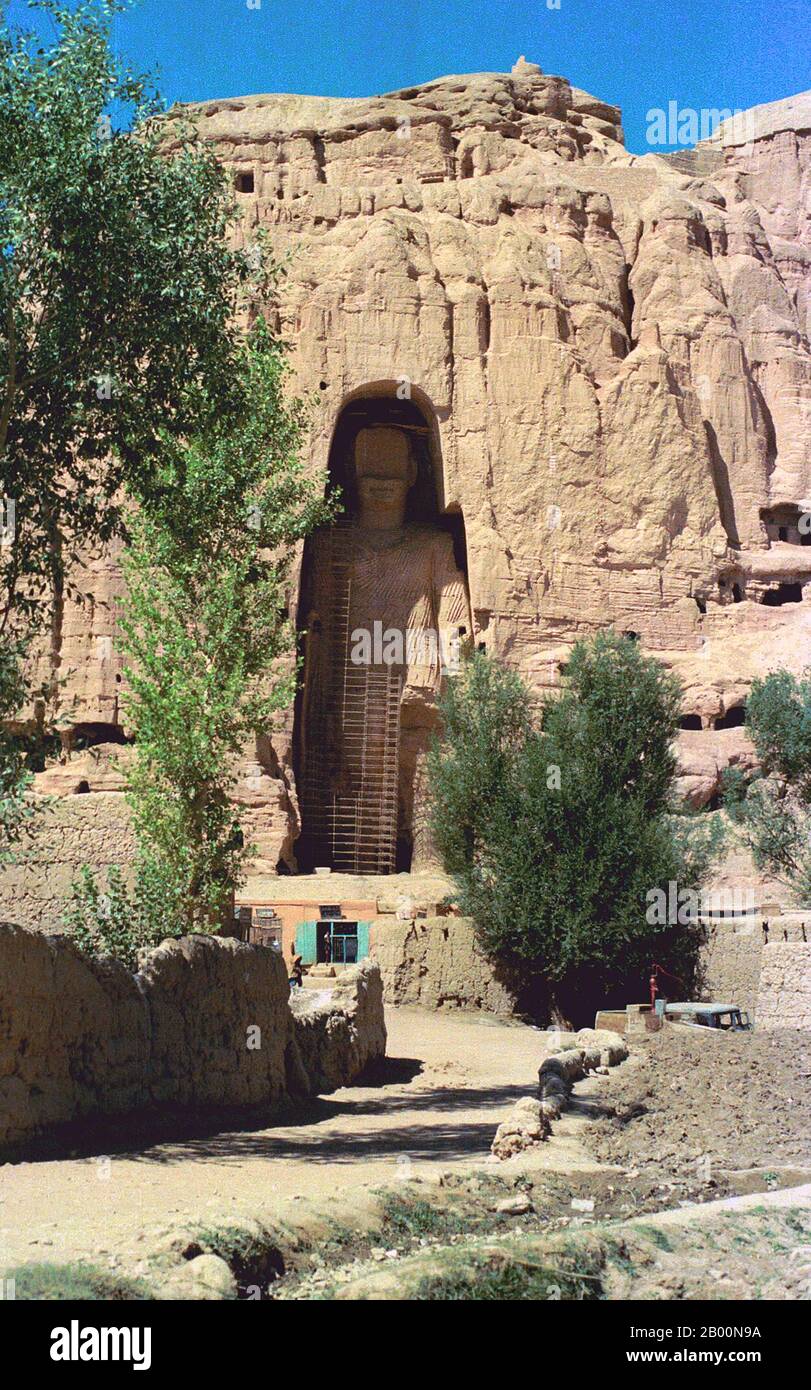 Afghanistan: Bamiyan Buddha in 1979. Photo by Andrew Forbes. The Buddhas of Bamiyan were two 6th century monumental statues of standing buddhas carved into the side of a cliff in the Bamiyan valley in the Hazarajat region of central Afghanistan, situated 230 km (143 miles) northwest of Kabul at an altitude of 2,500 meters (8,202 ft). Built in 507 CE, the larger in 554 CE, the statues represented the classic blended style of Gandhara art. The main bodies were hewn directly from the sandstone cliffs, but details were modeled in mud mixed with straw, coated with stucco. Stock Photohttps://www.alamy.com/image-license-details/?v=1https://www.alamy.com/afghanistan-bamiyan-buddha-in-1979-photo-by-andrew-forbes-the-buddhas-of-bamiyan-were-two-6th-century-monumental-statues-of-standing-buddhas-carved-into-the-side-of-a-cliff-in-the-bamiyan-valley-in-the-hazarajat-region-of-central-afghanistan-situated-230-km-143-miles-northwest-of-kabul-at-an-altitude-of-2500-meters-8202-ft-built-in-507-ce-the-larger-in-554-ce-the-statues-represented-the-classic-blended-style-of-gandhara-art-the-main-bodies-were-hewn-directly-from-the-sandstone-cliffs-but-details-were-modeled-in-mud-mixed-with-straw-coated-with-stucco-image344224086.html
Afghanistan: Bamiyan Buddha in 1979. Photo by Andrew Forbes. The Buddhas of Bamiyan were two 6th century monumental statues of standing buddhas carved into the side of a cliff in the Bamiyan valley in the Hazarajat region of central Afghanistan, situated 230 km (143 miles) northwest of Kabul at an altitude of 2,500 meters (8,202 ft). Built in 507 CE, the larger in 554 CE, the statues represented the classic blended style of Gandhara art. The main bodies were hewn directly from the sandstone cliffs, but details were modeled in mud mixed with straw, coated with stucco. Stock Photohttps://www.alamy.com/image-license-details/?v=1https://www.alamy.com/afghanistan-bamiyan-buddha-in-1979-photo-by-andrew-forbes-the-buddhas-of-bamiyan-were-two-6th-century-monumental-statues-of-standing-buddhas-carved-into-the-side-of-a-cliff-in-the-bamiyan-valley-in-the-hazarajat-region-of-central-afghanistan-situated-230-km-143-miles-northwest-of-kabul-at-an-altitude-of-2500-meters-8202-ft-built-in-507-ce-the-larger-in-554-ce-the-statues-represented-the-classic-blended-style-of-gandhara-art-the-main-bodies-were-hewn-directly-from-the-sandstone-cliffs-but-details-were-modeled-in-mud-mixed-with-straw-coated-with-stucco-image344224086.htmlRM2B00N9A–Afghanistan: Bamiyan Buddha in 1979. Photo by Andrew Forbes. The Buddhas of Bamiyan were two 6th century monumental statues of standing buddhas carved into the side of a cliff in the Bamiyan valley in the Hazarajat region of central Afghanistan, situated 230 km (143 miles) northwest of Kabul at an altitude of 2,500 meters (8,202 ft). Built in 507 CE, the larger in 554 CE, the statues represented the classic blended style of Gandhara art. The main bodies were hewn directly from the sandstone cliffs, but details were modeled in mud mixed with straw, coated with stucco.
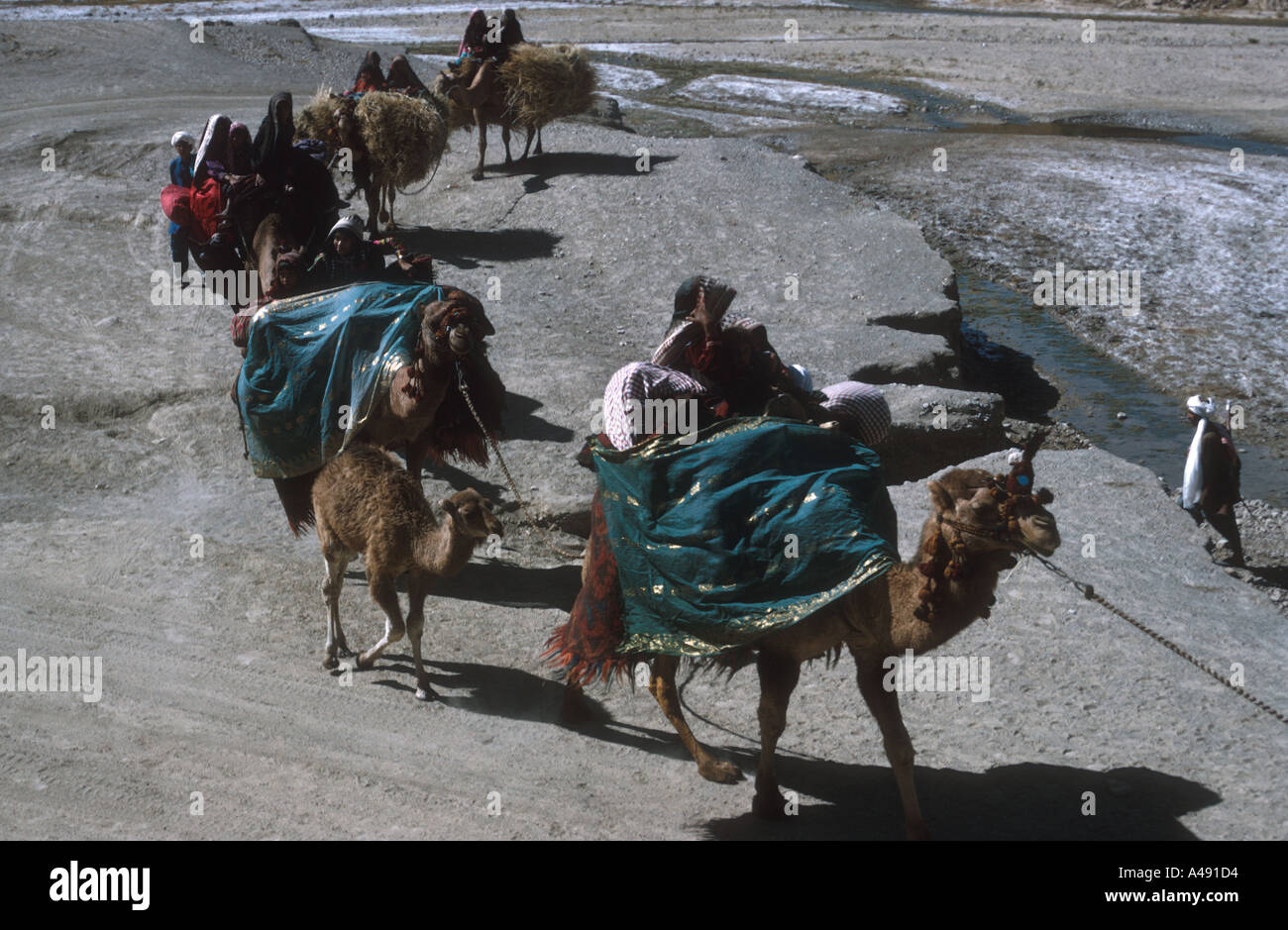 Silk Road Kuchee nomads on migration women and children on camels Yakolang west of Bamiyan Afghanistan Stock Photohttps://www.alamy.com/image-license-details/?v=1https://www.alamy.com/silk-road-kuchee-nomads-on-migration-women-and-children-on-camels-image299476.html
Silk Road Kuchee nomads on migration women and children on camels Yakolang west of Bamiyan Afghanistan Stock Photohttps://www.alamy.com/image-license-details/?v=1https://www.alamy.com/silk-road-kuchee-nomads-on-migration-women-and-children-on-camels-image299476.htmlRMA491D4–Silk Road Kuchee nomads on migration women and children on camels Yakolang west of Bamiyan Afghanistan
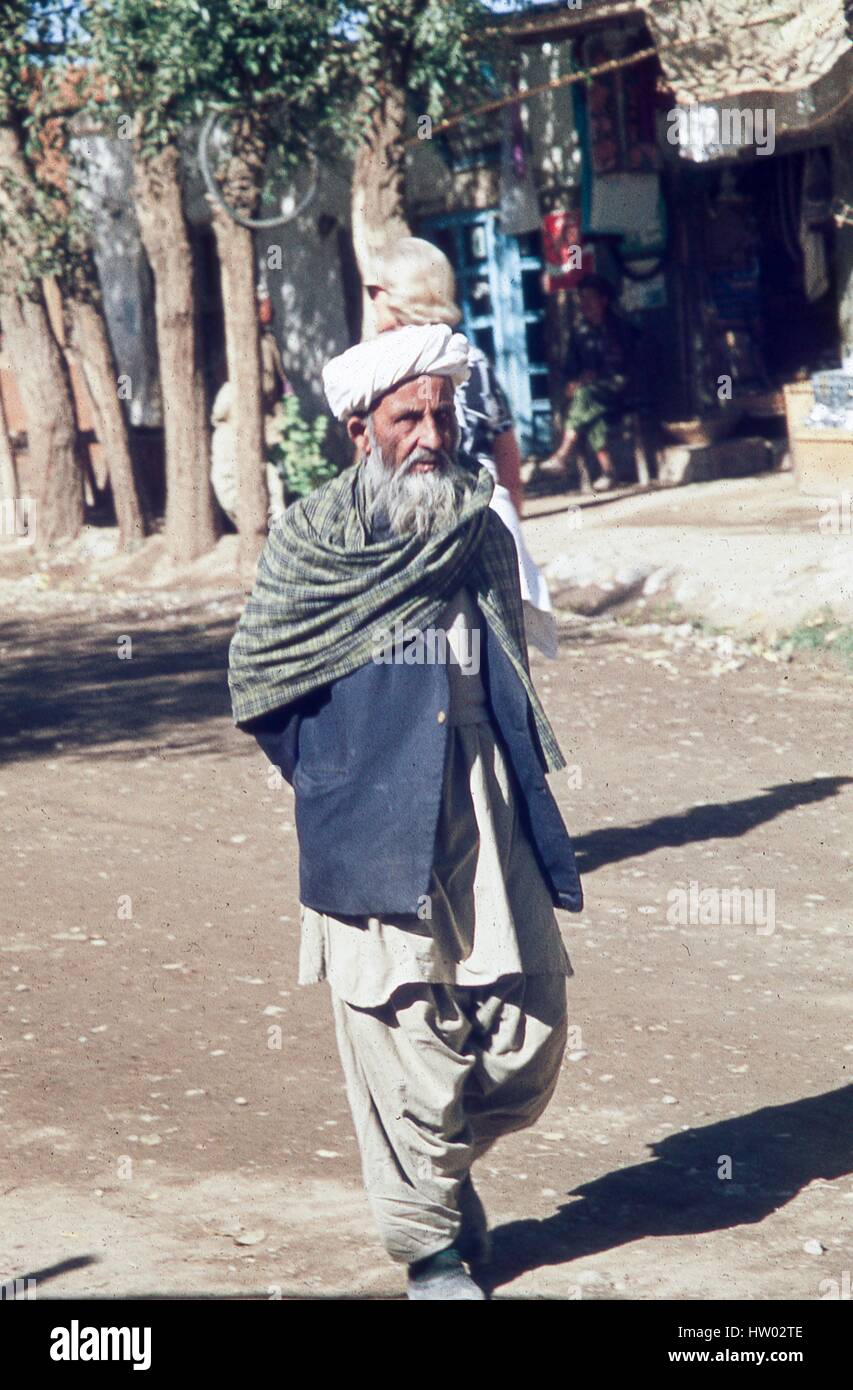 Portrait of an older man in traditional dress walking through the town square in Bamiyan, located in the Hazarajat region of central Afghanistan, November, 1975. Stock Photohttps://www.alamy.com/image-license-details/?v=1https://www.alamy.com/stock-photo-portrait-of-an-older-man-in-traditional-dress-walking-through-the-135841230.html
Portrait of an older man in traditional dress walking through the town square in Bamiyan, located in the Hazarajat region of central Afghanistan, November, 1975. Stock Photohttps://www.alamy.com/image-license-details/?v=1https://www.alamy.com/stock-photo-portrait-of-an-older-man-in-traditional-dress-walking-through-the-135841230.htmlRMHW02TE–Portrait of an older man in traditional dress walking through the town square in Bamiyan, located in the Hazarajat region of central Afghanistan, November, 1975.
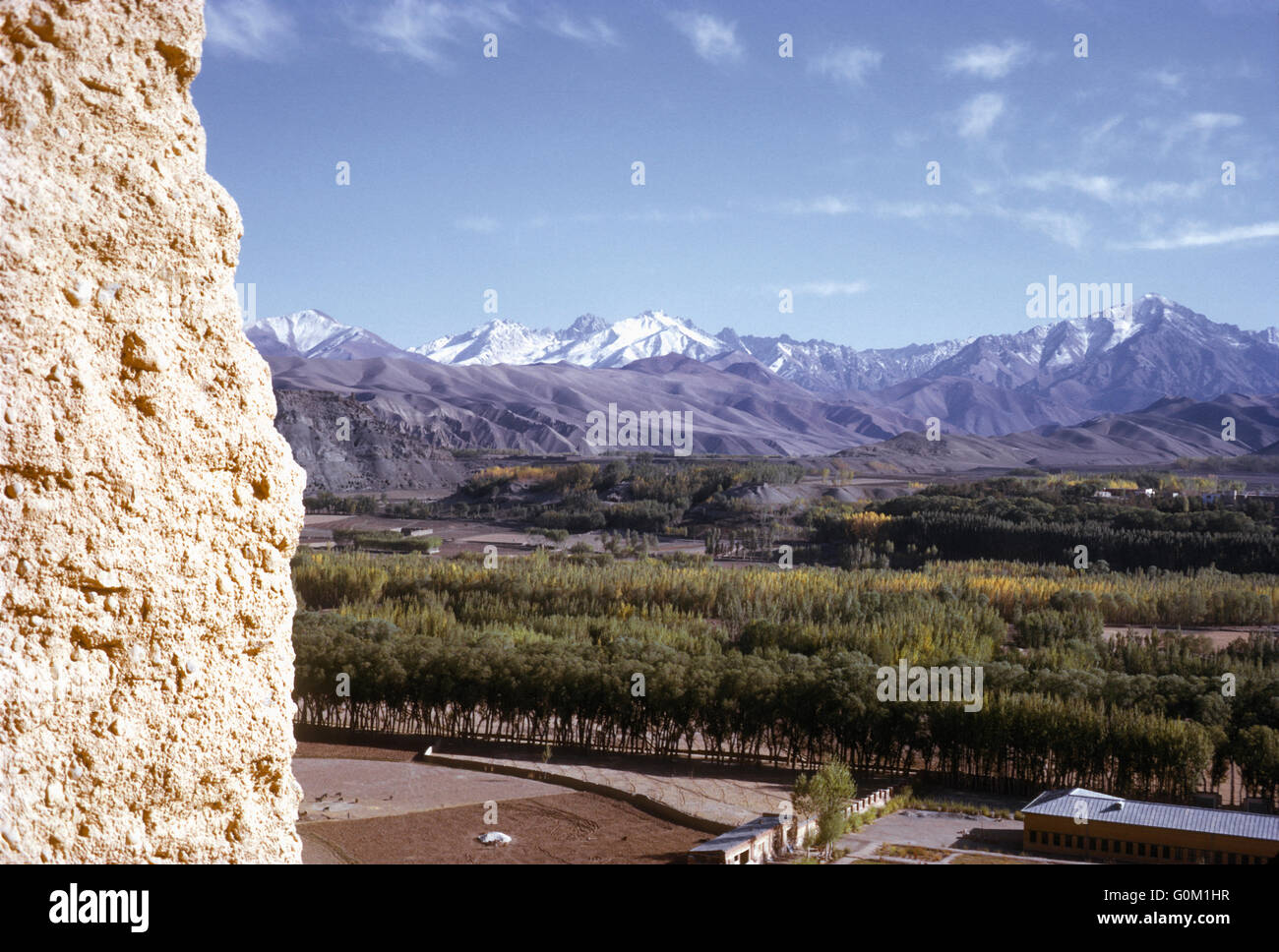 View across the Koh-i-Baba from within the ear of one of the two monumental standing Buddhas, Bamiyan, Afghanistan in 1974, before the destruction of the Buddha statues by the Taliban regime Stock Photohttps://www.alamy.com/image-license-details/?v=1https://www.alamy.com/stock-photo-view-across-the-koh-i-baba-from-within-the-ear-of-one-of-the-two-monumental-103702531.html
View across the Koh-i-Baba from within the ear of one of the two monumental standing Buddhas, Bamiyan, Afghanistan in 1974, before the destruction of the Buddha statues by the Taliban regime Stock Photohttps://www.alamy.com/image-license-details/?v=1https://www.alamy.com/stock-photo-view-across-the-koh-i-baba-from-within-the-ear-of-one-of-the-two-monumental-103702531.htmlRMG0M1HR–View across the Koh-i-Baba from within the ear of one of the two monumental standing Buddhas, Bamiyan, Afghanistan in 1974, before the destruction of the Buddha statues by the Taliban regime
 N/A. English: Ladies Of Caubul This lithograph is taken from plate 24 of 'Afghaunistan' by Lieutenant James Rattray. A political mission composed of Doctor Lord and Captain Rattray (James' brother) was established at Bamiyan. This was the frontier city of Afghanistan and the first spot which could be attained by the Russians. It was also the only road by which the exiled Dost Mohammed could revisit his kingdom. The region was famed for its Buddhist statues. Shakar Lab ('Sugar Lips') was the favourite wife of a former governor of Bamiyan and niece by marriage to Dost Mohammed. As a great favour Stock Photohttps://www.alamy.com/image-license-details/?v=1https://www.alamy.com/na-english-ladies-of-caubul-this-lithograph-is-taken-from-plate-24-of-afghaunistan-by-lieutenant-james-rattray-a-political-mission-composed-of-doctor-lord-and-captain-rattray-james-brother-was-established-at-bamiyan-this-was-the-frontier-city-of-afghanistan-and-the-first-spot-which-could-be-attained-by-the-russians-it-was-also-the-only-road-by-which-the-exiled-dost-mohammed-could-revisit-his-kingdom-the-region-was-famed-for-its-buddhist-statues-shakar-lab-sugar-lips-was-the-favourite-wife-of-a-former-governor-of-bamiyan-and-niece-by-marriage-to-dost-mohammed-as-a-great-favour-image210024837.html
N/A. English: Ladies Of Caubul This lithograph is taken from plate 24 of 'Afghaunistan' by Lieutenant James Rattray. A political mission composed of Doctor Lord and Captain Rattray (James' brother) was established at Bamiyan. This was the frontier city of Afghanistan and the first spot which could be attained by the Russians. It was also the only road by which the exiled Dost Mohammed could revisit his kingdom. The region was famed for its Buddhist statues. Shakar Lab ('Sugar Lips') was the favourite wife of a former governor of Bamiyan and niece by marriage to Dost Mohammed. As a great favour Stock Photohttps://www.alamy.com/image-license-details/?v=1https://www.alamy.com/na-english-ladies-of-caubul-this-lithograph-is-taken-from-plate-24-of-afghaunistan-by-lieutenant-james-rattray-a-political-mission-composed-of-doctor-lord-and-captain-rattray-james-brother-was-established-at-bamiyan-this-was-the-frontier-city-of-afghanistan-and-the-first-spot-which-could-be-attained-by-the-russians-it-was-also-the-only-road-by-which-the-exiled-dost-mohammed-could-revisit-his-kingdom-the-region-was-famed-for-its-buddhist-statues-shakar-lab-sugar-lips-was-the-favourite-wife-of-a-former-governor-of-bamiyan-and-niece-by-marriage-to-dost-mohammed-as-a-great-favour-image210024837.htmlRMP5KCR1–N/A. English: Ladies Of Caubul This lithograph is taken from plate 24 of 'Afghaunistan' by Lieutenant James Rattray. A political mission composed of Doctor Lord and Captain Rattray (James' brother) was established at Bamiyan. This was the frontier city of Afghanistan and the first spot which could be attained by the Russians. It was also the only road by which the exiled Dost Mohammed could revisit his kingdom. The region was famed for its Buddhist statues. Shakar Lab ('Sugar Lips') was the favourite wife of a former governor of Bamiyan and niece by marriage to Dost Mohammed. As a great favour
 Bamiyan Valley and the Koh-i-Baba, Afghanistan, 1974 Stock Photohttps://www.alamy.com/image-license-details/?v=1https://www.alamy.com/stock-photo-bamiyan-valley-and-the-koh-i-baba-afghanistan-1974-104156155.html
Bamiyan Valley and the Koh-i-Baba, Afghanistan, 1974 Stock Photohttps://www.alamy.com/image-license-details/?v=1https://www.alamy.com/stock-photo-bamiyan-valley-and-the-koh-i-baba-afghanistan-1974-104156155.htmlRMG1CM6K–Bamiyan Valley and the Koh-i-Baba, Afghanistan, 1974
 Afghanistan, Niche with painting of seated Buddha, UNESCO World Heritage site of Bamiyan, Buddha statue and monastic caves Stock Photohttps://www.alamy.com/image-license-details/?v=1https://www.alamy.com/stock-photo-afghanistan-niche-with-painting-of-seated-buddha-unesco-world-heritage-11928907.html
Afghanistan, Niche with painting of seated Buddha, UNESCO World Heritage site of Bamiyan, Buddha statue and monastic caves Stock Photohttps://www.alamy.com/image-license-details/?v=1https://www.alamy.com/stock-photo-afghanistan-niche-with-painting-of-seated-buddha-unesco-world-heritage-11928907.htmlRMA7XHAM–Afghanistan, Niche with painting of seated Buddha, UNESCO World Heritage site of Bamiyan, Buddha statue and monastic caves
 Afghanistan, Bamiyan. Shahidan Pass Stock Photohttps://www.alamy.com/image-license-details/?v=1https://www.alamy.com/stock-photo-afghanistan-bamiyan-shahidan-pass-30815187.html
Afghanistan, Bamiyan. Shahidan Pass Stock Photohttps://www.alamy.com/image-license-details/?v=1https://www.alamy.com/stock-photo-afghanistan-bamiyan-shahidan-pass-30815187.htmlRMBP3N2B–Afghanistan, Bamiyan. Shahidan Pass
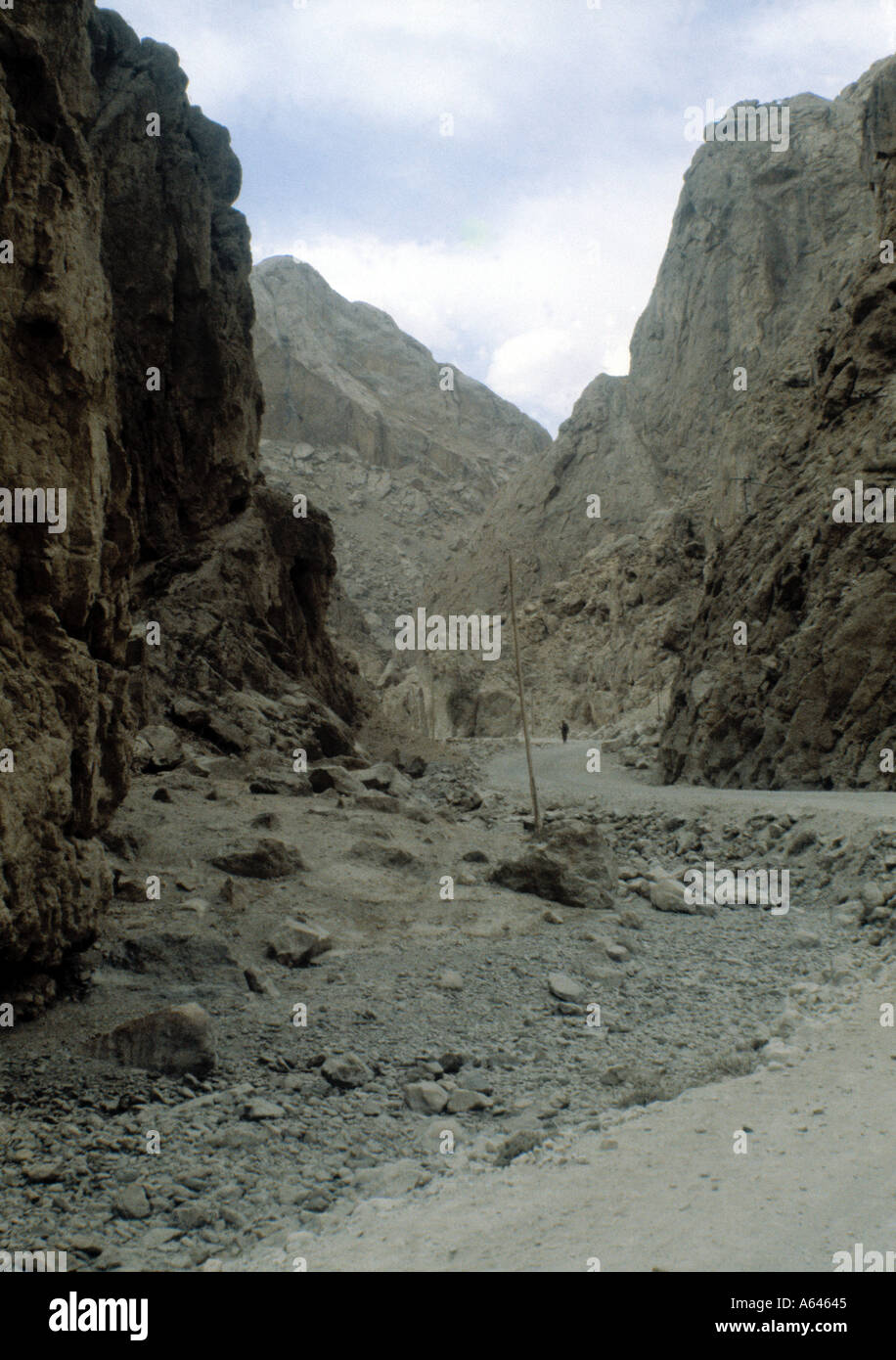 Road to Bamiyan from Kabul Stock Photohttps://www.alamy.com/image-license-details/?v=1https://www.alamy.com/road-to-bamiyan-from-kabul-image411205.html
Road to Bamiyan from Kabul Stock Photohttps://www.alamy.com/image-license-details/?v=1https://www.alamy.com/road-to-bamiyan-from-kabul-image411205.htmlRMA64645–Road to Bamiyan from Kabul
 Villager Driving Motorcycle On Asphalt Road From Bamyan To Band-e Amir National Park, Bamyan Province, Afghanistan Stock Photohttps://www.alamy.com/image-license-details/?v=1https://www.alamy.com/villager-driving-motorcycle-on-asphalt-road-from-bamyan-to-band-e-amir-national-park-bamyan-province-afghanistan-image224673591.html
Villager Driving Motorcycle On Asphalt Road From Bamyan To Band-e Amir National Park, Bamyan Province, Afghanistan Stock Photohttps://www.alamy.com/image-license-details/?v=1https://www.alamy.com/villager-driving-motorcycle-on-asphalt-road-from-bamyan-to-band-e-amir-national-park-bamyan-province-afghanistan-image224673591.htmlRMR1ENCR–Villager Driving Motorcycle On Asphalt Road From Bamyan To Band-e Amir National Park, Bamyan Province, Afghanistan
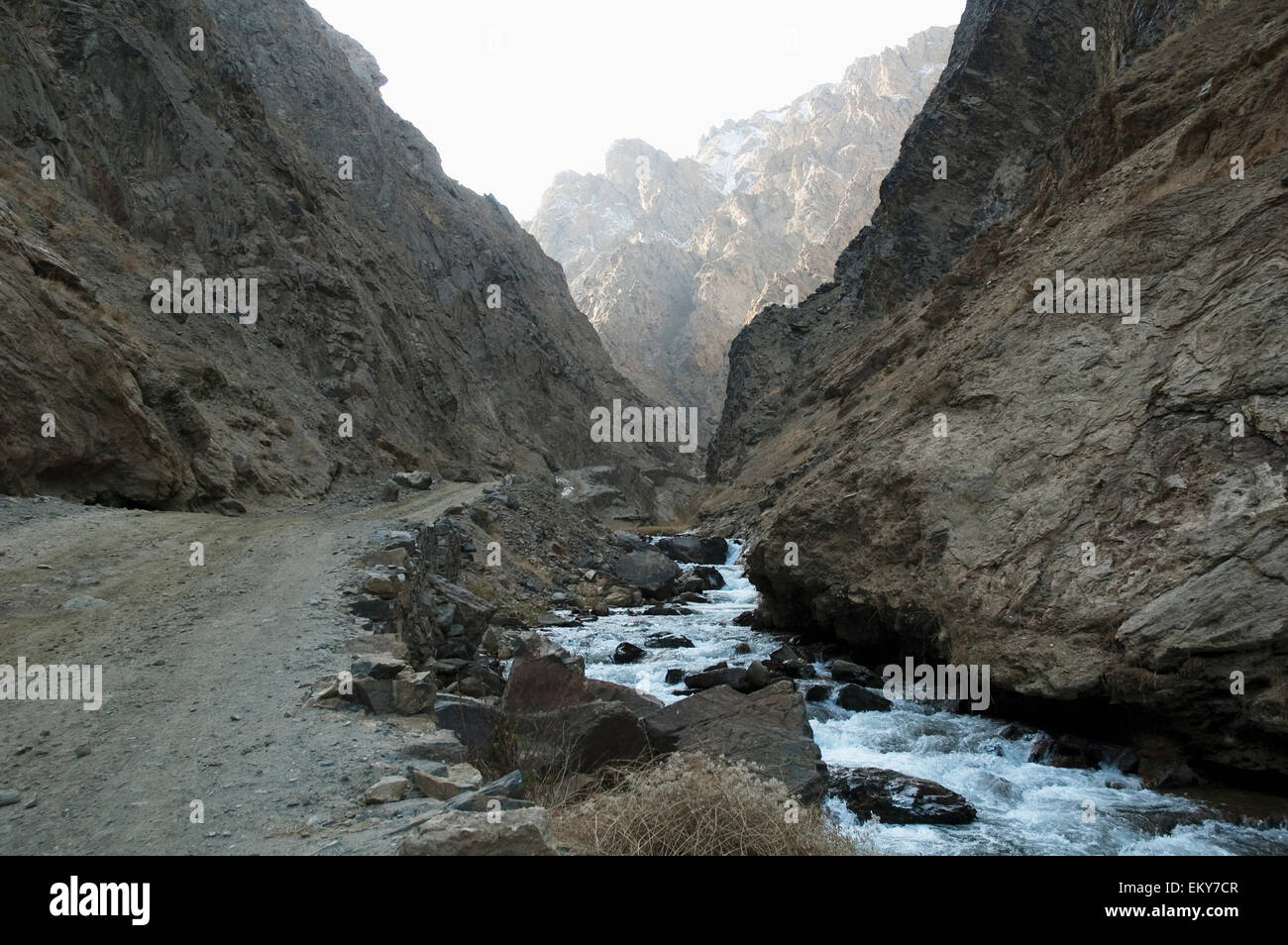 Road Along The Pai Mori Gorge, Bamian Province, Afghanistan Stock Photohttps://www.alamy.com/image-license-details/?v=1https://www.alamy.com/stock-photo-road-along-the-pai-mori-gorge-bamian-province-afghanistan-81118487.html
Road Along The Pai Mori Gorge, Bamian Province, Afghanistan Stock Photohttps://www.alamy.com/image-license-details/?v=1https://www.alamy.com/stock-photo-road-along-the-pai-mori-gorge-bamian-province-afghanistan-81118487.htmlRMEKY7CR–Road Along The Pai Mori Gorge, Bamian Province, Afghanistan
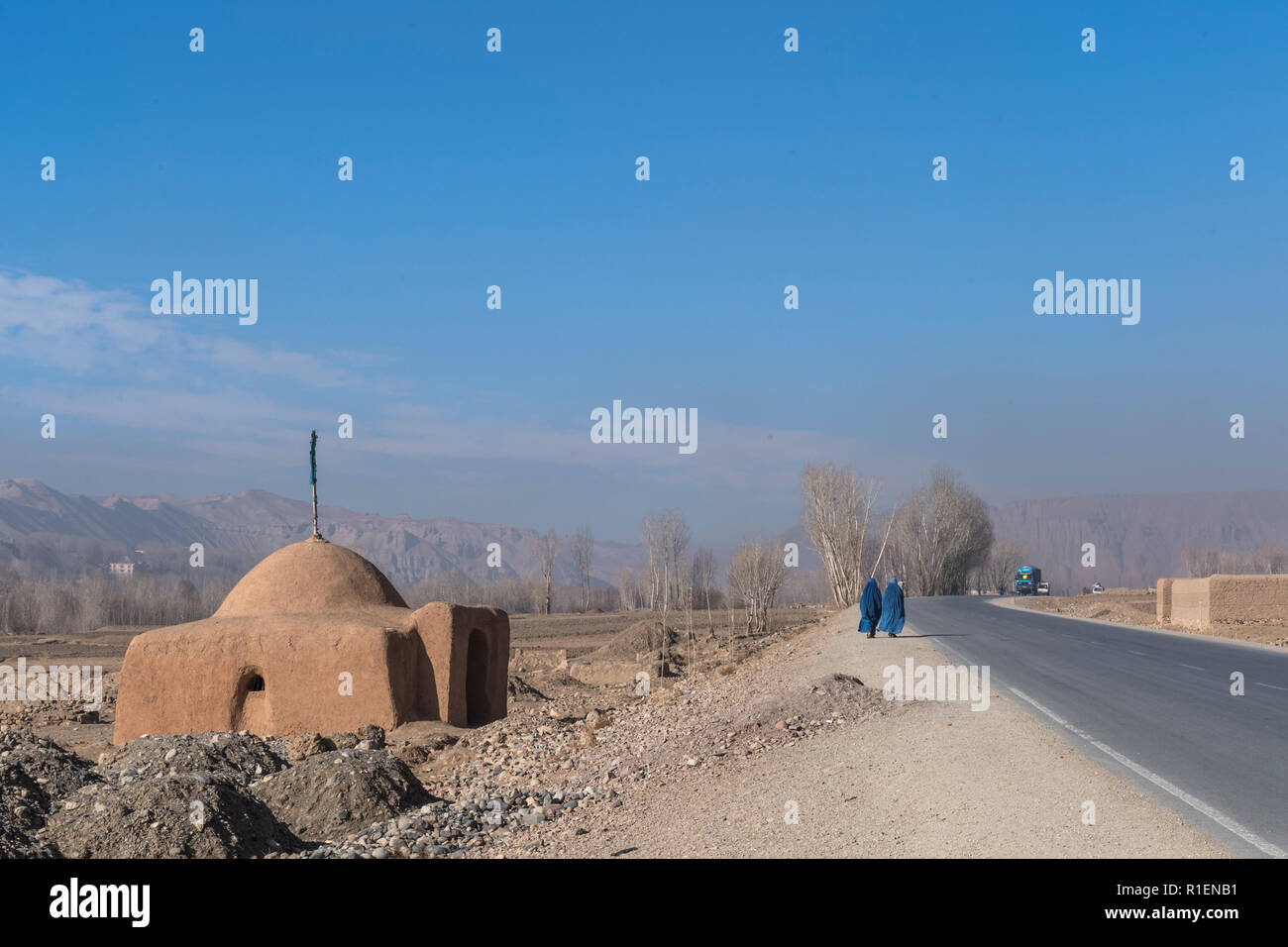 2 Ladies Wearing Blue Burqa Walking On Road Entering The Bamyan Valley With A Shrine And Mountains In The Background, Bamyan Province, Afghanistan Stock Photohttps://www.alamy.com/image-license-details/?v=1https://www.alamy.com/2-ladies-wearing-blue-burqa-walking-on-road-entering-the-bamyan-valley-with-a-shrine-and-mountains-in-the-background-bamyan-province-afghanistan-image224673541.html
2 Ladies Wearing Blue Burqa Walking On Road Entering The Bamyan Valley With A Shrine And Mountains In The Background, Bamyan Province, Afghanistan Stock Photohttps://www.alamy.com/image-license-details/?v=1https://www.alamy.com/2-ladies-wearing-blue-burqa-walking-on-road-entering-the-bamyan-valley-with-a-shrine-and-mountains-in-the-background-bamyan-province-afghanistan-image224673541.htmlRMR1ENB1–2 Ladies Wearing Blue Burqa Walking On Road Entering The Bamyan Valley With A Shrine And Mountains In The Background, Bamyan Province, Afghanistan
 Bamiyan. 28th Mar, 2018. Photo taken on March 28, 2018 shows the Shahr-e-Zuhak, also known as The Red City, in Bamiyan province, Afghanistan. The site, along with other historical sites in Bamiyan, bears witness to the history of the ancient Silk Road. Credit: Dai He/Xinhua/Alamy Live News Stock Photohttps://www.alamy.com/image-license-details/?v=1https://www.alamy.com/bamiyan-28th-mar-2018-photo-taken-on-march-28-2018-shows-the-shahr-e-zuhak-also-known-as-the-red-city-in-bamiyan-province-afghanistan-the-site-along-with-other-historical-sites-in-bamiyan-bears-witness-to-the-history-of-the-ancient-silk-road-credit-dai-hexinhuaalamy-live-news-image178464303.html
Bamiyan. 28th Mar, 2018. Photo taken on March 28, 2018 shows the Shahr-e-Zuhak, also known as The Red City, in Bamiyan province, Afghanistan. The site, along with other historical sites in Bamiyan, bears witness to the history of the ancient Silk Road. Credit: Dai He/Xinhua/Alamy Live News Stock Photohttps://www.alamy.com/image-license-details/?v=1https://www.alamy.com/bamiyan-28th-mar-2018-photo-taken-on-march-28-2018-shows-the-shahr-e-zuhak-also-known-as-the-red-city-in-bamiyan-province-afghanistan-the-site-along-with-other-historical-sites-in-bamiyan-bears-witness-to-the-history-of-the-ancient-silk-road-credit-dai-hexinhuaalamy-live-news-image178464303.htmlRMMA9N13–Bamiyan. 28th Mar, 2018. Photo taken on March 28, 2018 shows the Shahr-e-Zuhak, also known as The Red City, in Bamiyan province, Afghanistan. The site, along with other historical sites in Bamiyan, bears witness to the history of the ancient Silk Road. Credit: Dai He/Xinhua/Alamy Live News
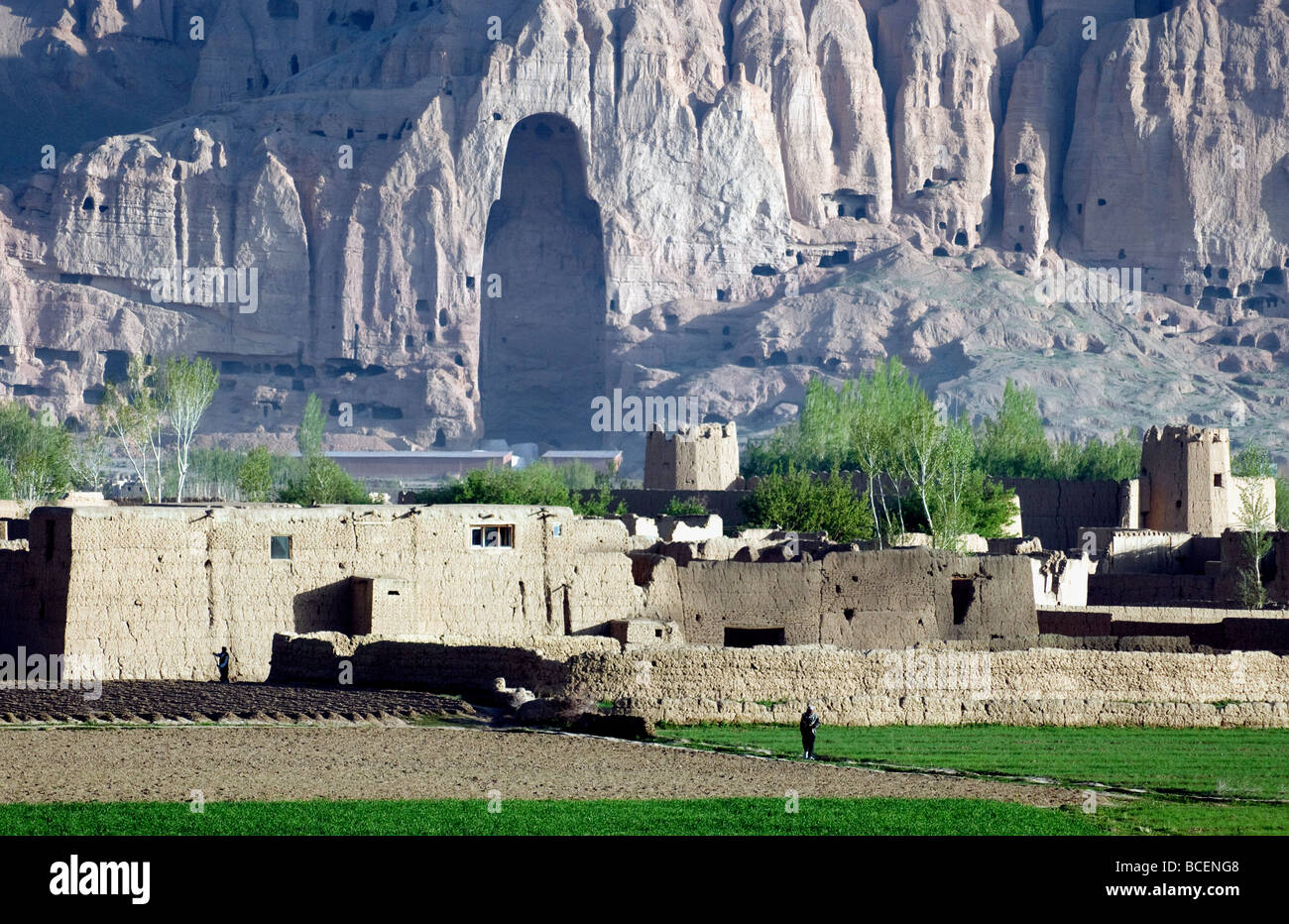 The empty niche in Bamiyan cliffs which, until 2001, held the Big Buddha, 55-m high, still dominates the peaceful valley below Stock Photohttps://www.alamy.com/image-license-details/?v=1https://www.alamy.com/stock-photo-the-empty-niche-in-bamiyan-cliffs-which-until-2001-held-the-big-buddha-24910488.html
The empty niche in Bamiyan cliffs which, until 2001, held the Big Buddha, 55-m high, still dominates the peaceful valley below Stock Photohttps://www.alamy.com/image-license-details/?v=1https://www.alamy.com/stock-photo-the-empty-niche-in-bamiyan-cliffs-which-until-2001-held-the-big-buddha-24910488.htmlRMBCENG8–The empty niche in Bamiyan cliffs which, until 2001, held the Big Buddha, 55-m high, still dominates the peaceful valley below
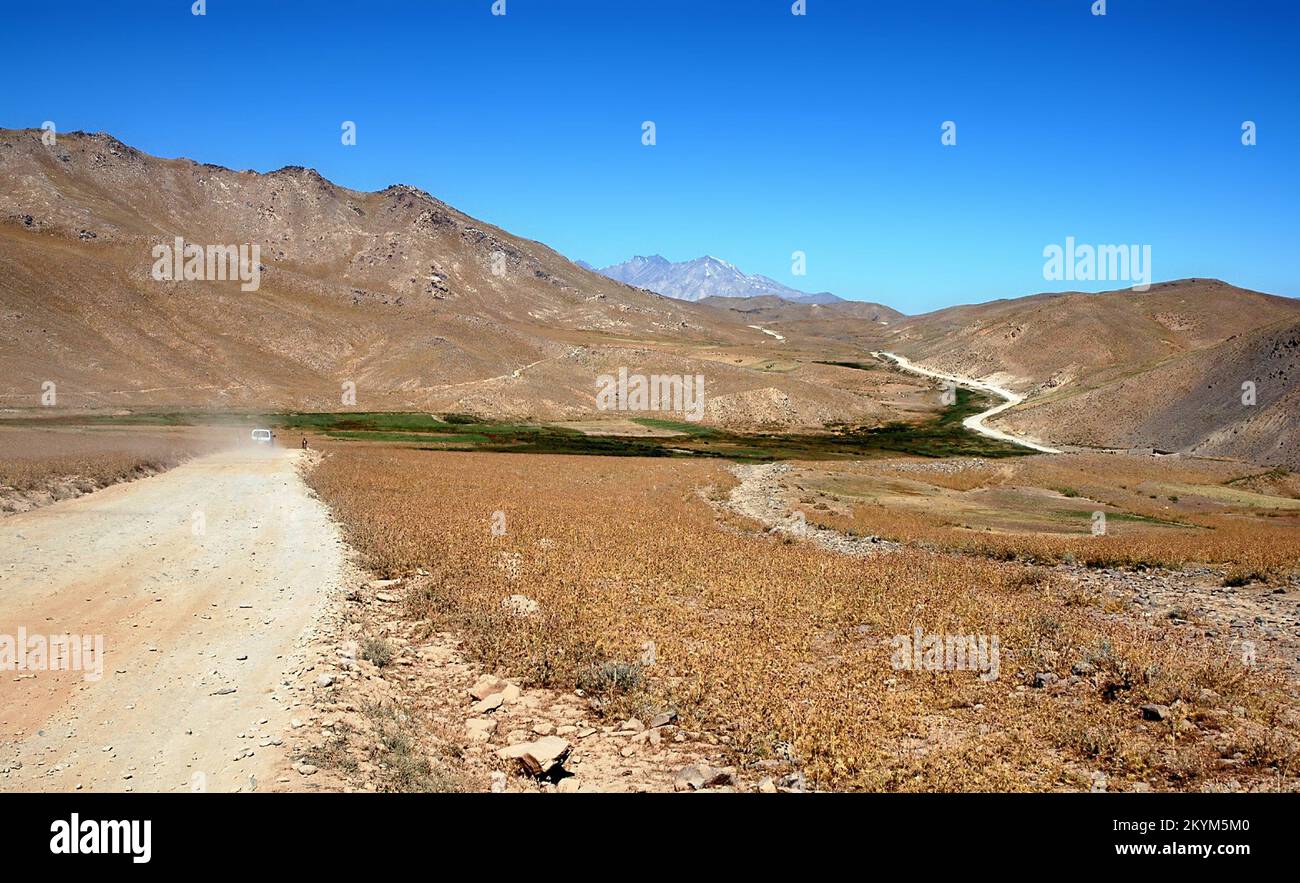 Scenery between Kabul and Bamyan (Bamiyan) in Afghanistan. Dusty road through mountain scenery on the southern route between the two cities. Stock Photohttps://www.alamy.com/image-license-details/?v=1https://www.alamy.com/scenery-between-kabul-and-bamyan-bamiyan-in-afghanistan-dusty-road-through-mountain-scenery-on-the-southern-route-between-the-two-cities-image498929536.html
Scenery between Kabul and Bamyan (Bamiyan) in Afghanistan. Dusty road through mountain scenery on the southern route between the two cities. Stock Photohttps://www.alamy.com/image-license-details/?v=1https://www.alamy.com/scenery-between-kabul-and-bamyan-bamiyan-in-afghanistan-dusty-road-through-mountain-scenery-on-the-southern-route-between-the-two-cities-image498929536.htmlRF2KYM5M0–Scenery between Kabul and Bamyan (Bamiyan) in Afghanistan. Dusty road through mountain scenery on the southern route between the two cities.
 (180330) -- BAMYAN, March 30, 2018 -- Photo taken on March 28, 2018 shows the Shahr-i-Gholghola or the City of Screams, site of the Sasanian Empire (AD 224-651), in Bamyan province, Afghanistan. The site, along with other historical sites in Bamiyan, bears witness to the history of the ancient Silk Road. ) (swt) AFGHANISTAN-BAMYAN-SITES-SHAHR-I-GHOLGHOLA DaixHe PUBLICATIONxNOTxINxCHN Stock Photohttps://www.alamy.com/image-license-details/?v=1https://www.alamy.com/180330-bamyan-march-30-2018-photo-taken-on-march-28-2018-shows-the-shahr-i-gholghola-or-the-city-of-screams-site-of-the-sasanian-empire-ad-224-651-in-bamyan-province-afghanistan-the-site-along-with-other-historical-sites-in-bamiyan-bears-witness-to-the-history-of-the-ancient-silk-road-swt-afghanistan-bamyan-sites-shahr-i-gholghola-daixhe-publicationxnotxinxchn-image564250207.html
(180330) -- BAMYAN, March 30, 2018 -- Photo taken on March 28, 2018 shows the Shahr-i-Gholghola or the City of Screams, site of the Sasanian Empire (AD 224-651), in Bamyan province, Afghanistan. The site, along with other historical sites in Bamiyan, bears witness to the history of the ancient Silk Road. ) (swt) AFGHANISTAN-BAMYAN-SITES-SHAHR-I-GHOLGHOLA DaixHe PUBLICATIONxNOTxINxCHN Stock Photohttps://www.alamy.com/image-license-details/?v=1https://www.alamy.com/180330-bamyan-march-30-2018-photo-taken-on-march-28-2018-shows-the-shahr-i-gholghola-or-the-city-of-screams-site-of-the-sasanian-empire-ad-224-651-in-bamyan-province-afghanistan-the-site-along-with-other-historical-sites-in-bamiyan-bears-witness-to-the-history-of-the-ancient-silk-road-swt-afghanistan-bamyan-sites-shahr-i-gholghola-daixhe-publicationxnotxinxchn-image564250207.htmlRM2RNYPW3–(180330) -- BAMYAN, March 30, 2018 -- Photo taken on March 28, 2018 shows the Shahr-i-Gholghola or the City of Screams, site of the Sasanian Empire (AD 224-651), in Bamyan province, Afghanistan. The site, along with other historical sites in Bamiyan, bears witness to the history of the ancient Silk Road. ) (swt) AFGHANISTAN-BAMYAN-SITES-SHAHR-I-GHOLGHOLA DaixHe PUBLICATIONxNOTxINxCHN
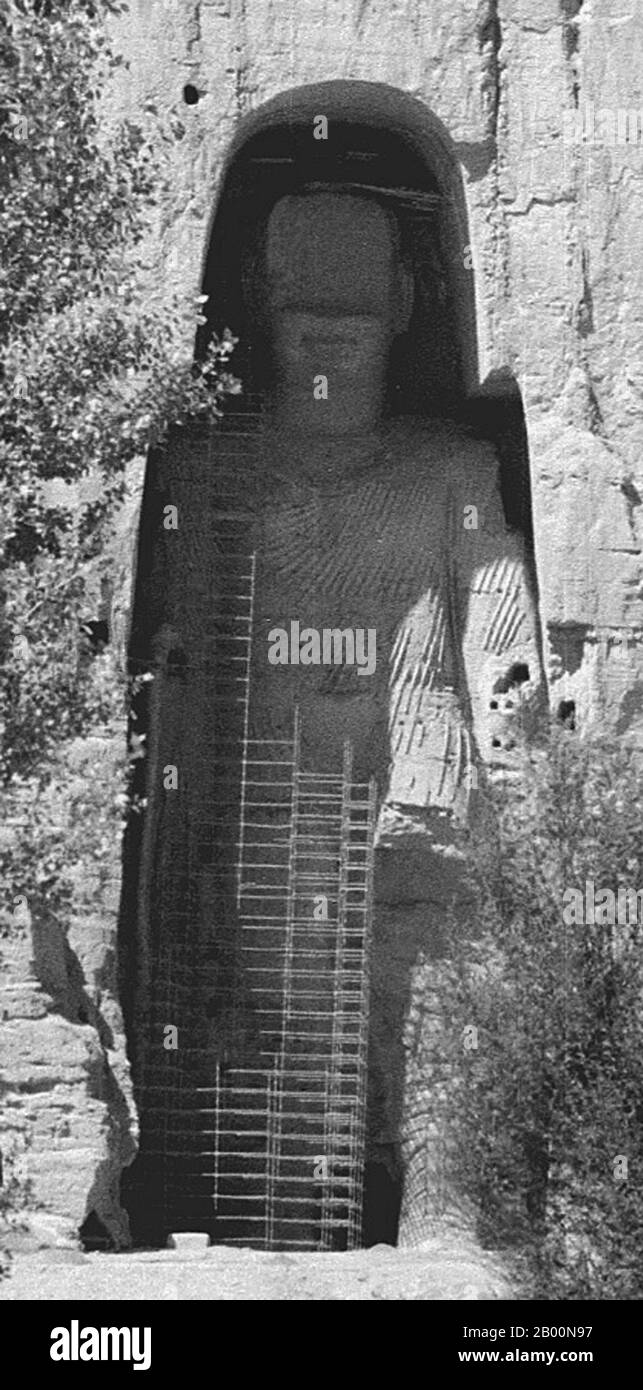 Afghanistan: Bamiyan Buddha in 1979. Photo by Andrew Forbes. The Buddhas of Bamiyan were two 6th century monumental statues of standing buddhas carved into the side of a cliff in the Bamiyan valley in the Hazarajat region of central Afghanistan, situated 230 km (143 miles) northwest of Kabul at an altitude of 2,500 meters (8,202 ft). Built in 507 CE, the larger in 554 CE, the statues represented the classic blended style of Gandhara art. The main bodies were hewn directly from the sandstone cliffs, but details were modeled in mud mixed with straw, coated with stucco. Stock Photohttps://www.alamy.com/image-license-details/?v=1https://www.alamy.com/afghanistan-bamiyan-buddha-in-1979-photo-by-andrew-forbes-the-buddhas-of-bamiyan-were-two-6th-century-monumental-statues-of-standing-buddhas-carved-into-the-side-of-a-cliff-in-the-bamiyan-valley-in-the-hazarajat-region-of-central-afghanistan-situated-230-km-143-miles-northwest-of-kabul-at-an-altitude-of-2500-meters-8202-ft-built-in-507-ce-the-larger-in-554-ce-the-statues-represented-the-classic-blended-style-of-gandhara-art-the-main-bodies-were-hewn-directly-from-the-sandstone-cliffs-but-details-were-modeled-in-mud-mixed-with-straw-coated-with-stucco-image344224083.html
Afghanistan: Bamiyan Buddha in 1979. Photo by Andrew Forbes. The Buddhas of Bamiyan were two 6th century monumental statues of standing buddhas carved into the side of a cliff in the Bamiyan valley in the Hazarajat region of central Afghanistan, situated 230 km (143 miles) northwest of Kabul at an altitude of 2,500 meters (8,202 ft). Built in 507 CE, the larger in 554 CE, the statues represented the classic blended style of Gandhara art. The main bodies were hewn directly from the sandstone cliffs, but details were modeled in mud mixed with straw, coated with stucco. Stock Photohttps://www.alamy.com/image-license-details/?v=1https://www.alamy.com/afghanistan-bamiyan-buddha-in-1979-photo-by-andrew-forbes-the-buddhas-of-bamiyan-were-two-6th-century-monumental-statues-of-standing-buddhas-carved-into-the-side-of-a-cliff-in-the-bamiyan-valley-in-the-hazarajat-region-of-central-afghanistan-situated-230-km-143-miles-northwest-of-kabul-at-an-altitude-of-2500-meters-8202-ft-built-in-507-ce-the-larger-in-554-ce-the-statues-represented-the-classic-blended-style-of-gandhara-art-the-main-bodies-were-hewn-directly-from-the-sandstone-cliffs-but-details-were-modeled-in-mud-mixed-with-straw-coated-with-stucco-image344224083.htmlRM2B00N97–Afghanistan: Bamiyan Buddha in 1979. Photo by Andrew Forbes. The Buddhas of Bamiyan were two 6th century monumental statues of standing buddhas carved into the side of a cliff in the Bamiyan valley in the Hazarajat region of central Afghanistan, situated 230 km (143 miles) northwest of Kabul at an altitude of 2,500 meters (8,202 ft). Built in 507 CE, the larger in 554 CE, the statues represented the classic blended style of Gandhara art. The main bodies were hewn directly from the sandstone cliffs, but details were modeled in mud mixed with straw, coated with stucco.
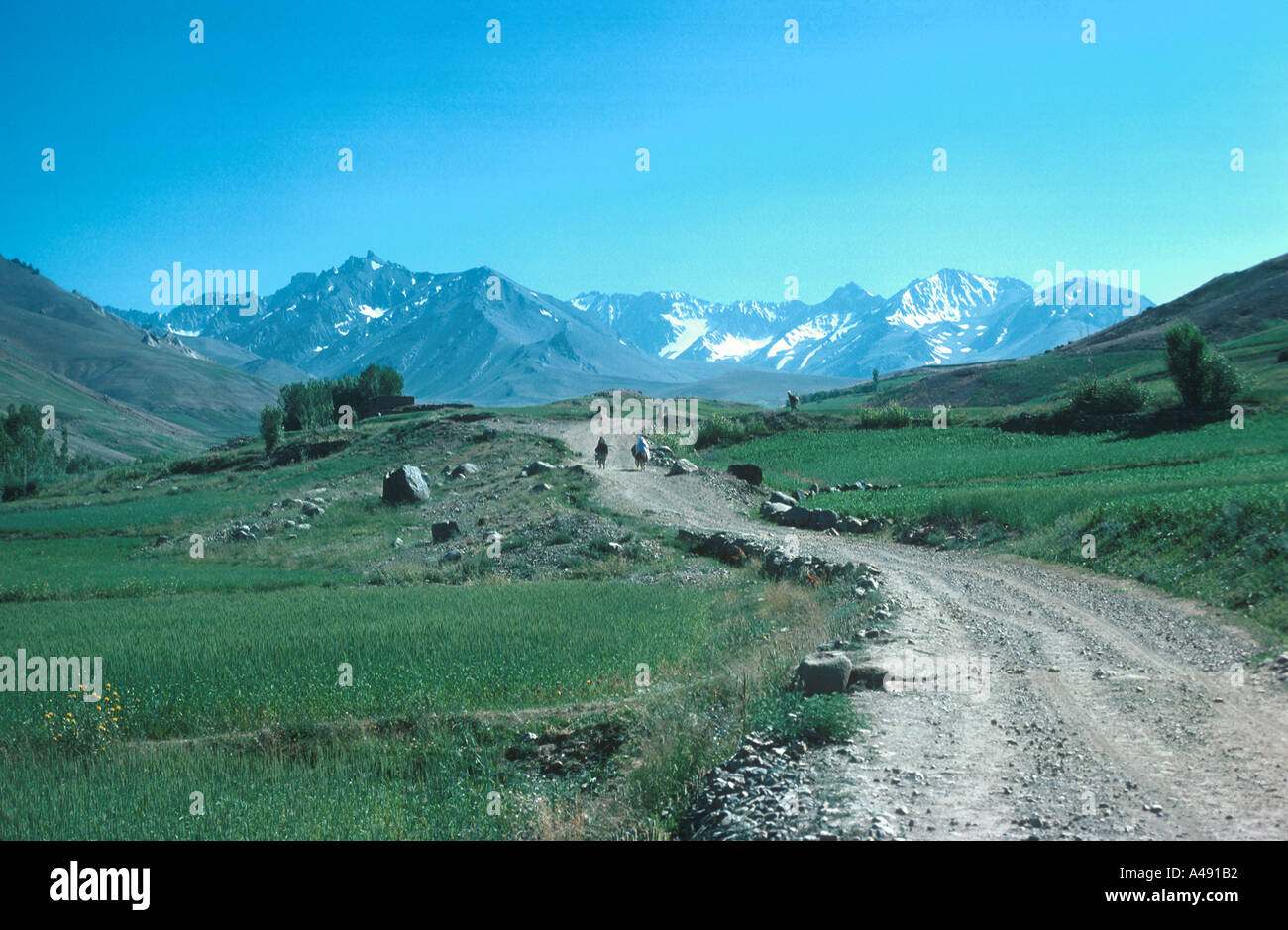 Silk Road Shah Foladi Peak 4951 metres 16 243 feet Shah Foladi valley near Bamiyan Afghanistan Stock Photohttps://www.alamy.com/image-license-details/?v=1https://www.alamy.com/silk-road-shah-foladi-peak-4951-metres-16-243-feet-shah-foladi-valley-image299442.html
Silk Road Shah Foladi Peak 4951 metres 16 243 feet Shah Foladi valley near Bamiyan Afghanistan Stock Photohttps://www.alamy.com/image-license-details/?v=1https://www.alamy.com/silk-road-shah-foladi-peak-4951-metres-16-243-feet-shah-foladi-valley-image299442.htmlRMA491B2–Silk Road Shah Foladi Peak 4951 metres 16 243 feet Shah Foladi valley near Bamiyan Afghanistan
 220318 -- BAMIYAN, March 18, 2022 -- Photo taken on March 17, 2022 shows the Shahr-e-Zuhak, also known as The Red City, in Bamiyan province, Afghanistan. The site, along with other historical sites in Bamiyan, bears witness to the history of the ancient Silk Road. Photo by /Xinhua AFGHANISTAN-BAMIYAN-SHAHR-E-ZUHAK SaifurahmanxSafi PUBLICATIONxNOTxINxCHN Stock Photohttps://www.alamy.com/image-license-details/?v=1https://www.alamy.com/220318-bamiyan-march-18-2022-photo-taken-on-march-17-2022-shows-the-shahr-e-zuhak-also-known-as-the-red-city-in-bamiyan-province-afghanistan-the-site-along-with-other-historical-sites-in-bamiyan-bears-witness-to-the-history-of-the-ancient-silk-road-photo-by-xinhua-afghanistan-bamiyan-shahr-e-zuhak-saifurahmanxsafi-publicationxnotxinxchn-image565196712.html
220318 -- BAMIYAN, March 18, 2022 -- Photo taken on March 17, 2022 shows the Shahr-e-Zuhak, also known as The Red City, in Bamiyan province, Afghanistan. The site, along with other historical sites in Bamiyan, bears witness to the history of the ancient Silk Road. Photo by /Xinhua AFGHANISTAN-BAMIYAN-SHAHR-E-ZUHAK SaifurahmanxSafi PUBLICATIONxNOTxINxCHN Stock Photohttps://www.alamy.com/image-license-details/?v=1https://www.alamy.com/220318-bamiyan-march-18-2022-photo-taken-on-march-17-2022-shows-the-shahr-e-zuhak-also-known-as-the-red-city-in-bamiyan-province-afghanistan-the-site-along-with-other-historical-sites-in-bamiyan-bears-witness-to-the-history-of-the-ancient-silk-road-photo-by-xinhua-afghanistan-bamiyan-shahr-e-zuhak-saifurahmanxsafi-publicationxnotxinxchn-image565196712.htmlRM2RREX4T–220318 -- BAMIYAN, March 18, 2022 -- Photo taken on March 17, 2022 shows the Shahr-e-Zuhak, also known as The Red City, in Bamiyan province, Afghanistan. The site, along with other historical sites in Bamiyan, bears witness to the history of the ancient Silk Road. Photo by /Xinhua AFGHANISTAN-BAMIYAN-SHAHR-E-ZUHAK SaifurahmanxSafi PUBLICATIONxNOTxINxCHN
 . English: Ladies Of Caubul (1848) A political mission composed of Doctor Lord and Captain Rattray (James' brother) was established at Bamiyan. This was the frontier city of Afghanistan and the first spot which could be attained by the Russians. It was also the only road by which the exiled Dost Mohammed could revisit his kingdom. The region was famed for its Buddhist statues. Shakar Lab ('Sugar Lips') was the favourite wife of a former governor of Bamiyan and niece by marriage to Dost Mohammed. As a great favour, Rattray was introduced to her at Kabul. Describing her as a Qizilbash belle of t Stock Photohttps://www.alamy.com/image-license-details/?v=1https://www.alamy.com/english-ladies-of-caubul-1848-a-political-mission-composed-of-doctor-lord-and-captain-rattray-james-brother-was-established-at-bamiyan-this-was-the-frontier-city-of-afghanistan-and-the-first-spot-which-could-be-attained-by-the-russians-it-was-also-the-only-road-by-which-the-exiled-dost-mohammed-could-revisit-his-kingdom-the-region-was-famed-for-its-buddhist-statues-shakar-lab-sugar-lips-was-the-favourite-wife-of-a-former-governor-of-bamiyan-and-niece-by-marriage-to-dost-mohammed-as-a-great-favour-rattray-was-introduced-to-her-at-kabul-describing-her-as-a-qizilbash-belle-of-t-image185823558.html
. English: Ladies Of Caubul (1848) A political mission composed of Doctor Lord and Captain Rattray (James' brother) was established at Bamiyan. This was the frontier city of Afghanistan and the first spot which could be attained by the Russians. It was also the only road by which the exiled Dost Mohammed could revisit his kingdom. The region was famed for its Buddhist statues. Shakar Lab ('Sugar Lips') was the favourite wife of a former governor of Bamiyan and niece by marriage to Dost Mohammed. As a great favour, Rattray was introduced to her at Kabul. Describing her as a Qizilbash belle of t Stock Photohttps://www.alamy.com/image-license-details/?v=1https://www.alamy.com/english-ladies-of-caubul-1848-a-political-mission-composed-of-doctor-lord-and-captain-rattray-james-brother-was-established-at-bamiyan-this-was-the-frontier-city-of-afghanistan-and-the-first-spot-which-could-be-attained-by-the-russians-it-was-also-the-only-road-by-which-the-exiled-dost-mohammed-could-revisit-his-kingdom-the-region-was-famed-for-its-buddhist-statues-shakar-lab-sugar-lips-was-the-favourite-wife-of-a-former-governor-of-bamiyan-and-niece-by-marriage-to-dost-mohammed-as-a-great-favour-rattray-was-introduced-to-her-at-kabul-describing-her-as-a-qizilbash-belle-of-t-image185823558.htmlRMMP8YRJ–. English: Ladies Of Caubul (1848) A political mission composed of Doctor Lord and Captain Rattray (James' brother) was established at Bamiyan. This was the frontier city of Afghanistan and the first spot which could be attained by the Russians. It was also the only road by which the exiled Dost Mohammed could revisit his kingdom. The region was famed for its Buddhist statues. Shakar Lab ('Sugar Lips') was the favourite wife of a former governor of Bamiyan and niece by marriage to Dost Mohammed. As a great favour, Rattray was introduced to her at Kabul. Describing her as a Qizilbash belle of t
 Afghanistan, Niche with painting of seated Buddha, UNESCO World Heritage site of Bamiyan, Buddha statue and monastic caves Stock Photohttps://www.alamy.com/image-license-details/?v=1https://www.alamy.com/stock-photo-afghanistan-niche-with-painting-of-seated-buddha-unesco-world-heritage-11928909.html
Afghanistan, Niche with painting of seated Buddha, UNESCO World Heritage site of Bamiyan, Buddha statue and monastic caves Stock Photohttps://www.alamy.com/image-license-details/?v=1https://www.alamy.com/stock-photo-afghanistan-niche-with-painting-of-seated-buddha-unesco-world-heritage-11928909.htmlRMA7XHAP–Afghanistan, Niche with painting of seated Buddha, UNESCO World Heritage site of Bamiyan, Buddha statue and monastic caves
 Afghanistan, Bamiyan. Shahidan Pass Stock Photohttps://www.alamy.com/image-license-details/?v=1https://www.alamy.com/stock-photo-afghanistan-bamiyan-shahidan-pass-30815482.html
Afghanistan, Bamiyan. Shahidan Pass Stock Photohttps://www.alamy.com/image-license-details/?v=1https://www.alamy.com/stock-photo-afghanistan-bamiyan-shahidan-pass-30815482.htmlRMBP3NCX–Afghanistan, Bamiyan. Shahidan Pass
 Road Along The Pai Mori Gorge, Bamian Province, Afghanistan Stock Photohttps://www.alamy.com/image-license-details/?v=1https://www.alamy.com/stock-photo-road-along-the-pai-mori-gorge-bamian-province-afghanistan-81118486.html
Road Along The Pai Mori Gorge, Bamian Province, Afghanistan Stock Photohttps://www.alamy.com/image-license-details/?v=1https://www.alamy.com/stock-photo-road-along-the-pai-mori-gorge-bamian-province-afghanistan-81118486.htmlRMEKY7CP–Road Along The Pai Mori Gorge, Bamian Province, Afghanistan
 Boy Cycling On Asphalt Road Entering The Bamyan Valley With A Shrine And Snow-Capped Mountains In The Background, Bamyan Province, Afghanistan Stock Photohttps://www.alamy.com/image-license-details/?v=1https://www.alamy.com/boy-cycling-on-asphalt-road-entering-the-bamyan-valley-with-a-shrine-and-snow-capped-mountains-in-the-background-bamyan-province-afghanistan-image224673542.html
Boy Cycling On Asphalt Road Entering The Bamyan Valley With A Shrine And Snow-Capped Mountains In The Background, Bamyan Province, Afghanistan Stock Photohttps://www.alamy.com/image-license-details/?v=1https://www.alamy.com/boy-cycling-on-asphalt-road-entering-the-bamyan-valley-with-a-shrine-and-snow-capped-mountains-in-the-background-bamyan-province-afghanistan-image224673542.htmlRMR1ENB2–Boy Cycling On Asphalt Road Entering The Bamyan Valley With A Shrine And Snow-Capped Mountains In The Background, Bamyan Province, Afghanistan
 Bamiyan. 28th Mar, 2018. Photo taken on March 28, 2018 shows the Shahr-e-Zuhak, also known as The Red City, in Bamiyan province, Afghanistan. The site, along with other historical sites in Bamiyan, bears witness to the history of the ancient Silk Road. Credit: Dai He/Xinhua/Alamy Live News Stock Photohttps://www.alamy.com/image-license-details/?v=1https://www.alamy.com/bamiyan-28th-mar-2018-photo-taken-on-march-28-2018-shows-the-shahr-e-zuhak-also-known-as-the-red-city-in-bamiyan-province-afghanistan-the-site-along-with-other-historical-sites-in-bamiyan-bears-witness-to-the-history-of-the-ancient-silk-road-credit-dai-hexinhuaalamy-live-news-image178464309.html
Bamiyan. 28th Mar, 2018. Photo taken on March 28, 2018 shows the Shahr-e-Zuhak, also known as The Red City, in Bamiyan province, Afghanistan. The site, along with other historical sites in Bamiyan, bears witness to the history of the ancient Silk Road. Credit: Dai He/Xinhua/Alamy Live News Stock Photohttps://www.alamy.com/image-license-details/?v=1https://www.alamy.com/bamiyan-28th-mar-2018-photo-taken-on-march-28-2018-shows-the-shahr-e-zuhak-also-known-as-the-red-city-in-bamiyan-province-afghanistan-the-site-along-with-other-historical-sites-in-bamiyan-bears-witness-to-the-history-of-the-ancient-silk-road-credit-dai-hexinhuaalamy-live-news-image178464309.htmlRMMA9N19–Bamiyan. 28th Mar, 2018. Photo taken on March 28, 2018 shows the Shahr-e-Zuhak, also known as The Red City, in Bamiyan province, Afghanistan. The site, along with other historical sites in Bamiyan, bears witness to the history of the ancient Silk Road. Credit: Dai He/Xinhua/Alamy Live News
 Afghan Men On A Dusty Road In Bamiyan, Bamian Province, Afghanistan Stock Photohttps://www.alamy.com/image-license-details/?v=1https://www.alamy.com/stock-photo-afghan-men-on-a-dusty-road-in-bamiyan-bamian-province-afghanistan-81293973.html
Afghan Men On A Dusty Road In Bamiyan, Bamian Province, Afghanistan Stock Photohttps://www.alamy.com/image-license-details/?v=1https://www.alamy.com/stock-photo-afghan-men-on-a-dusty-road-in-bamiyan-bamian-province-afghanistan-81293973.htmlRMEM7785–Afghan Men On A Dusty Road In Bamiyan, Bamian Province, Afghanistan
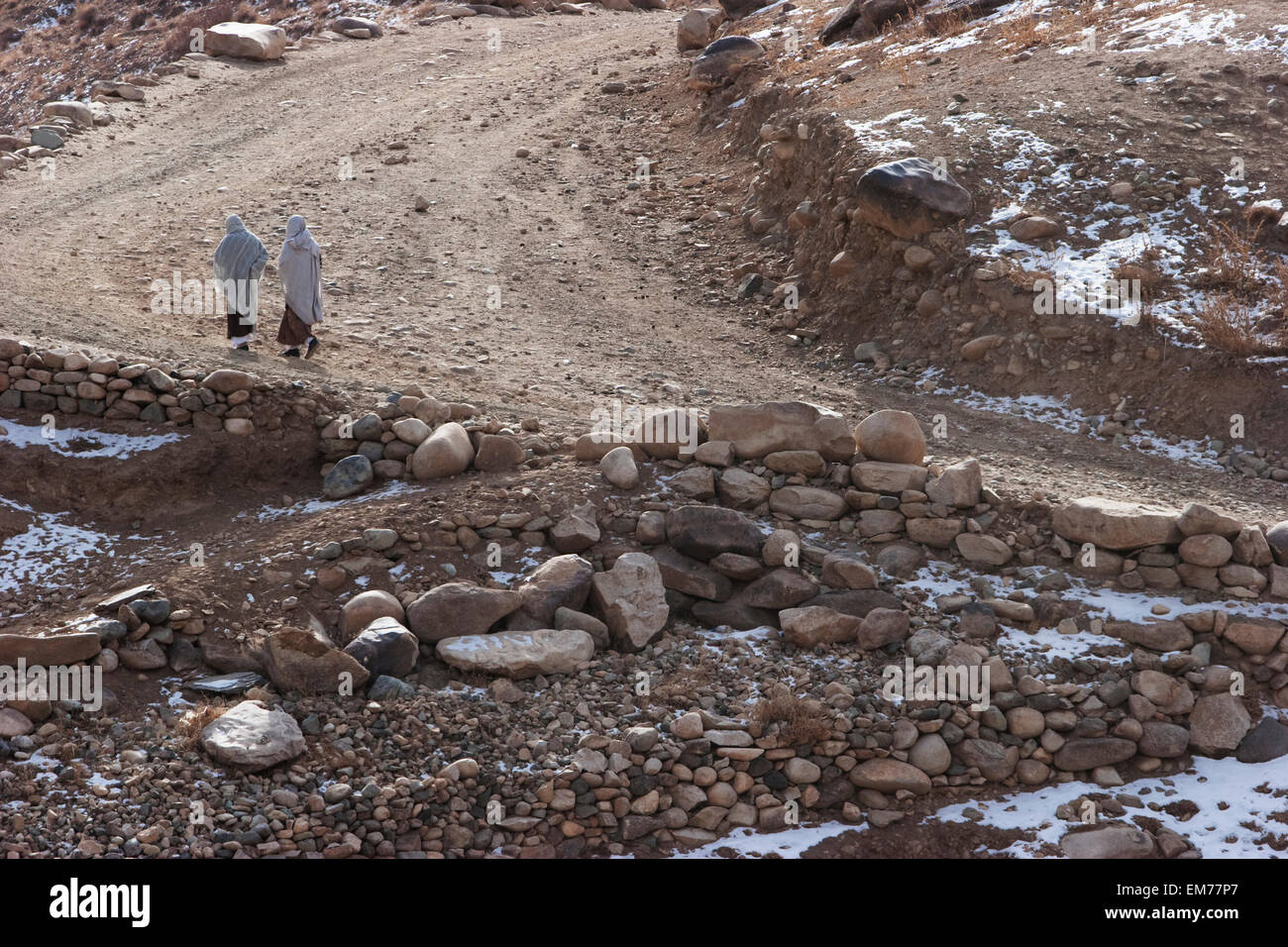 Afghan Women On A Road Near Kalu, Bamian Province, Afghanistan Stock Photohttps://www.alamy.com/image-license-details/?v=1https://www.alamy.com/stock-photo-afghan-women-on-a-road-near-kalu-bamian-province-afghanistan-81294367.html
Afghan Women On A Road Near Kalu, Bamian Province, Afghanistan Stock Photohttps://www.alamy.com/image-license-details/?v=1https://www.alamy.com/stock-photo-afghan-women-on-a-road-near-kalu-bamian-province-afghanistan-81294367.htmlRMEM77P7–Afghan Women On A Road Near Kalu, Bamian Province, Afghanistan
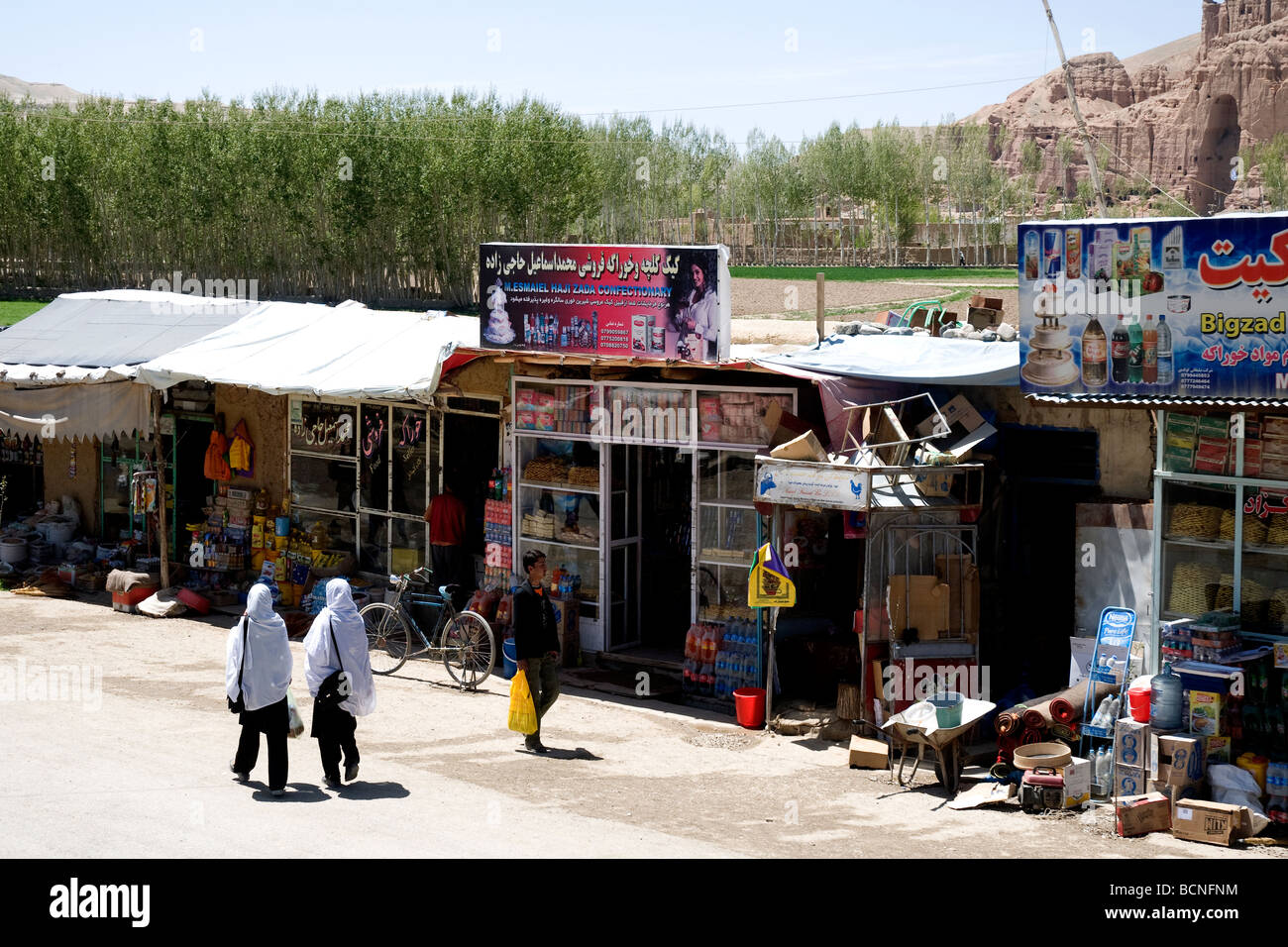 Two white-veiled schoolgirls walk up a street past Bamiyan shops, Afghanistan Stock Photohttps://www.alamy.com/image-license-details/?v=1https://www.alamy.com/stock-photo-two-white-veiled-schoolgirls-walk-up-a-street-past-bamiyan-shops-afghanistan-25059600.html
Two white-veiled schoolgirls walk up a street past Bamiyan shops, Afghanistan Stock Photohttps://www.alamy.com/image-license-details/?v=1https://www.alamy.com/stock-photo-two-white-veiled-schoolgirls-walk-up-a-street-past-bamiyan-shops-afghanistan-25059600.htmlRMBCNFNM–Two white-veiled schoolgirls walk up a street past Bamiyan shops, Afghanistan
 Scenery between Kabul and Bamyan (Bamiyan) in Afghanistan. Dusty road through mountain scenery on the southern route between the two cities. Stock Photohttps://www.alamy.com/image-license-details/?v=1https://www.alamy.com/scenery-between-kabul-and-bamyan-bamiyan-in-afghanistan-dusty-road-through-mountain-scenery-on-the-southern-route-between-the-two-cities-image498929685.html
Scenery between Kabul and Bamyan (Bamiyan) in Afghanistan. Dusty road through mountain scenery on the southern route between the two cities. Stock Photohttps://www.alamy.com/image-license-details/?v=1https://www.alamy.com/scenery-between-kabul-and-bamyan-bamiyan-in-afghanistan-dusty-road-through-mountain-scenery-on-the-southern-route-between-the-two-cities-image498929685.htmlRF2KYM5W9–Scenery between Kabul and Bamyan (Bamiyan) in Afghanistan. Dusty road through mountain scenery on the southern route between the two cities.
 Shahr-e Zohak, citadel ruins on a Bamiyan province mountaintop where the grandson of Gengis Khan was killed Stock Photohttps://www.alamy.com/image-license-details/?v=1https://www.alamy.com/stock-photo-shahr-e-zohak-citadel-ruins-on-a-bamiyan-province-mountaintop-where-25059025.html
Shahr-e Zohak, citadel ruins on a Bamiyan province mountaintop where the grandson of Gengis Khan was killed Stock Photohttps://www.alamy.com/image-license-details/?v=1https://www.alamy.com/stock-photo-shahr-e-zohak-citadel-ruins-on-a-bamiyan-province-mountaintop-where-25059025.htmlRMBCNF15–Shahr-e Zohak, citadel ruins on a Bamiyan province mountaintop where the grandson of Gengis Khan was killed
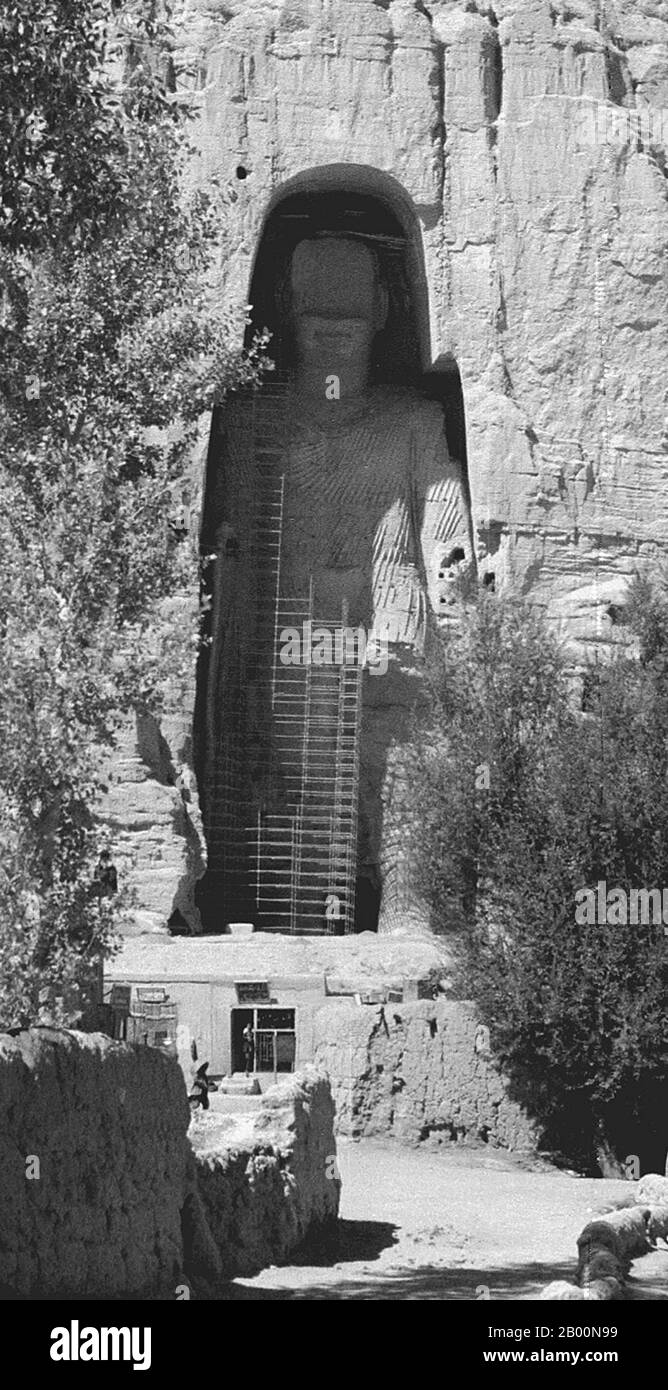 Afghanistan: Bamiyan Buddha in 1979. Photo by Andrew Forbes. The Buddhas of Bamiyan were two 6th century monumental statues of standing buddhas carved into the side of a cliff in the Bamiyan valley in the Hazarajat region of central Afghanistan, situated 230 km (143 miles) northwest of Kabul at an altitude of 2,500 meters (8,202 ft). Built in 507 CE, the larger in 554 CE, the statues represented the classic blended style of Gandhara art. The main bodies were hewn directly from the sandstone cliffs, but details were modeled in mud mixed with straw, coated with stucco. Stock Photohttps://www.alamy.com/image-license-details/?v=1https://www.alamy.com/afghanistan-bamiyan-buddha-in-1979-photo-by-andrew-forbes-the-buddhas-of-bamiyan-were-two-6th-century-monumental-statues-of-standing-buddhas-carved-into-the-side-of-a-cliff-in-the-bamiyan-valley-in-the-hazarajat-region-of-central-afghanistan-situated-230-km-143-miles-northwest-of-kabul-at-an-altitude-of-2500-meters-8202-ft-built-in-507-ce-the-larger-in-554-ce-the-statues-represented-the-classic-blended-style-of-gandhara-art-the-main-bodies-were-hewn-directly-from-the-sandstone-cliffs-but-details-were-modeled-in-mud-mixed-with-straw-coated-with-stucco-image344224085.html
Afghanistan: Bamiyan Buddha in 1979. Photo by Andrew Forbes. The Buddhas of Bamiyan were two 6th century monumental statues of standing buddhas carved into the side of a cliff in the Bamiyan valley in the Hazarajat region of central Afghanistan, situated 230 km (143 miles) northwest of Kabul at an altitude of 2,500 meters (8,202 ft). Built in 507 CE, the larger in 554 CE, the statues represented the classic blended style of Gandhara art. The main bodies were hewn directly from the sandstone cliffs, but details were modeled in mud mixed with straw, coated with stucco. Stock Photohttps://www.alamy.com/image-license-details/?v=1https://www.alamy.com/afghanistan-bamiyan-buddha-in-1979-photo-by-andrew-forbes-the-buddhas-of-bamiyan-were-two-6th-century-monumental-statues-of-standing-buddhas-carved-into-the-side-of-a-cliff-in-the-bamiyan-valley-in-the-hazarajat-region-of-central-afghanistan-situated-230-km-143-miles-northwest-of-kabul-at-an-altitude-of-2500-meters-8202-ft-built-in-507-ce-the-larger-in-554-ce-the-statues-represented-the-classic-blended-style-of-gandhara-art-the-main-bodies-were-hewn-directly-from-the-sandstone-cliffs-but-details-were-modeled-in-mud-mixed-with-straw-coated-with-stucco-image344224085.htmlRM2B00N99–Afghanistan: Bamiyan Buddha in 1979. Photo by Andrew Forbes. The Buddhas of Bamiyan were two 6th century monumental statues of standing buddhas carved into the side of a cliff in the Bamiyan valley in the Hazarajat region of central Afghanistan, situated 230 km (143 miles) northwest of Kabul at an altitude of 2,500 meters (8,202 ft). Built in 507 CE, the larger in 554 CE, the statues represented the classic blended style of Gandhara art. The main bodies were hewn directly from the sandstone cliffs, but details were modeled in mud mixed with straw, coated with stucco.
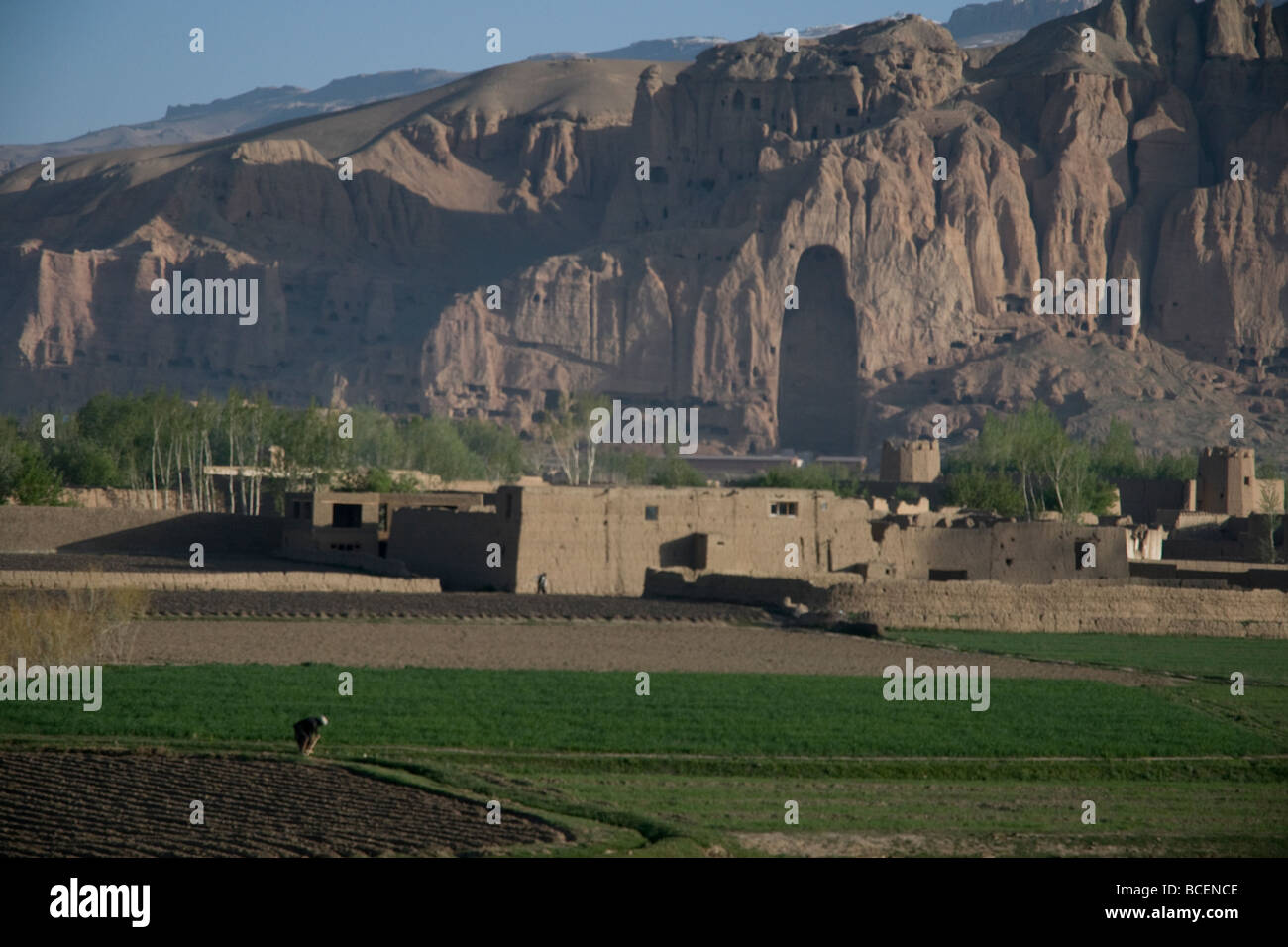 The empty niche in Bamiyan cliffs which, until 2001, held the Big Buddha, 55-m high, still dominates the peaceful valley below Stock Photohttps://www.alamy.com/image-license-details/?v=1https://www.alamy.com/stock-photo-the-empty-niche-in-bamiyan-cliffs-which-until-2001-held-the-big-buddha-24910382.html
The empty niche in Bamiyan cliffs which, until 2001, held the Big Buddha, 55-m high, still dominates the peaceful valley below Stock Photohttps://www.alamy.com/image-license-details/?v=1https://www.alamy.com/stock-photo-the-empty-niche-in-bamiyan-cliffs-which-until-2001-held-the-big-buddha-24910382.htmlRMBCENCE–The empty niche in Bamiyan cliffs which, until 2001, held the Big Buddha, 55-m high, still dominates the peaceful valley below
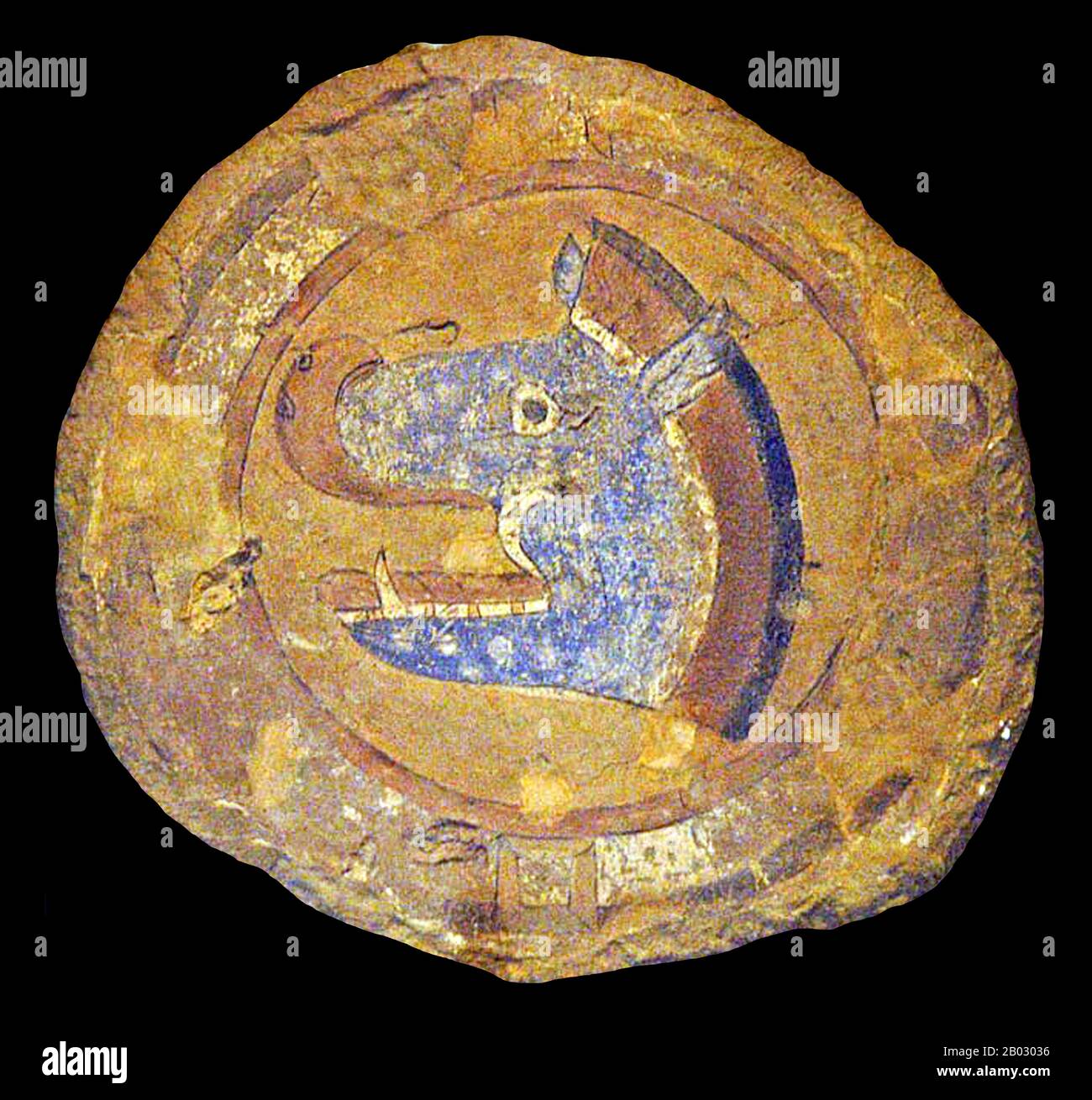 The city of Bamiyan was part of the Buddhist Kushan Empire in the early centuries of the Christian era. After the Kushan Empire fell to the Sassanids, Bamiyan became part of the Kushansha, vassals to the Sassanids. The Hephthalites conquered Bamiyan in the 5th century. After their Khanate was destroyed by the Sassanids and Turks in 565, Bamiyan became the capital of the small Kushano-Hephthalite kingdom until 870, when it was conquered by the Saffarids. The area was conquered by the Ghaznavids in the 11th century. In 1221 the city and its population were completely wiped out by Genghis Khan. Stock Photohttps://www.alamy.com/image-license-details/?v=1https://www.alamy.com/the-city-of-bamiyan-was-part-of-the-buddhist-kushan-empire-in-the-early-centuries-of-the-christian-era-after-the-kushan-empire-fell-to-the-sassanids-bamiyan-became-part-of-the-kushansha-vassals-to-the-sassanids-the-hephthalites-conquered-bamiyan-in-the-5th-century-after-their-khanate-was-destroyed-by-the-sassanids-and-turks-in-565-bamiyan-became-the-capital-of-the-small-kushano-hephthalite-kingdom-until-870-when-it-was-conquered-by-the-saffarids-the-area-was-conquered-by-the-ghaznavids-in-the-11th-century-in-1221-the-city-and-its-population-were-completely-wiped-out-by-genghis-khan-image344273306.html
The city of Bamiyan was part of the Buddhist Kushan Empire in the early centuries of the Christian era. After the Kushan Empire fell to the Sassanids, Bamiyan became part of the Kushansha, vassals to the Sassanids. The Hephthalites conquered Bamiyan in the 5th century. After their Khanate was destroyed by the Sassanids and Turks in 565, Bamiyan became the capital of the small Kushano-Hephthalite kingdom until 870, when it was conquered by the Saffarids. The area was conquered by the Ghaznavids in the 11th century. In 1221 the city and its population were completely wiped out by Genghis Khan. Stock Photohttps://www.alamy.com/image-license-details/?v=1https://www.alamy.com/the-city-of-bamiyan-was-part-of-the-buddhist-kushan-empire-in-the-early-centuries-of-the-christian-era-after-the-kushan-empire-fell-to-the-sassanids-bamiyan-became-part-of-the-kushansha-vassals-to-the-sassanids-the-hephthalites-conquered-bamiyan-in-the-5th-century-after-their-khanate-was-destroyed-by-the-sassanids-and-turks-in-565-bamiyan-became-the-capital-of-the-small-kushano-hephthalite-kingdom-until-870-when-it-was-conquered-by-the-saffarids-the-area-was-conquered-by-the-ghaznavids-in-the-11th-century-in-1221-the-city-and-its-population-were-completely-wiped-out-by-genghis-khan-image344273306.htmlRM2B03036–The city of Bamiyan was part of the Buddhist Kushan Empire in the early centuries of the Christian era. After the Kushan Empire fell to the Sassanids, Bamiyan became part of the Kushansha, vassals to the Sassanids. The Hephthalites conquered Bamiyan in the 5th century. After their Khanate was destroyed by the Sassanids and Turks in 565, Bamiyan became the capital of the small Kushano-Hephthalite kingdom until 870, when it was conquered by the Saffarids. The area was conquered by the Ghaznavids in the 11th century. In 1221 the city and its population were completely wiped out by Genghis Khan.
 220318 -- BAMIYAN, March 18, 2022 -- Photo taken on March 17, 2022 shows the Shahr-e-Zuhak, also known as the Red City, in Bamiyan province, Afghanistan. The site, along with other historical sites in Bamiyan, bears witness to the history of the ancient Silk Road. Photo by /Xinhua AFGHANISTAN-BAMIYAN-SHAHR-E-ZUHAK SaifurahmanxSafi PUBLICATIONxNOTxINxCHN Stock Photohttps://www.alamy.com/image-license-details/?v=1https://www.alamy.com/220318-bamiyan-march-18-2022-photo-taken-on-march-17-2022-shows-the-shahr-e-zuhak-also-known-as-the-red-city-in-bamiyan-province-afghanistan-the-site-along-with-other-historical-sites-in-bamiyan-bears-witness-to-the-history-of-the-ancient-silk-road-photo-by-xinhua-afghanistan-bamiyan-shahr-e-zuhak-saifurahmanxsafi-publicationxnotxinxchn-image565196703.html
220318 -- BAMIYAN, March 18, 2022 -- Photo taken on March 17, 2022 shows the Shahr-e-Zuhak, also known as the Red City, in Bamiyan province, Afghanistan. The site, along with other historical sites in Bamiyan, bears witness to the history of the ancient Silk Road. Photo by /Xinhua AFGHANISTAN-BAMIYAN-SHAHR-E-ZUHAK SaifurahmanxSafi PUBLICATIONxNOTxINxCHN Stock Photohttps://www.alamy.com/image-license-details/?v=1https://www.alamy.com/220318-bamiyan-march-18-2022-photo-taken-on-march-17-2022-shows-the-shahr-e-zuhak-also-known-as-the-red-city-in-bamiyan-province-afghanistan-the-site-along-with-other-historical-sites-in-bamiyan-bears-witness-to-the-history-of-the-ancient-silk-road-photo-by-xinhua-afghanistan-bamiyan-shahr-e-zuhak-saifurahmanxsafi-publicationxnotxinxchn-image565196703.htmlRM2RREX4F–220318 -- BAMIYAN, March 18, 2022 -- Photo taken on March 17, 2022 shows the Shahr-e-Zuhak, also known as the Red City, in Bamiyan province, Afghanistan. The site, along with other historical sites in Bamiyan, bears witness to the history of the ancient Silk Road. Photo by /Xinhua AFGHANISTAN-BAMIYAN-SHAHR-E-ZUHAK SaifurahmanxSafi PUBLICATIONxNOTxINxCHN
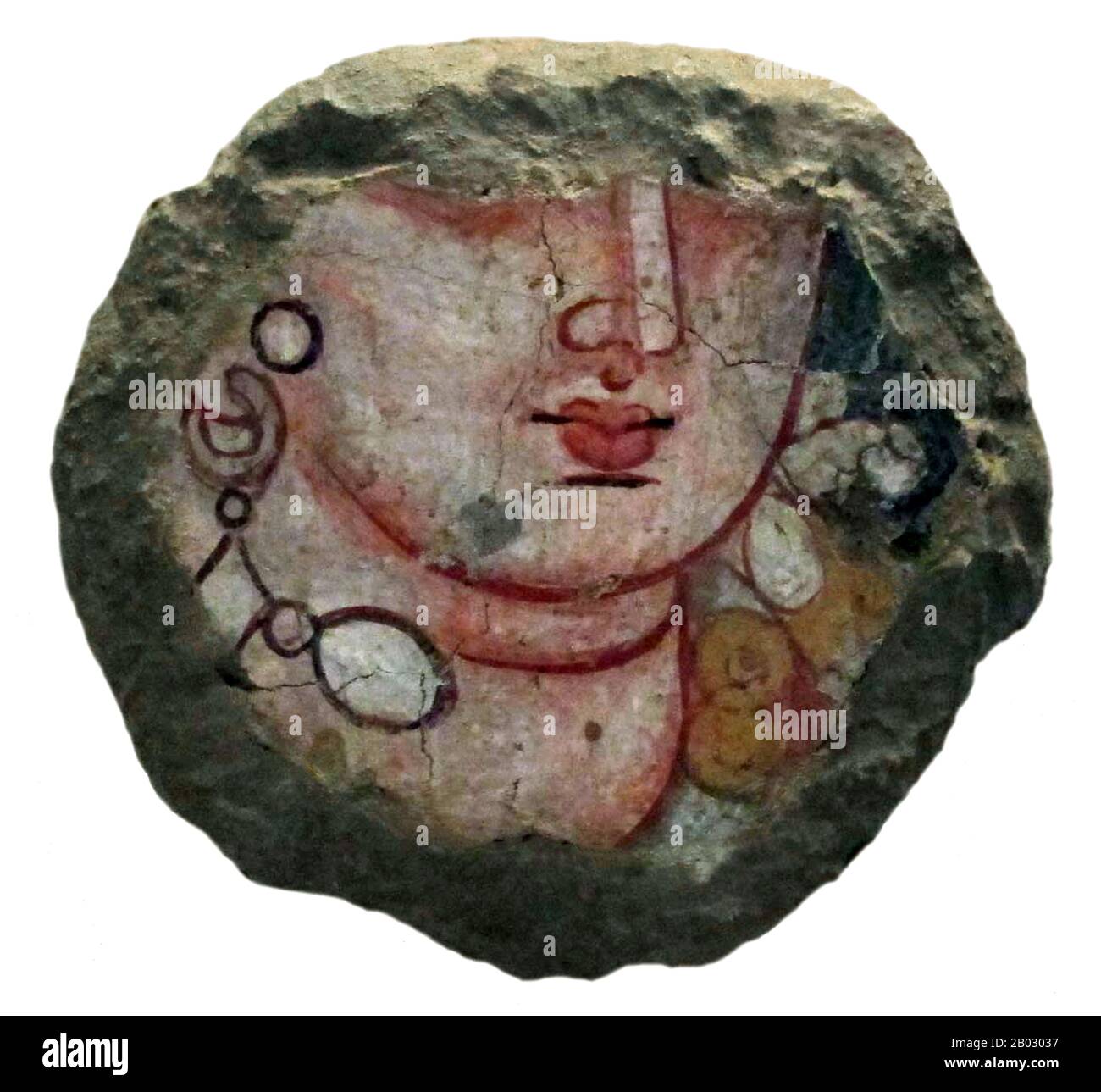 The city of Bamiyan was part of the Buddhist Kushan Empire in the early centuries of the Christian era. After the Kushan Empire fell to the Sassanids, Bamiyan became part of the Kushansha, vassals to the Sassanids. The Hephthalites conquered Bamiyan in the 5th century. After their Khanate was destroyed by the Sassanids and Turks in 565, Bamiyan became the capital of the small Kushano-Hephthalite kingdom until 870, when it was conquered by the Saffarids. The area was conquered by the Ghaznavids in the 11th century. In 1221 the city and its population were completely wiped out by Genghis Khan. Stock Photohttps://www.alamy.com/image-license-details/?v=1https://www.alamy.com/the-city-of-bamiyan-was-part-of-the-buddhist-kushan-empire-in-the-early-centuries-of-the-christian-era-after-the-kushan-empire-fell-to-the-sassanids-bamiyan-became-part-of-the-kushansha-vassals-to-the-sassanids-the-hephthalites-conquered-bamiyan-in-the-5th-century-after-their-khanate-was-destroyed-by-the-sassanids-and-turks-in-565-bamiyan-became-the-capital-of-the-small-kushano-hephthalite-kingdom-until-870-when-it-was-conquered-by-the-saffarids-the-area-was-conquered-by-the-ghaznavids-in-the-11th-century-in-1221-the-city-and-its-population-were-completely-wiped-out-by-genghis-khan-image344273307.html
The city of Bamiyan was part of the Buddhist Kushan Empire in the early centuries of the Christian era. After the Kushan Empire fell to the Sassanids, Bamiyan became part of the Kushansha, vassals to the Sassanids. The Hephthalites conquered Bamiyan in the 5th century. After their Khanate was destroyed by the Sassanids and Turks in 565, Bamiyan became the capital of the small Kushano-Hephthalite kingdom until 870, when it was conquered by the Saffarids. The area was conquered by the Ghaznavids in the 11th century. In 1221 the city and its population were completely wiped out by Genghis Khan. Stock Photohttps://www.alamy.com/image-license-details/?v=1https://www.alamy.com/the-city-of-bamiyan-was-part-of-the-buddhist-kushan-empire-in-the-early-centuries-of-the-christian-era-after-the-kushan-empire-fell-to-the-sassanids-bamiyan-became-part-of-the-kushansha-vassals-to-the-sassanids-the-hephthalites-conquered-bamiyan-in-the-5th-century-after-their-khanate-was-destroyed-by-the-sassanids-and-turks-in-565-bamiyan-became-the-capital-of-the-small-kushano-hephthalite-kingdom-until-870-when-it-was-conquered-by-the-saffarids-the-area-was-conquered-by-the-ghaznavids-in-the-11th-century-in-1221-the-city-and-its-population-were-completely-wiped-out-by-genghis-khan-image344273307.htmlRM2B03037–The city of Bamiyan was part of the Buddhist Kushan Empire in the early centuries of the Christian era. After the Kushan Empire fell to the Sassanids, Bamiyan became part of the Kushansha, vassals to the Sassanids. The Hephthalites conquered Bamiyan in the 5th century. After their Khanate was destroyed by the Sassanids and Turks in 565, Bamiyan became the capital of the small Kushano-Hephthalite kingdom until 870, when it was conquered by the Saffarids. The area was conquered by the Ghaznavids in the 11th century. In 1221 the city and its population were completely wiped out by Genghis Khan.
 Destroyed Tank On A Road In The Shahidan Valley, Bamian Province, Afghanistan Stock Photohttps://www.alamy.com/image-license-details/?v=1https://www.alamy.com/stock-photo-destroyed-tank-on-a-road-in-the-shahidan-valley-bamian-province-afghanistan-81294403.html
Destroyed Tank On A Road In The Shahidan Valley, Bamian Province, Afghanistan Stock Photohttps://www.alamy.com/image-license-details/?v=1https://www.alamy.com/stock-photo-destroyed-tank-on-a-road-in-the-shahidan-valley-bamian-province-afghanistan-81294403.htmlRMEM77RF–Destroyed Tank On A Road In The Shahidan Valley, Bamian Province, Afghanistan
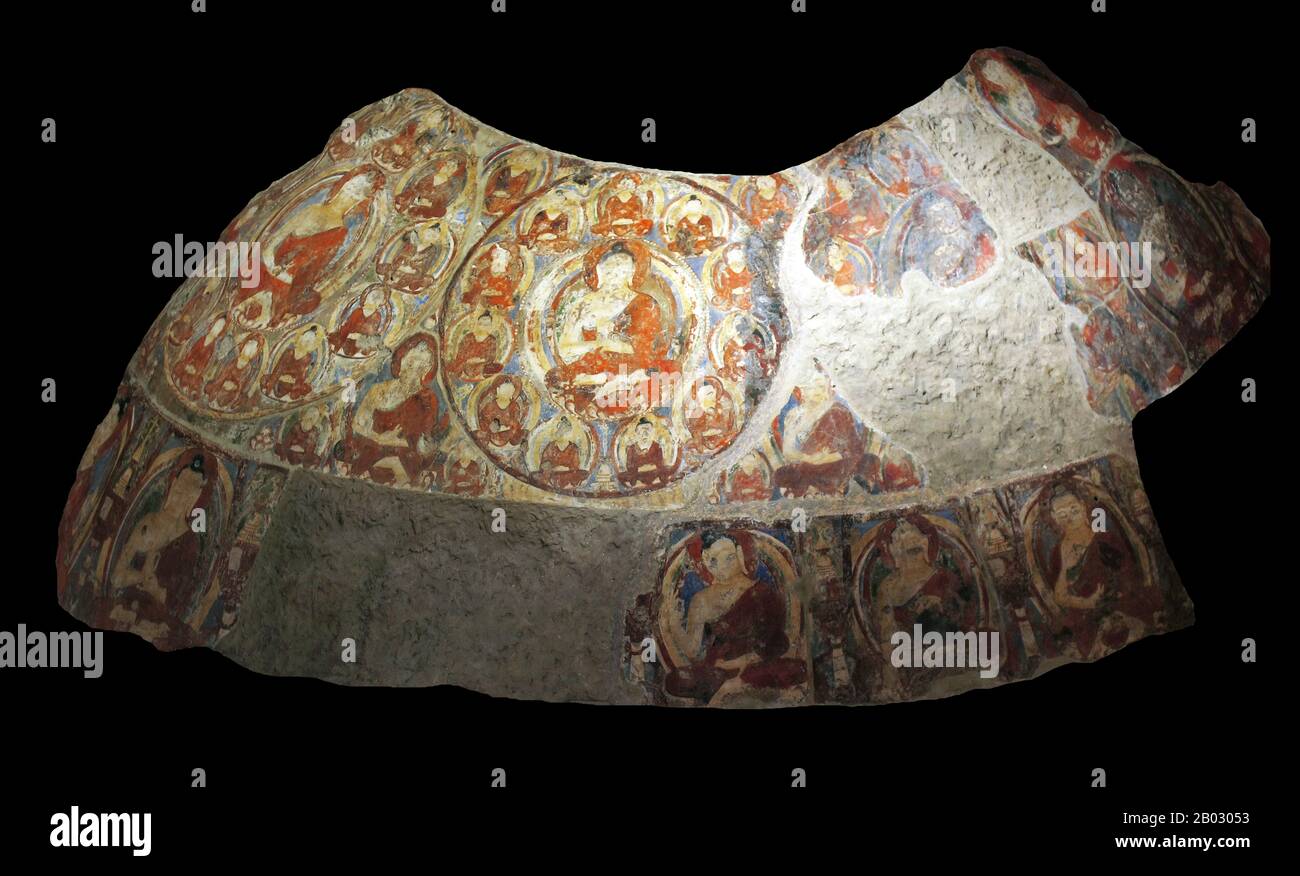 The Kakrak Valley is one of three former centres of Budddhist activity in the Koh-i-Baba mountains of central Afghanistan, along with the Bamiyan Valley itself and the nearby Foladi Valley. About 100 caves and niches are cut into the low cliffs and hills here on the east side of the valley where it meets the main Bamiyan Valley. The large niche, 7m high, contained a statue of a sitting Buddha until it was destroyed by the Taliban authorities in 2001. A sanctuary close to the niche, thought to be Sassanian, once contained brilliant wall paintings. The niches and sanctuary are believed to date Stock Photohttps://www.alamy.com/image-license-details/?v=1https://www.alamy.com/the-kakrak-valley-is-one-of-three-former-centres-of-budddhist-activity-in-the-koh-i-baba-mountains-of-central-afghanistan-along-with-the-bamiyan-valley-itself-and-the-nearby-foladi-valley-about-100-caves-and-niches-are-cut-into-the-low-cliffs-and-hills-here-on-the-east-side-of-the-valley-where-it-meets-the-main-bamiyan-valley-the-large-niche-7m-high-contained-a-statue-of-a-sitting-buddha-until-it-was-destroyed-by-the-taliban-authorities-in-2001-a-sanctuary-close-to-the-niche-thought-to-be-sassanian-once-contained-brilliant-wall-paintings-the-niches-and-sanctuary-are-believed-to-date-image344273359.html
The Kakrak Valley is one of three former centres of Budddhist activity in the Koh-i-Baba mountains of central Afghanistan, along with the Bamiyan Valley itself and the nearby Foladi Valley. About 100 caves and niches are cut into the low cliffs and hills here on the east side of the valley where it meets the main Bamiyan Valley. The large niche, 7m high, contained a statue of a sitting Buddha until it was destroyed by the Taliban authorities in 2001. A sanctuary close to the niche, thought to be Sassanian, once contained brilliant wall paintings. The niches and sanctuary are believed to date Stock Photohttps://www.alamy.com/image-license-details/?v=1https://www.alamy.com/the-kakrak-valley-is-one-of-three-former-centres-of-budddhist-activity-in-the-koh-i-baba-mountains-of-central-afghanistan-along-with-the-bamiyan-valley-itself-and-the-nearby-foladi-valley-about-100-caves-and-niches-are-cut-into-the-low-cliffs-and-hills-here-on-the-east-side-of-the-valley-where-it-meets-the-main-bamiyan-valley-the-large-niche-7m-high-contained-a-statue-of-a-sitting-buddha-until-it-was-destroyed-by-the-taliban-authorities-in-2001-a-sanctuary-close-to-the-niche-thought-to-be-sassanian-once-contained-brilliant-wall-paintings-the-niches-and-sanctuary-are-believed-to-date-image344273359.htmlRM2B03053–The Kakrak Valley is one of three former centres of Budddhist activity in the Koh-i-Baba mountains of central Afghanistan, along with the Bamiyan Valley itself and the nearby Foladi Valley. About 100 caves and niches are cut into the low cliffs and hills here on the east side of the valley where it meets the main Bamiyan Valley. The large niche, 7m high, contained a statue of a sitting Buddha until it was destroyed by the Taliban authorities in 2001. A sanctuary close to the niche, thought to be Sassanian, once contained brilliant wall paintings. The niches and sanctuary are believed to date
 Afghanistan, Niche with painting of seated Buddha, UNESCO World Heritage site of Bamiyan, Buddha statue and monastic caves Stock Photohttps://www.alamy.com/image-license-details/?v=1https://www.alamy.com/stock-photo-afghanistan-niche-with-painting-of-seated-buddha-unesco-world-heritage-11928908.html
Afghanistan, Niche with painting of seated Buddha, UNESCO World Heritage site of Bamiyan, Buddha statue and monastic caves Stock Photohttps://www.alamy.com/image-license-details/?v=1https://www.alamy.com/stock-photo-afghanistan-niche-with-painting-of-seated-buddha-unesco-world-heritage-11928908.htmlRMA7XHAN–Afghanistan, Niche with painting of seated Buddha, UNESCO World Heritage site of Bamiyan, Buddha statue and monastic caves
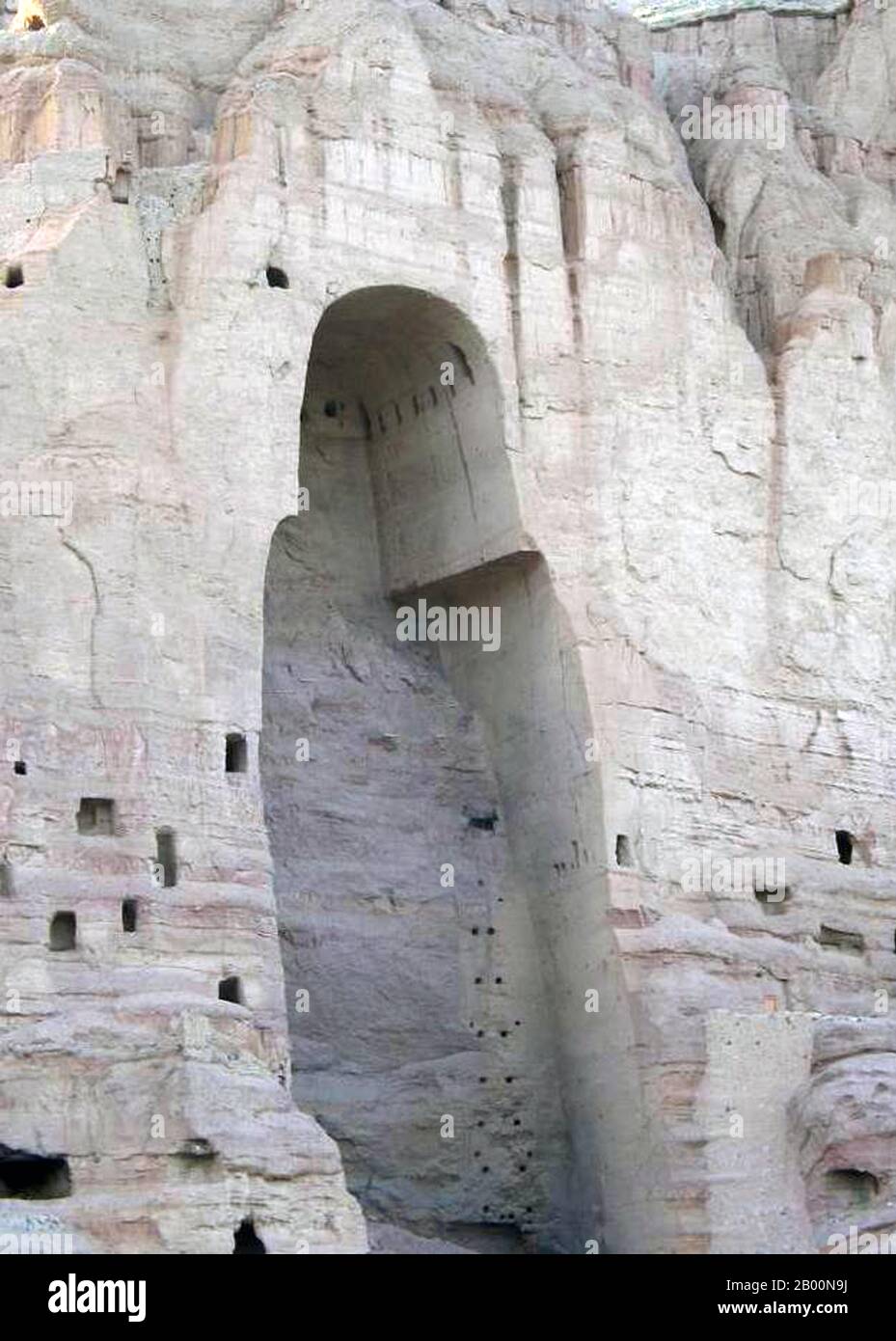 Afghanistan: Bamiyan Buddha cave in 2005 after destruction of Buddha image by Taliban in 2001. The Buddhas of Bamiyan were two 6th century monumental statues of standing buddhas carved into the side of a cliff in the Bamiyan valley in the Hazarajat region of central Afghanistan, situated 230 km (143 miles) northwest of Kabul at an altitude of 2,500 meters (8,202 ft). Built in 507 CE, the larger in 554 CE, the statues represented the classic blended style of Gandhara art. The main bodies were hewn directly from the sandstone cliffs. Stock Photohttps://www.alamy.com/image-license-details/?v=1https://www.alamy.com/afghanistan-bamiyan-buddha-cave-in-2005-after-destruction-of-buddha-image-by-taliban-in-2001-the-buddhas-of-bamiyan-were-two-6th-century-monumental-statues-of-standing-buddhas-carved-into-the-side-of-a-cliff-in-the-bamiyan-valley-in-the-hazarajat-region-of-central-afghanistan-situated-230-km-143-miles-northwest-of-kabul-at-an-altitude-of-2500-meters-8202-ft-built-in-507-ce-the-larger-in-554-ce-the-statues-represented-the-classic-blended-style-of-gandhara-art-the-main-bodies-were-hewn-directly-from-the-sandstone-cliffs-image344224094.html
Afghanistan: Bamiyan Buddha cave in 2005 after destruction of Buddha image by Taliban in 2001. The Buddhas of Bamiyan were two 6th century monumental statues of standing buddhas carved into the side of a cliff in the Bamiyan valley in the Hazarajat region of central Afghanistan, situated 230 km (143 miles) northwest of Kabul at an altitude of 2,500 meters (8,202 ft). Built in 507 CE, the larger in 554 CE, the statues represented the classic blended style of Gandhara art. The main bodies were hewn directly from the sandstone cliffs. Stock Photohttps://www.alamy.com/image-license-details/?v=1https://www.alamy.com/afghanistan-bamiyan-buddha-cave-in-2005-after-destruction-of-buddha-image-by-taliban-in-2001-the-buddhas-of-bamiyan-were-two-6th-century-monumental-statues-of-standing-buddhas-carved-into-the-side-of-a-cliff-in-the-bamiyan-valley-in-the-hazarajat-region-of-central-afghanistan-situated-230-km-143-miles-northwest-of-kabul-at-an-altitude-of-2500-meters-8202-ft-built-in-507-ce-the-larger-in-554-ce-the-statues-represented-the-classic-blended-style-of-gandhara-art-the-main-bodies-were-hewn-directly-from-the-sandstone-cliffs-image344224094.htmlRM2B00N9J–Afghanistan: Bamiyan Buddha cave in 2005 after destruction of Buddha image by Taliban in 2001. The Buddhas of Bamiyan were two 6th century monumental statues of standing buddhas carved into the side of a cliff in the Bamiyan valley in the Hazarajat region of central Afghanistan, situated 230 km (143 miles) northwest of Kabul at an altitude of 2,500 meters (8,202 ft). Built in 507 CE, the larger in 554 CE, the statues represented the classic blended style of Gandhara art. The main bodies were hewn directly from the sandstone cliffs.
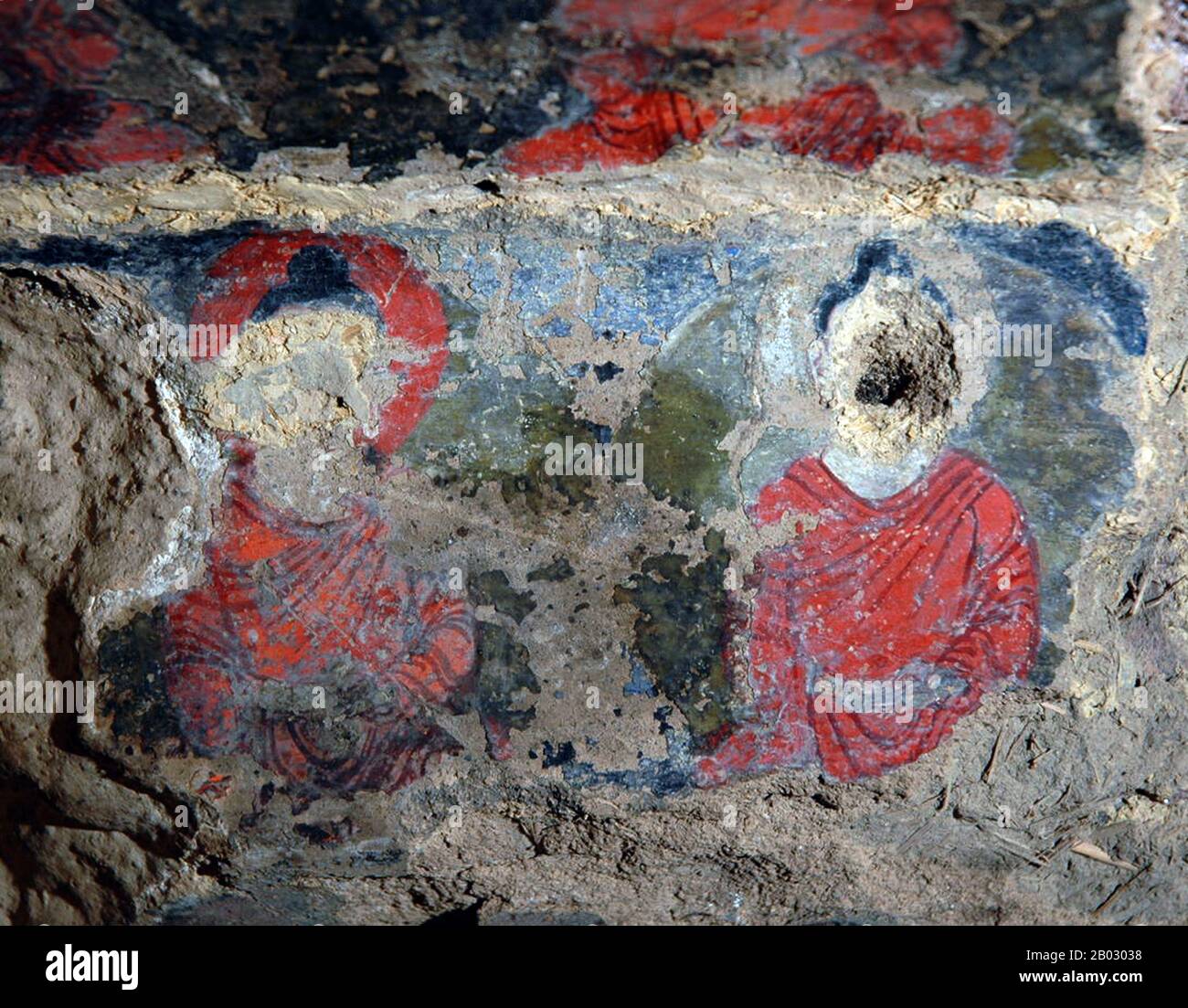 The city of Bamiyan was part of the Buddhist Kushan Empire in the early centuries of the Christian era. After the Kushan Empire fell to the Sassanids, Bamiyan became part of the Kushansha, vassals to the Sassanids. The Hephthalites conquered Bamiyan in the 5th century. After their Khanate was destroyed by the Sassanids and Turks in 565, Bamiyan became the capital of the small Kushano-Hephthalite kingdom until 870, when it was conquered by the Saffarids. The area was conquered by the Ghaznavids in the 11th century. In 1221 the city and its population were completely wiped out by Genghis Khan. Stock Photohttps://www.alamy.com/image-license-details/?v=1https://www.alamy.com/the-city-of-bamiyan-was-part-of-the-buddhist-kushan-empire-in-the-early-centuries-of-the-christian-era-after-the-kushan-empire-fell-to-the-sassanids-bamiyan-became-part-of-the-kushansha-vassals-to-the-sassanids-the-hephthalites-conquered-bamiyan-in-the-5th-century-after-their-khanate-was-destroyed-by-the-sassanids-and-turks-in-565-bamiyan-became-the-capital-of-the-small-kushano-hephthalite-kingdom-until-870-when-it-was-conquered-by-the-saffarids-the-area-was-conquered-by-the-ghaznavids-in-the-11th-century-in-1221-the-city-and-its-population-were-completely-wiped-out-by-genghis-khan-image344273308.html
The city of Bamiyan was part of the Buddhist Kushan Empire in the early centuries of the Christian era. After the Kushan Empire fell to the Sassanids, Bamiyan became part of the Kushansha, vassals to the Sassanids. The Hephthalites conquered Bamiyan in the 5th century. After their Khanate was destroyed by the Sassanids and Turks in 565, Bamiyan became the capital of the small Kushano-Hephthalite kingdom until 870, when it was conquered by the Saffarids. The area was conquered by the Ghaznavids in the 11th century. In 1221 the city and its population were completely wiped out by Genghis Khan. Stock Photohttps://www.alamy.com/image-license-details/?v=1https://www.alamy.com/the-city-of-bamiyan-was-part-of-the-buddhist-kushan-empire-in-the-early-centuries-of-the-christian-era-after-the-kushan-empire-fell-to-the-sassanids-bamiyan-became-part-of-the-kushansha-vassals-to-the-sassanids-the-hephthalites-conquered-bamiyan-in-the-5th-century-after-their-khanate-was-destroyed-by-the-sassanids-and-turks-in-565-bamiyan-became-the-capital-of-the-small-kushano-hephthalite-kingdom-until-870-when-it-was-conquered-by-the-saffarids-the-area-was-conquered-by-the-ghaznavids-in-the-11th-century-in-1221-the-city-and-its-population-were-completely-wiped-out-by-genghis-khan-image344273308.htmlRM2B03038–The city of Bamiyan was part of the Buddhist Kushan Empire in the early centuries of the Christian era. After the Kushan Empire fell to the Sassanids, Bamiyan became part of the Kushansha, vassals to the Sassanids. The Hephthalites conquered Bamiyan in the 5th century. After their Khanate was destroyed by the Sassanids and Turks in 565, Bamiyan became the capital of the small Kushano-Hephthalite kingdom until 870, when it was conquered by the Saffarids. The area was conquered by the Ghaznavids in the 11th century. In 1221 the city and its population were completely wiped out by Genghis Khan.
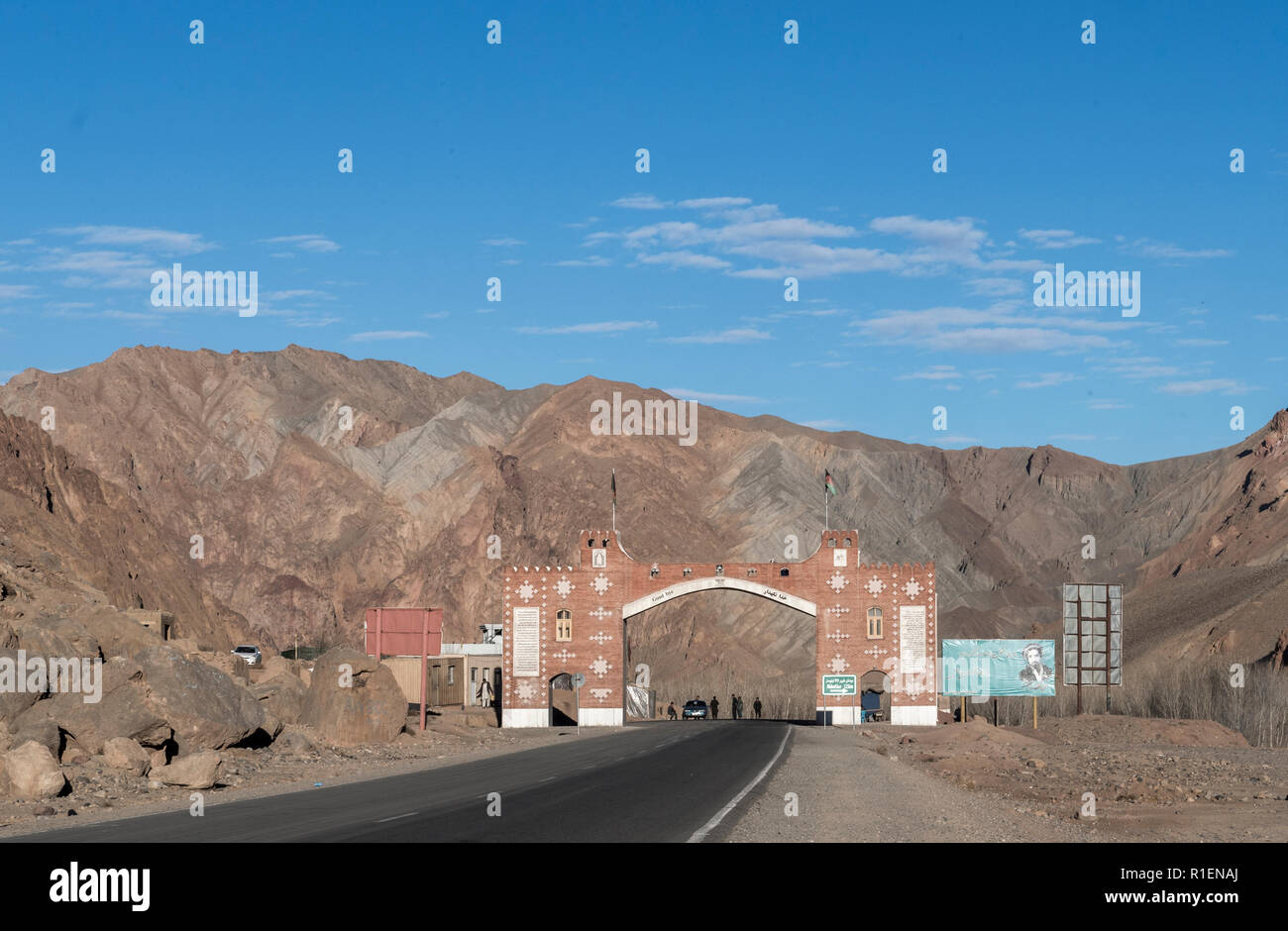 Entrance Gate To The Bamyan Valley With Police Check Point, Bamyan Province, Afghanistan Stock Photohttps://www.alamy.com/image-license-details/?v=1https://www.alamy.com/entrance-gate-to-the-bamyan-valley-with-police-check-point-bamyan-province-afghanistan-image224673530.html
Entrance Gate To The Bamyan Valley With Police Check Point, Bamyan Province, Afghanistan Stock Photohttps://www.alamy.com/image-license-details/?v=1https://www.alamy.com/entrance-gate-to-the-bamyan-valley-with-police-check-point-bamyan-province-afghanistan-image224673530.htmlRMR1ENAJ–Entrance Gate To The Bamyan Valley With Police Check Point, Bamyan Province, Afghanistan
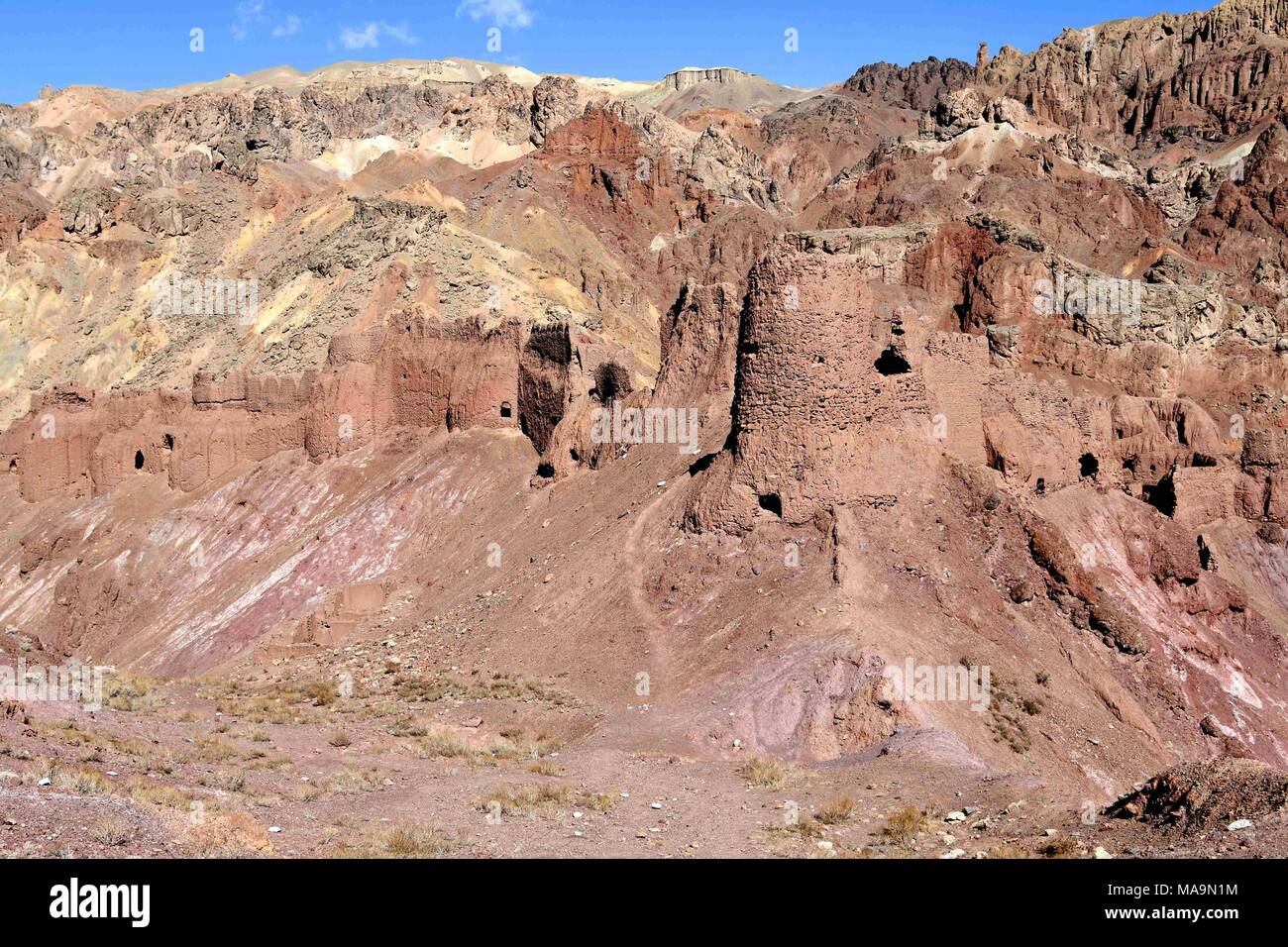 Bamiyan. 28th Mar, 2018. Photo taken on March 28, 2018 shows the Shahr-e-Zuhak, also known as The Red City, in Bamiyan province, Afghanistan. The site, along with other historical sites in Bamiyan, bears witness to the history of the ancient Silk Road. Credit: Dai He/Xinhua/Alamy Live News Stock Photohttps://www.alamy.com/image-license-details/?v=1https://www.alamy.com/bamiyan-28th-mar-2018-photo-taken-on-march-28-2018-shows-the-shahr-e-zuhak-also-known-as-the-red-city-in-bamiyan-province-afghanistan-the-site-along-with-other-historical-sites-in-bamiyan-bears-witness-to-the-history-of-the-ancient-silk-road-credit-dai-hexinhuaalamy-live-news-image178464320.html
Bamiyan. 28th Mar, 2018. Photo taken on March 28, 2018 shows the Shahr-e-Zuhak, also known as The Red City, in Bamiyan province, Afghanistan. The site, along with other historical sites in Bamiyan, bears witness to the history of the ancient Silk Road. Credit: Dai He/Xinhua/Alamy Live News Stock Photohttps://www.alamy.com/image-license-details/?v=1https://www.alamy.com/bamiyan-28th-mar-2018-photo-taken-on-march-28-2018-shows-the-shahr-e-zuhak-also-known-as-the-red-city-in-bamiyan-province-afghanistan-the-site-along-with-other-historical-sites-in-bamiyan-bears-witness-to-the-history-of-the-ancient-silk-road-credit-dai-hexinhuaalamy-live-news-image178464320.htmlRMMA9N1M–Bamiyan. 28th Mar, 2018. Photo taken on March 28, 2018 shows the Shahr-e-Zuhak, also known as The Red City, in Bamiyan province, Afghanistan. The site, along with other historical sites in Bamiyan, bears witness to the history of the ancient Silk Road. Credit: Dai He/Xinhua/Alamy Live News
 Scenery between Kabul and Bamyan (Bamiyan) in Afghanistan. Dusty road through mountain scenery on the southern route between the two cities. Stock Photohttps://www.alamy.com/image-license-details/?v=1https://www.alamy.com/scenery-between-kabul-and-bamyan-bamiyan-in-afghanistan-dusty-road-through-mountain-scenery-on-the-southern-route-between-the-two-cities-image498929666.html
Scenery between Kabul and Bamyan (Bamiyan) in Afghanistan. Dusty road through mountain scenery on the southern route between the two cities. Stock Photohttps://www.alamy.com/image-license-details/?v=1https://www.alamy.com/scenery-between-kabul-and-bamyan-bamiyan-in-afghanistan-dusty-road-through-mountain-scenery-on-the-southern-route-between-the-two-cities-image498929666.htmlRF2KYM5TJ–Scenery between Kabul and Bamyan (Bamiyan) in Afghanistan. Dusty road through mountain scenery on the southern route between the two cities.
 West of the great Buddha niches in Bamiyan's sandstone cliffs, Afghanistan, jutting crags provide homes to families and refugees Stock Photohttps://www.alamy.com/image-license-details/?v=1https://www.alamy.com/stock-photo-west-of-the-great-buddha-niches-in-bamiyans-sandstone-cliffs-afghanistan-25058663.html
West of the great Buddha niches in Bamiyan's sandstone cliffs, Afghanistan, jutting crags provide homes to families and refugees Stock Photohttps://www.alamy.com/image-license-details/?v=1https://www.alamy.com/stock-photo-west-of-the-great-buddha-niches-in-bamiyans-sandstone-cliffs-afghanistan-25058663.htmlRMBCNEG7–West of the great Buddha niches in Bamiyan's sandstone cliffs, Afghanistan, jutting crags provide homes to families and refugees
 220318 -- BAMIYAN, March 18, 2022 -- Photo taken on March 17, 2022 shows the Shahr-e-Zuhak, also known as The Red City, in Bamiyan province, Afghanistan. The site, along with other historical sites in Bamiyan, bears witness to the history of the ancient Silk Road. Photo by /Xinhua AFGHANISTAN-BAMIYAN-SHAHR-E-ZUHAK SaifurahmanxSafi PUBLICATIONxNOTxINxCHN Stock Photohttps://www.alamy.com/image-license-details/?v=1https://www.alamy.com/220318-bamiyan-march-18-2022-photo-taken-on-march-17-2022-shows-the-shahr-e-zuhak-also-known-as-the-red-city-in-bamiyan-province-afghanistan-the-site-along-with-other-historical-sites-in-bamiyan-bears-witness-to-the-history-of-the-ancient-silk-road-photo-by-xinhua-afghanistan-bamiyan-shahr-e-zuhak-saifurahmanxsafi-publicationxnotxinxchn-image565196753.html
220318 -- BAMIYAN, March 18, 2022 -- Photo taken on March 17, 2022 shows the Shahr-e-Zuhak, also known as The Red City, in Bamiyan province, Afghanistan. The site, along with other historical sites in Bamiyan, bears witness to the history of the ancient Silk Road. Photo by /Xinhua AFGHANISTAN-BAMIYAN-SHAHR-E-ZUHAK SaifurahmanxSafi PUBLICATIONxNOTxINxCHN Stock Photohttps://www.alamy.com/image-license-details/?v=1https://www.alamy.com/220318-bamiyan-march-18-2022-photo-taken-on-march-17-2022-shows-the-shahr-e-zuhak-also-known-as-the-red-city-in-bamiyan-province-afghanistan-the-site-along-with-other-historical-sites-in-bamiyan-bears-witness-to-the-history-of-the-ancient-silk-road-photo-by-xinhua-afghanistan-bamiyan-shahr-e-zuhak-saifurahmanxsafi-publicationxnotxinxchn-image565196753.htmlRM2RREX69–220318 -- BAMIYAN, March 18, 2022 -- Photo taken on March 17, 2022 shows the Shahr-e-Zuhak, also known as The Red City, in Bamiyan province, Afghanistan. The site, along with other historical sites in Bamiyan, bears witness to the history of the ancient Silk Road. Photo by /Xinhua AFGHANISTAN-BAMIYAN-SHAHR-E-ZUHAK SaifurahmanxSafi PUBLICATIONxNOTxINxCHN
 (180331) -- BAMIYAN, March 31, 2018 -- Photo taken on March 28, 2018 shows the Shahr-e-Zuhak, also known as The Red City, in Bamiyan province, Afghanistan. The site, along with other historical sites in Bamiyan, bears witness to the history of the ancient Silk Road. ) (zcc) AFGHANISTAN-BAMIYAN-SITES-SHAHR-E-ZUHAK DaixHe PUBLICATIONxNOTxINxCHN Stock Photohttps://www.alamy.com/image-license-details/?v=1https://www.alamy.com/180331-bamiyan-march-31-2018-photo-taken-on-march-28-2018-shows-the-shahr-e-zuhak-also-known-as-the-red-city-in-bamiyan-province-afghanistan-the-site-along-with-other-historical-sites-in-bamiyan-bears-witness-to-the-history-of-the-ancient-silk-road-zcc-afghanistan-bamiyan-sites-shahr-e-zuhak-daixhe-publicationxnotxinxchn-image564250552.html
(180331) -- BAMIYAN, March 31, 2018 -- Photo taken on March 28, 2018 shows the Shahr-e-Zuhak, also known as The Red City, in Bamiyan province, Afghanistan. The site, along with other historical sites in Bamiyan, bears witness to the history of the ancient Silk Road. ) (zcc) AFGHANISTAN-BAMIYAN-SITES-SHAHR-E-ZUHAK DaixHe PUBLICATIONxNOTxINxCHN Stock Photohttps://www.alamy.com/image-license-details/?v=1https://www.alamy.com/180331-bamiyan-march-31-2018-photo-taken-on-march-28-2018-shows-the-shahr-e-zuhak-also-known-as-the-red-city-in-bamiyan-province-afghanistan-the-site-along-with-other-historical-sites-in-bamiyan-bears-witness-to-the-history-of-the-ancient-silk-road-zcc-afghanistan-bamiyan-sites-shahr-e-zuhak-daixhe-publicationxnotxinxchn-image564250552.htmlRM2RNYR9C–(180331) -- BAMIYAN, March 31, 2018 -- Photo taken on March 28, 2018 shows the Shahr-e-Zuhak, also known as The Red City, in Bamiyan province, Afghanistan. The site, along with other historical sites in Bamiyan, bears witness to the history of the ancient Silk Road. ) (zcc) AFGHANISTAN-BAMIYAN-SITES-SHAHR-E-ZUHAK DaixHe PUBLICATIONxNOTxINxCHN
 Afghan Boys Playing Along A Road In The Shahidan Valley, Bamian Province, Afghanistan Stock Photohttps://www.alamy.com/image-license-details/?v=1https://www.alamy.com/stock-photo-afghan-boys-playing-along-a-road-in-the-shahidan-valley-bamian-province-81294398.html
Afghan Boys Playing Along A Road In The Shahidan Valley, Bamian Province, Afghanistan Stock Photohttps://www.alamy.com/image-license-details/?v=1https://www.alamy.com/stock-photo-afghan-boys-playing-along-a-road-in-the-shahidan-valley-bamian-province-81294398.htmlRMEM77RA–Afghan Boys Playing Along A Road In The Shahidan Valley, Bamian Province, Afghanistan
 Afghanistan, Domed sanctuary, UNESCO World Heritage site of Bamiyan, Buddha statue and monastic caves from 5th & 6th century AD Stock Photohttps://www.alamy.com/image-license-details/?v=1https://www.alamy.com/stock-photo-afghanistan-domed-sanctuary-unesco-world-heritage-site-of-bamiyan-11928877.html
Afghanistan, Domed sanctuary, UNESCO World Heritage site of Bamiyan, Buddha statue and monastic caves from 5th & 6th century AD Stock Photohttps://www.alamy.com/image-license-details/?v=1https://www.alamy.com/stock-photo-afghanistan-domed-sanctuary-unesco-world-heritage-site-of-bamiyan-11928877.htmlRMA7XH7X–Afghanistan, Domed sanctuary, UNESCO World Heritage site of Bamiyan, Buddha statue and monastic caves from 5th & 6th century AD
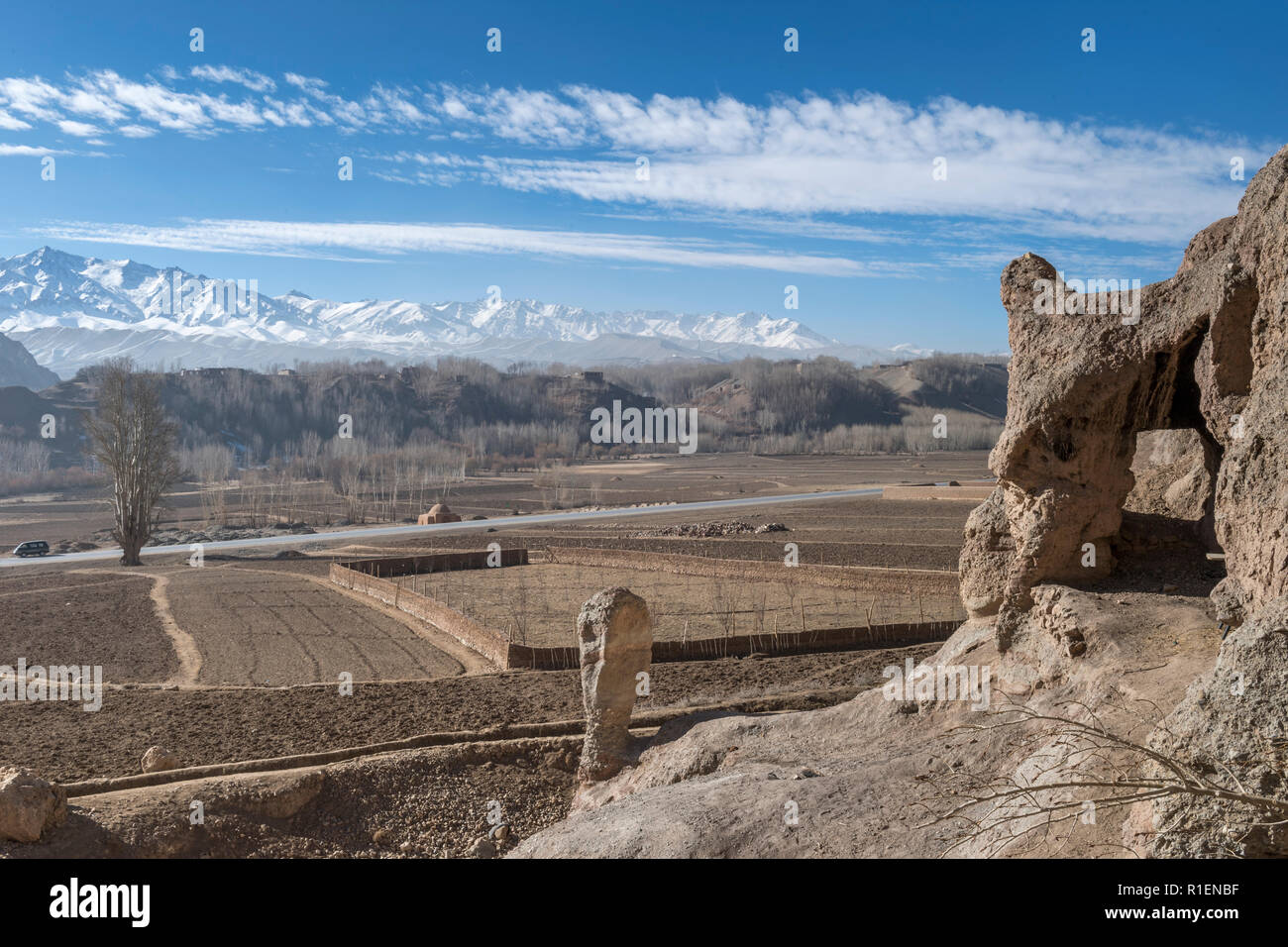 View Of Bamyan Valley In Winter With Snow-Capped Mountains In The Background, Bamyan Province, Afghanistan Stock Photohttps://www.alamy.com/image-license-details/?v=1https://www.alamy.com/view-of-bamyan-valley-in-winter-with-snow-capped-mountains-in-the-background-bamyan-province-afghanistan-image224673555.html
View Of Bamyan Valley In Winter With Snow-Capped Mountains In The Background, Bamyan Province, Afghanistan Stock Photohttps://www.alamy.com/image-license-details/?v=1https://www.alamy.com/view-of-bamyan-valley-in-winter-with-snow-capped-mountains-in-the-background-bamyan-province-afghanistan-image224673555.htmlRMR1ENBF–View Of Bamyan Valley In Winter With Snow-Capped Mountains In The Background, Bamyan Province, Afghanistan
 Bamyan. 28th Mar, 2018. Photo taken on March 28, 2018 shows the Shahr-i-Gholghola or the City of Screams, site of the Sasanian Empire (AD 224-651), in Bamyan province, Afghanistan. The site, along with other historical sites in Bamiyan, bears witness to the history of the ancient Silk Road. Credit: Dai He/Xinhua/Alamy Live News Stock Photohttps://www.alamy.com/image-license-details/?v=1https://www.alamy.com/bamyan-28th-mar-2018-photo-taken-on-march-28-2018-shows-the-shahr-i-gholghola-or-the-city-of-screams-site-of-the-sasanian-empire-ad-224-651-in-bamyan-province-afghanistan-the-site-along-with-other-historical-sites-in-bamiyan-bears-witness-to-the-history-of-the-ancient-silk-road-credit-dai-hexinhuaalamy-live-news-image178335489.html
Bamyan. 28th Mar, 2018. Photo taken on March 28, 2018 shows the Shahr-i-Gholghola or the City of Screams, site of the Sasanian Empire (AD 224-651), in Bamyan province, Afghanistan. The site, along with other historical sites in Bamiyan, bears witness to the history of the ancient Silk Road. Credit: Dai He/Xinhua/Alamy Live News Stock Photohttps://www.alamy.com/image-license-details/?v=1https://www.alamy.com/bamyan-28th-mar-2018-photo-taken-on-march-28-2018-shows-the-shahr-i-gholghola-or-the-city-of-screams-site-of-the-sasanian-empire-ad-224-651-in-bamyan-province-afghanistan-the-site-along-with-other-historical-sites-in-bamiyan-bears-witness-to-the-history-of-the-ancient-silk-road-credit-dai-hexinhuaalamy-live-news-image178335489.htmlRMMA3TMH–Bamyan. 28th Mar, 2018. Photo taken on March 28, 2018 shows the Shahr-i-Gholghola or the City of Screams, site of the Sasanian Empire (AD 224-651), in Bamyan province, Afghanistan. The site, along with other historical sites in Bamiyan, bears witness to the history of the ancient Silk Road. Credit: Dai He/Xinhua/Alamy Live News
 Scenery between Kabul and Bamyan (Bamiyan) in Afghanistan. Dusty road through mountain scenery on the southern route between the two cities. Stock Photohttps://www.alamy.com/image-license-details/?v=1https://www.alamy.com/scenery-between-kabul-and-bamyan-bamiyan-in-afghanistan-dusty-road-through-mountain-scenery-on-the-southern-route-between-the-two-cities-image498929677.html
Scenery between Kabul and Bamyan (Bamiyan) in Afghanistan. Dusty road through mountain scenery on the southern route between the two cities. Stock Photohttps://www.alamy.com/image-license-details/?v=1https://www.alamy.com/scenery-between-kabul-and-bamyan-bamiyan-in-afghanistan-dusty-road-through-mountain-scenery-on-the-southern-route-between-the-two-cities-image498929677.htmlRF2KYM5W1–Scenery between Kabul and Bamyan (Bamiyan) in Afghanistan. Dusty road through mountain scenery on the southern route between the two cities.
 In Bamiyan's Dragon Valley a shrine {centre,right) honors Ali, the prophet Mohammed's son-in-law, for slaying the monster Stock Photohttps://www.alamy.com/image-license-details/?v=1https://www.alamy.com/stock-photo-in-bamiyans-dragon-valley-a-shrine-centreright-honors-ali-the-prophet-25059278.html
In Bamiyan's Dragon Valley a shrine {centre,right) honors Ali, the prophet Mohammed's son-in-law, for slaying the monster Stock Photohttps://www.alamy.com/image-license-details/?v=1https://www.alamy.com/stock-photo-in-bamiyans-dragon-valley-a-shrine-centreright-honors-ali-the-prophet-25059278.htmlRMBCNFA6–In Bamiyan's Dragon Valley a shrine {centre,right) honors Ali, the prophet Mohammed's son-in-law, for slaying the monster
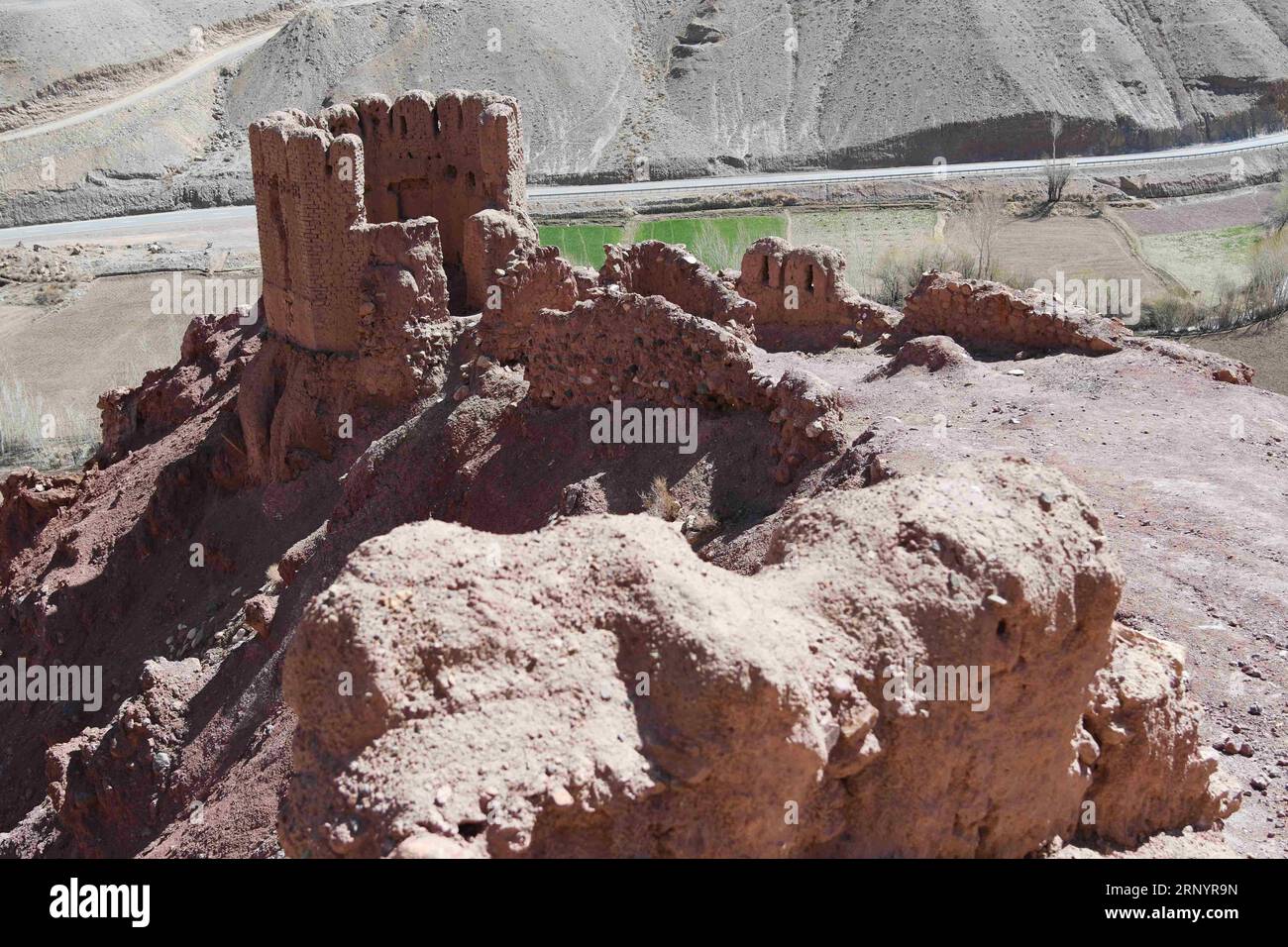 (180331) -- BAMIYAN, March 31, 2018 -- Photo taken on March 28, 2018 shows the Shahr-e-Zuhak, also known as The Red City, in Bamiyan province, Afghanistan. The site, along with other historical sites in Bamiyan, bears witness to the history of the ancient Silk Road. ) (zcc) AFGHANISTAN-BAMIYAN-SITES-SHAHR-E-ZUHAK DaixHe PUBLICATIONxNOTxINxCHN Stock Photohttps://www.alamy.com/image-license-details/?v=1https://www.alamy.com/180331-bamiyan-march-31-2018-photo-taken-on-march-28-2018-shows-the-shahr-e-zuhak-also-known-as-the-red-city-in-bamiyan-province-afghanistan-the-site-along-with-other-historical-sites-in-bamiyan-bears-witness-to-the-history-of-the-ancient-silk-road-zcc-afghanistan-bamiyan-sites-shahr-e-zuhak-daixhe-publicationxnotxinxchn-image564250561.html
(180331) -- BAMIYAN, March 31, 2018 -- Photo taken on March 28, 2018 shows the Shahr-e-Zuhak, also known as The Red City, in Bamiyan province, Afghanistan. The site, along with other historical sites in Bamiyan, bears witness to the history of the ancient Silk Road. ) (zcc) AFGHANISTAN-BAMIYAN-SITES-SHAHR-E-ZUHAK DaixHe PUBLICATIONxNOTxINxCHN Stock Photohttps://www.alamy.com/image-license-details/?v=1https://www.alamy.com/180331-bamiyan-march-31-2018-photo-taken-on-march-28-2018-shows-the-shahr-e-zuhak-also-known-as-the-red-city-in-bamiyan-province-afghanistan-the-site-along-with-other-historical-sites-in-bamiyan-bears-witness-to-the-history-of-the-ancient-silk-road-zcc-afghanistan-bamiyan-sites-shahr-e-zuhak-daixhe-publicationxnotxinxchn-image564250561.htmlRM2RNYR9N–(180331) -- BAMIYAN, March 31, 2018 -- Photo taken on March 28, 2018 shows the Shahr-e-Zuhak, also known as The Red City, in Bamiyan province, Afghanistan. The site, along with other historical sites in Bamiyan, bears witness to the history of the ancient Silk Road. ) (zcc) AFGHANISTAN-BAMIYAN-SITES-SHAHR-E-ZUHAK DaixHe PUBLICATIONxNOTxINxCHN
 Afghanistan, Domed sanctuary, UNESCO World Heritage site of Bamiyan, Buddha statue and monastic caves from 5th & 6th century AD Stock Photohttps://www.alamy.com/image-license-details/?v=1https://www.alamy.com/stock-photo-afghanistan-domed-sanctuary-unesco-world-heritage-site-of-bamiyan-21308148.html
Afghanistan, Domed sanctuary, UNESCO World Heritage site of Bamiyan, Buddha statue and monastic caves from 5th & 6th century AD Stock Photohttps://www.alamy.com/image-license-details/?v=1https://www.alamy.com/stock-photo-afghanistan-domed-sanctuary-unesco-world-heritage-site-of-bamiyan-21308148.htmlRMB6JJN8–Afghanistan, Domed sanctuary, UNESCO World Heritage site of Bamiyan, Buddha statue and monastic caves from 5th & 6th century AD
 Male Student With Backpack Walking Back From School With Troglodyte Houses In The Cliff On His Right, Bamyan, Afghanistan Stock Photohttps://www.alamy.com/image-license-details/?v=1https://www.alamy.com/male-student-with-backpack-walking-back-from-school-with-troglodyte-houses-in-the-cliff-on-his-right-bamyan-afghanistan-image224673544.html
Male Student With Backpack Walking Back From School With Troglodyte Houses In The Cliff On His Right, Bamyan, Afghanistan Stock Photohttps://www.alamy.com/image-license-details/?v=1https://www.alamy.com/male-student-with-backpack-walking-back-from-school-with-troglodyte-houses-in-the-cliff-on-his-right-bamyan-afghanistan-image224673544.htmlRMR1ENB4–Male Student With Backpack Walking Back From School With Troglodyte Houses In The Cliff On His Right, Bamyan, Afghanistan
 Bamyan. 28th Mar, 2018. Photo taken on March 28, 2018 shows the Shahr-i-Gholghola or the City of Screams, site of the Sasanian Empire (AD 224-651), in Bamyan province, Afghanistan. The site, along with other historical sites in Bamiyan, bears witness to the history of the ancient Silk Road. Credit: Dai He/Xinhua/Alamy Live News Stock Photohttps://www.alamy.com/image-license-details/?v=1https://www.alamy.com/bamyan-28th-mar-2018-photo-taken-on-march-28-2018-shows-the-shahr-i-gholghola-or-the-city-of-screams-site-of-the-sasanian-empire-ad-224-651-in-bamyan-province-afghanistan-the-site-along-with-other-historical-sites-in-bamiyan-bears-witness-to-the-history-of-the-ancient-silk-road-credit-dai-hexinhuaalamy-live-news-image178335545.html
Bamyan. 28th Mar, 2018. Photo taken on March 28, 2018 shows the Shahr-i-Gholghola or the City of Screams, site of the Sasanian Empire (AD 224-651), in Bamyan province, Afghanistan. The site, along with other historical sites in Bamiyan, bears witness to the history of the ancient Silk Road. Credit: Dai He/Xinhua/Alamy Live News Stock Photohttps://www.alamy.com/image-license-details/?v=1https://www.alamy.com/bamyan-28th-mar-2018-photo-taken-on-march-28-2018-shows-the-shahr-i-gholghola-or-the-city-of-screams-site-of-the-sasanian-empire-ad-224-651-in-bamyan-province-afghanistan-the-site-along-with-other-historical-sites-in-bamiyan-bears-witness-to-the-history-of-the-ancient-silk-road-credit-dai-hexinhuaalamy-live-news-image178335545.htmlRMMA3TPH–Bamyan. 28th Mar, 2018. Photo taken on March 28, 2018 shows the Shahr-i-Gholghola or the City of Screams, site of the Sasanian Empire (AD 224-651), in Bamyan province, Afghanistan. The site, along with other historical sites in Bamiyan, bears witness to the history of the ancient Silk Road. Credit: Dai He/Xinhua/Alamy Live News
 The road passes through a narrow, rocky gorge on the southern route between Kabul and Bamyan (Bamiyan) in Afghanistan. Stock Photohttps://www.alamy.com/image-license-details/?v=1https://www.alamy.com/the-road-passes-through-a-narrow-rocky-gorge-on-the-southern-route-between-kabul-and-bamyan-bamiyan-in-afghanistan-image498929724.html
The road passes through a narrow, rocky gorge on the southern route between Kabul and Bamyan (Bamiyan) in Afghanistan. Stock Photohttps://www.alamy.com/image-license-details/?v=1https://www.alamy.com/the-road-passes-through-a-narrow-rocky-gorge-on-the-southern-route-between-kabul-and-bamyan-bamiyan-in-afghanistan-image498929724.htmlRF2KYM5XM–The road passes through a narrow, rocky gorge on the southern route between Kabul and Bamyan (Bamiyan) in Afghanistan.
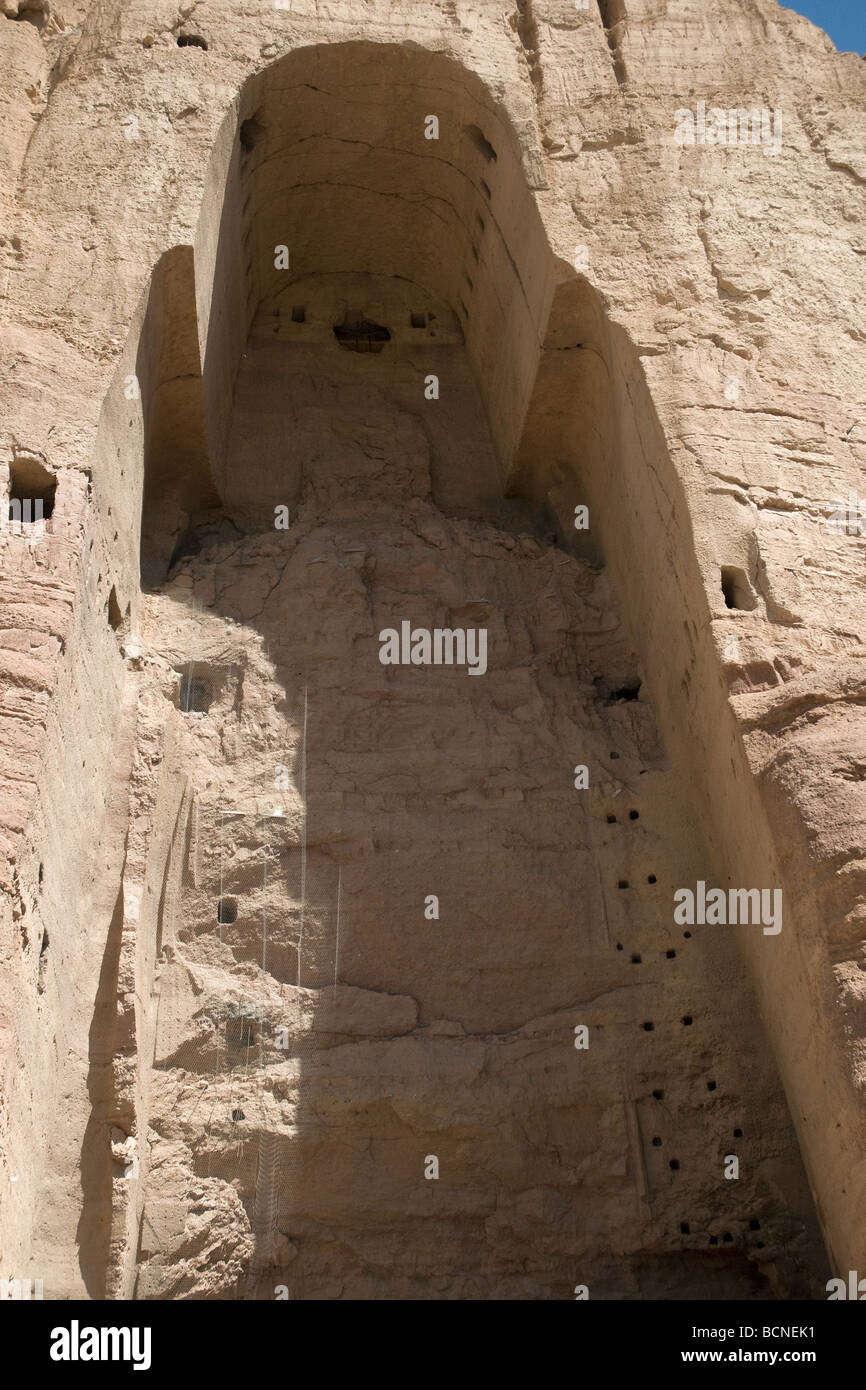 Vast niche in Bamiyan's sandstone cliffs; until 2001 it held the Big Buddha, one of two giant figures the Taliban destroyed Stock Photohttps://www.alamy.com/image-license-details/?v=1https://www.alamy.com/stock-photo-vast-niche-in-bamiyans-sandstone-cliffs-until-2001-it-held-the-big-25058741.html
Vast niche in Bamiyan's sandstone cliffs; until 2001 it held the Big Buddha, one of two giant figures the Taliban destroyed Stock Photohttps://www.alamy.com/image-license-details/?v=1https://www.alamy.com/stock-photo-vast-niche-in-bamiyans-sandstone-cliffs-until-2001-it-held-the-big-25058741.htmlRMBCNEK1–Vast niche in Bamiyan's sandstone cliffs; until 2001 it held the Big Buddha, one of two giant figures the Taliban destroyed
 (180331) -- BAMIYAN, March 31, 2018 -- Photo taken on March 28, 2018 shows the Shahr-e-Zuhak, also known as The Red City, in Bamiyan province, Afghanistan. The site, along with other historical sites in Bamiyan, bears witness to the history of the ancient Silk Road. ) (zcc) AFGHANISTAN-BAMIYAN-SITES-SHAHR-E-ZUHAK DaixHe PUBLICATIONxNOTxINxCHN Stock Photohttps://www.alamy.com/image-license-details/?v=1https://www.alamy.com/180331-bamiyan-march-31-2018-photo-taken-on-march-28-2018-shows-the-shahr-e-zuhak-also-known-as-the-red-city-in-bamiyan-province-afghanistan-the-site-along-with-other-historical-sites-in-bamiyan-bears-witness-to-the-history-of-the-ancient-silk-road-zcc-afghanistan-bamiyan-sites-shahr-e-zuhak-daixhe-publicationxnotxinxchn-image564250589.html
(180331) -- BAMIYAN, March 31, 2018 -- Photo taken on March 28, 2018 shows the Shahr-e-Zuhak, also known as The Red City, in Bamiyan province, Afghanistan. The site, along with other historical sites in Bamiyan, bears witness to the history of the ancient Silk Road. ) (zcc) AFGHANISTAN-BAMIYAN-SITES-SHAHR-E-ZUHAK DaixHe PUBLICATIONxNOTxINxCHN Stock Photohttps://www.alamy.com/image-license-details/?v=1https://www.alamy.com/180331-bamiyan-march-31-2018-photo-taken-on-march-28-2018-shows-the-shahr-e-zuhak-also-known-as-the-red-city-in-bamiyan-province-afghanistan-the-site-along-with-other-historical-sites-in-bamiyan-bears-witness-to-the-history-of-the-ancient-silk-road-zcc-afghanistan-bamiyan-sites-shahr-e-zuhak-daixhe-publicationxnotxinxchn-image564250589.htmlRM2RNYRAN–(180331) -- BAMIYAN, March 31, 2018 -- Photo taken on March 28, 2018 shows the Shahr-e-Zuhak, also known as The Red City, in Bamiyan province, Afghanistan. The site, along with other historical sites in Bamiyan, bears witness to the history of the ancient Silk Road. ) (zcc) AFGHANISTAN-BAMIYAN-SITES-SHAHR-E-ZUHAK DaixHe PUBLICATIONxNOTxINxCHN
 Afghanistan, Domed sanctuary, UNESCO World Heritage site of Bamiyan, Buddha statue and monastic caves Stock Photohttps://www.alamy.com/image-license-details/?v=1https://www.alamy.com/stock-photo-afghanistan-domed-sanctuary-unesco-world-heritage-site-of-bamiyan-11928875.html
Afghanistan, Domed sanctuary, UNESCO World Heritage site of Bamiyan, Buddha statue and monastic caves Stock Photohttps://www.alamy.com/image-license-details/?v=1https://www.alamy.com/stock-photo-afghanistan-domed-sanctuary-unesco-world-heritage-site-of-bamiyan-11928875.htmlRMA7XH7T–Afghanistan, Domed sanctuary, UNESCO World Heritage site of Bamiyan, Buddha statue and monastic caves
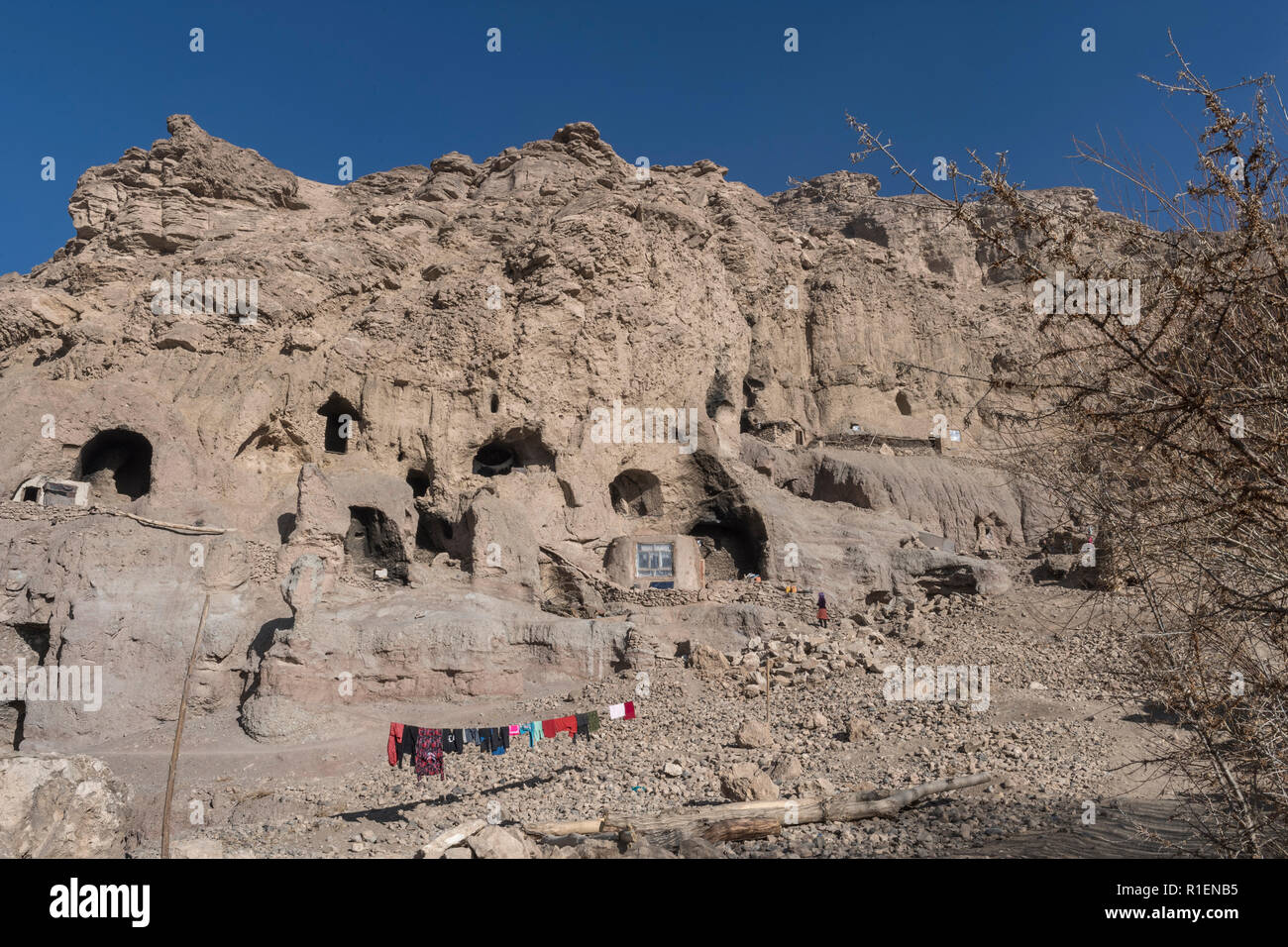 Troglodyte Village With Laundry Drying In The Foreground Near Bamyan, Bamyan Province, Afghanistan Stock Photohttps://www.alamy.com/image-license-details/?v=1https://www.alamy.com/troglodyte-village-with-laundry-drying-in-the-foreground-near-bamyan-bamyan-province-afghanistan-image224673545.html
Troglodyte Village With Laundry Drying In The Foreground Near Bamyan, Bamyan Province, Afghanistan Stock Photohttps://www.alamy.com/image-license-details/?v=1https://www.alamy.com/troglodyte-village-with-laundry-drying-in-the-foreground-near-bamyan-bamyan-province-afghanistan-image224673545.htmlRMR1ENB5–Troglodyte Village With Laundry Drying In The Foreground Near Bamyan, Bamyan Province, Afghanistan
 Bamyan. 28th Mar, 2018. Photo taken on March 28, 2018 shows the Shahr-i-Gholghola or the City of Screams, site of the Sasanian Empire (AD 224-651), in Bamyan province, Afghanistan. The site, along with other historical sites in Bamiyan, bears witness to the history of the ancient Silk Road. Credit: Dai He/Xinhua/Alamy Live News Stock Photohttps://www.alamy.com/image-license-details/?v=1https://www.alamy.com/bamyan-28th-mar-2018-photo-taken-on-march-28-2018-shows-the-shahr-i-gholghola-or-the-city-of-screams-site-of-the-sasanian-empire-ad-224-651-in-bamyan-province-afghanistan-the-site-along-with-other-historical-sites-in-bamiyan-bears-witness-to-the-history-of-the-ancient-silk-road-credit-dai-hexinhuaalamy-live-news-image178335790.html
Bamyan. 28th Mar, 2018. Photo taken on March 28, 2018 shows the Shahr-i-Gholghola or the City of Screams, site of the Sasanian Empire (AD 224-651), in Bamyan province, Afghanistan. The site, along with other historical sites in Bamiyan, bears witness to the history of the ancient Silk Road. Credit: Dai He/Xinhua/Alamy Live News Stock Photohttps://www.alamy.com/image-license-details/?v=1https://www.alamy.com/bamyan-28th-mar-2018-photo-taken-on-march-28-2018-shows-the-shahr-i-gholghola-or-the-city-of-screams-site-of-the-sasanian-empire-ad-224-651-in-bamyan-province-afghanistan-the-site-along-with-other-historical-sites-in-bamiyan-bears-witness-to-the-history-of-the-ancient-silk-road-credit-dai-hexinhuaalamy-live-news-image178335790.htmlRMMA3W3A–Bamyan. 28th Mar, 2018. Photo taken on March 28, 2018 shows the Shahr-i-Gholghola or the City of Screams, site of the Sasanian Empire (AD 224-651), in Bamyan province, Afghanistan. The site, along with other historical sites in Bamiyan, bears witness to the history of the ancient Silk Road. Credit: Dai He/Xinhua/Alamy Live News
 Remains Of Fortified Tower On A Hill With Leafless Trees In The Foreground Near Bamyan In Winter, Bamyan Province, Afghanistan Stock Photohttps://www.alamy.com/image-license-details/?v=1https://www.alamy.com/remains-of-fortified-tower-on-a-hill-with-leafless-trees-in-the-foreground-near-bamyan-in-winter-bamyan-province-afghanistan-image224673580.html
Remains Of Fortified Tower On A Hill With Leafless Trees In The Foreground Near Bamyan In Winter, Bamyan Province, Afghanistan Stock Photohttps://www.alamy.com/image-license-details/?v=1https://www.alamy.com/remains-of-fortified-tower-on-a-hill-with-leafless-trees-in-the-foreground-near-bamyan-in-winter-bamyan-province-afghanistan-image224673580.htmlRMR1ENCC–Remains Of Fortified Tower On A Hill With Leafless Trees In The Foreground Near Bamyan In Winter, Bamyan Province, Afghanistan
 Between Kabul and Bamyan (Bamiyan) / Afghanistan: A Kamaz truck on a dusty road, the southern route from Kabul to Bamyan (Bamiyan). Stock Photohttps://www.alamy.com/image-license-details/?v=1https://www.alamy.com/between-kabul-and-bamyan-bamiyan-afghanistan-a-kamaz-truck-on-a-dusty-road-the-southern-route-from-kabul-to-bamyan-bamiyan-image498929541.html
Between Kabul and Bamyan (Bamiyan) / Afghanistan: A Kamaz truck on a dusty road, the southern route from Kabul to Bamyan (Bamiyan). Stock Photohttps://www.alamy.com/image-license-details/?v=1https://www.alamy.com/between-kabul-and-bamyan-bamiyan-afghanistan-a-kamaz-truck-on-a-dusty-road-the-southern-route-from-kabul-to-bamyan-bamiyan-image498929541.htmlRF2KYM5M5–Between Kabul and Bamyan (Bamiyan) / Afghanistan: A Kamaz truck on a dusty road, the southern route from Kabul to Bamyan (Bamiyan).
 Yakawlang, Bamyan (Bamiyan) Province / Afghanistan: Trucks parked in Yakawlang in Central Afghanistan. People walk along the dirt road. Stock Photohttps://www.alamy.com/image-license-details/?v=1https://www.alamy.com/yakawlang-bamyan-bamiyan-province-afghanistan-trucks-parked-in-yakawlang-in-central-afghanistan-people-walk-along-the-dirt-road-image499156138.html
Yakawlang, Bamyan (Bamiyan) Province / Afghanistan: Trucks parked in Yakawlang in Central Afghanistan. People walk along the dirt road. Stock Photohttps://www.alamy.com/image-license-details/?v=1https://www.alamy.com/yakawlang-bamyan-bamiyan-province-afghanistan-trucks-parked-in-yakawlang-in-central-afghanistan-people-walk-along-the-dirt-road-image499156138.htmlRF2M02EMX–Yakawlang, Bamyan (Bamiyan) Province / Afghanistan: Trucks parked in Yakawlang in Central Afghanistan. People walk along the dirt road.
 Remnants of 5th-century decoration close to the niche of the smaller of two giant Buddhas carved into Bamiyan's sandstone cliffs Stock Photohttps://www.alamy.com/image-license-details/?v=1https://www.alamy.com/stock-photo-remnants-of-5th-century-decoration-close-to-the-niche-of-the-smaller-25058853.html
Remnants of 5th-century decoration close to the niche of the smaller of two giant Buddhas carved into Bamiyan's sandstone cliffs Stock Photohttps://www.alamy.com/image-license-details/?v=1https://www.alamy.com/stock-photo-remnants-of-5th-century-decoration-close-to-the-niche-of-the-smaller-25058853.htmlRMBCNER1–Remnants of 5th-century decoration close to the niche of the smaller of two giant Buddhas carved into Bamiyan's sandstone cliffs
 The main street of Syadara (Siyah Darah) in Bamyan (Bamiyan) Province, Afghanistan. Dirt road with houses in a village in Central Afghanistan. Stock Photohttps://www.alamy.com/image-license-details/?v=1https://www.alamy.com/the-main-street-of-syadara-siyah-darah-in-bamyan-bamiyan-province-afghanistan-dirt-road-with-houses-in-a-village-in-central-afghanistan-image499156203.html
The main street of Syadara (Siyah Darah) in Bamyan (Bamiyan) Province, Afghanistan. Dirt road with houses in a village in Central Afghanistan. Stock Photohttps://www.alamy.com/image-license-details/?v=1https://www.alamy.com/the-main-street-of-syadara-siyah-darah-in-bamyan-bamiyan-province-afghanistan-dirt-road-with-houses-in-a-village-in-central-afghanistan-image499156203.htmlRF2M02ER7–The main street of Syadara (Siyah Darah) in Bamyan (Bamiyan) Province, Afghanistan. Dirt road with houses in a village in Central Afghanistan.
 Village between Kabul and Bamyan (Bamiyan) / Afghanistan: A man walks along the road through this remote village in central Afghanistan. Stock Photohttps://www.alamy.com/image-license-details/?v=1https://www.alamy.com/village-between-kabul-and-bamyan-bamiyan-afghanistan-a-man-walks-along-the-road-through-this-remote-village-in-central-afghanistan-image498929478.html
Village between Kabul and Bamyan (Bamiyan) / Afghanistan: A man walks along the road through this remote village in central Afghanistan. Stock Photohttps://www.alamy.com/image-license-details/?v=1https://www.alamy.com/village-between-kabul-and-bamyan-bamiyan-afghanistan-a-man-walks-along-the-road-through-this-remote-village-in-central-afghanistan-image498929478.htmlRF2KYM5HX–Village between Kabul and Bamyan (Bamiyan) / Afghanistan: A man walks along the road through this remote village in central Afghanistan.
 (180331) -- BAMIYAN, March 31, 2018 -- Photo taken on March 28, 2018 shows the Shahr-e-Zuhak, also known as The Red City, in Bamiyan province, Afghanistan. The site, along with other historical sites in Bamiyan, bears witness to the history of the ancient Silk Road. ) (zcc) AFGHANISTAN-BAMIYAN-SITES-SHAHR-E-ZUHAK DaixHe PUBLICATIONxNOTxINxCHN Stock Photohttps://www.alamy.com/image-license-details/?v=1https://www.alamy.com/180331-bamiyan-march-31-2018-photo-taken-on-march-28-2018-shows-the-shahr-e-zuhak-also-known-as-the-red-city-in-bamiyan-province-afghanistan-the-site-along-with-other-historical-sites-in-bamiyan-bears-witness-to-the-history-of-the-ancient-silk-road-zcc-afghanistan-bamiyan-sites-shahr-e-zuhak-daixhe-publicationxnotxinxchn-image564250580.html
(180331) -- BAMIYAN, March 31, 2018 -- Photo taken on March 28, 2018 shows the Shahr-e-Zuhak, also known as The Red City, in Bamiyan province, Afghanistan. The site, along with other historical sites in Bamiyan, bears witness to the history of the ancient Silk Road. ) (zcc) AFGHANISTAN-BAMIYAN-SITES-SHAHR-E-ZUHAK DaixHe PUBLICATIONxNOTxINxCHN Stock Photohttps://www.alamy.com/image-license-details/?v=1https://www.alamy.com/180331-bamiyan-march-31-2018-photo-taken-on-march-28-2018-shows-the-shahr-e-zuhak-also-known-as-the-red-city-in-bamiyan-province-afghanistan-the-site-along-with-other-historical-sites-in-bamiyan-bears-witness-to-the-history-of-the-ancient-silk-road-zcc-afghanistan-bamiyan-sites-shahr-e-zuhak-daixhe-publicationxnotxinxchn-image564250580.htmlRM2RNYRAC–(180331) -- BAMIYAN, March 31, 2018 -- Photo taken on March 28, 2018 shows the Shahr-e-Zuhak, also known as The Red City, in Bamiyan province, Afghanistan. The site, along with other historical sites in Bamiyan, bears witness to the history of the ancient Silk Road. ) (zcc) AFGHANISTAN-BAMIYAN-SITES-SHAHR-E-ZUHAK DaixHe PUBLICATIONxNOTxINxCHN
 Afghanistan, Monastic Cave blackened by smoke damage due to centuries of inhabitants, UNESCO World Heritage site of Bamiyan Stock Photohttps://www.alamy.com/image-license-details/?v=1https://www.alamy.com/stock-photo-afghanistan-monastic-cave-blackened-by-smoke-damage-due-to-centuries-11928866.html
Afghanistan, Monastic Cave blackened by smoke damage due to centuries of inhabitants, UNESCO World Heritage site of Bamiyan Stock Photohttps://www.alamy.com/image-license-details/?v=1https://www.alamy.com/stock-photo-afghanistan-monastic-cave-blackened-by-smoke-damage-due-to-centuries-11928866.htmlRMA7XH6Y–Afghanistan, Monastic Cave blackened by smoke damage due to centuries of inhabitants, UNESCO World Heritage site of Bamiyan
 Bamyan. 28th Mar, 2018. Photo taken on March 28, 2018 shows the Shahr-i-Gholghola or the City of Screams, site of the Sasanian Empire (AD 224-651), in Bamyan province, Afghanistan. The site, along with other historical sites in Bamiyan, bears witness to the history of the ancient Silk Road. Credit: Dai He/Xinhua/Alamy Live News Stock Photohttps://www.alamy.com/image-license-details/?v=1https://www.alamy.com/bamyan-28th-mar-2018-photo-taken-on-march-28-2018-shows-the-shahr-i-gholghola-or-the-city-of-screams-site-of-the-sasanian-empire-ad-224-651-in-bamyan-province-afghanistan-the-site-along-with-other-historical-sites-in-bamiyan-bears-witness-to-the-history-of-the-ancient-silk-road-credit-dai-hexinhuaalamy-live-news-image178335594.html
Bamyan. 28th Mar, 2018. Photo taken on March 28, 2018 shows the Shahr-i-Gholghola or the City of Screams, site of the Sasanian Empire (AD 224-651), in Bamyan province, Afghanistan. The site, along with other historical sites in Bamiyan, bears witness to the history of the ancient Silk Road. Credit: Dai He/Xinhua/Alamy Live News Stock Photohttps://www.alamy.com/image-license-details/?v=1https://www.alamy.com/bamyan-28th-mar-2018-photo-taken-on-march-28-2018-shows-the-shahr-i-gholghola-or-the-city-of-screams-site-of-the-sasanian-empire-ad-224-651-in-bamyan-province-afghanistan-the-site-along-with-other-historical-sites-in-bamiyan-bears-witness-to-the-history-of-the-ancient-silk-road-credit-dai-hexinhuaalamy-live-news-image178335594.htmlRMMA3TTA–Bamyan. 28th Mar, 2018. Photo taken on March 28, 2018 shows the Shahr-i-Gholghola or the City of Screams, site of the Sasanian Empire (AD 224-651), in Bamyan province, Afghanistan. The site, along with other historical sites in Bamiyan, bears witness to the history of the ancient Silk Road. Credit: Dai He/Xinhua/Alamy Live News